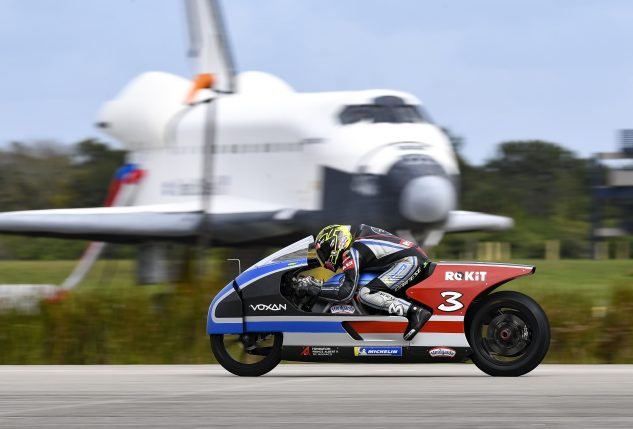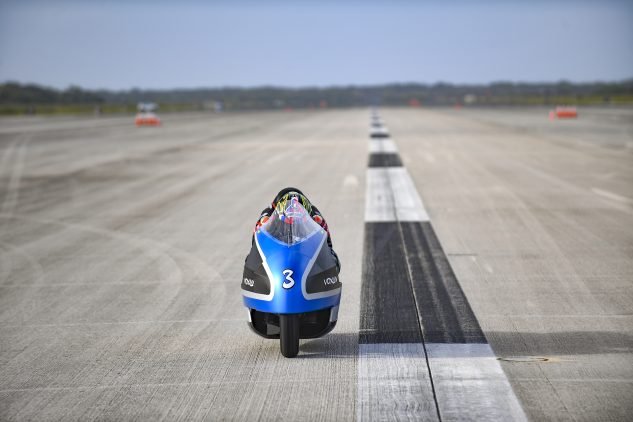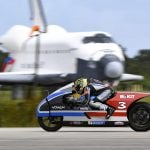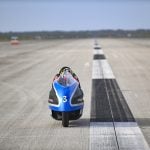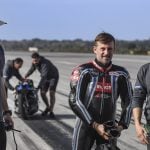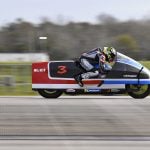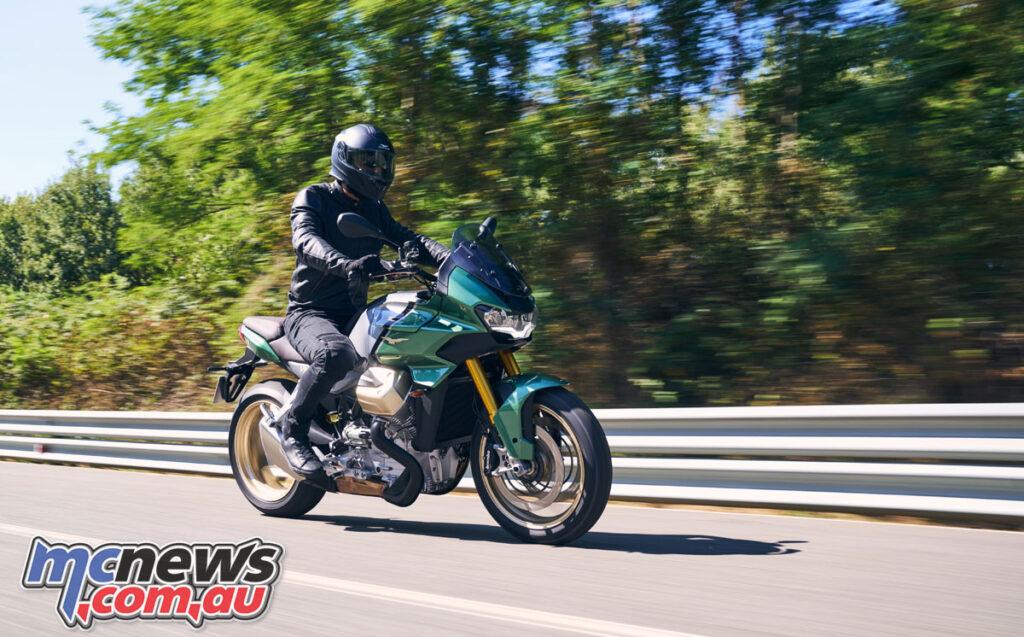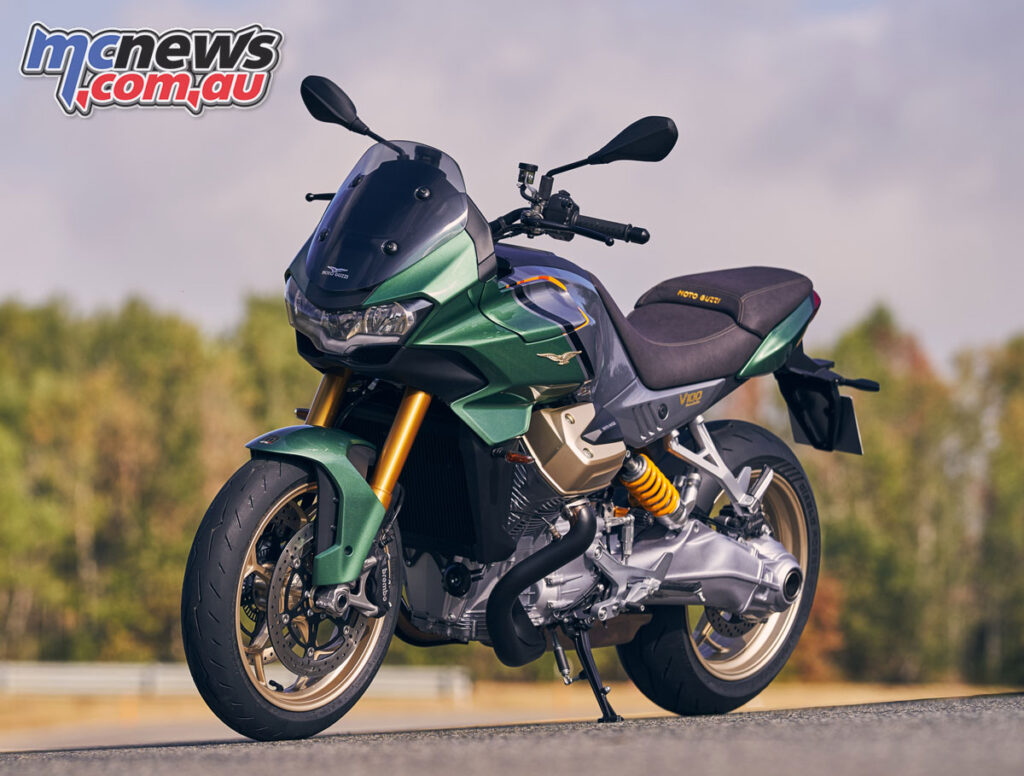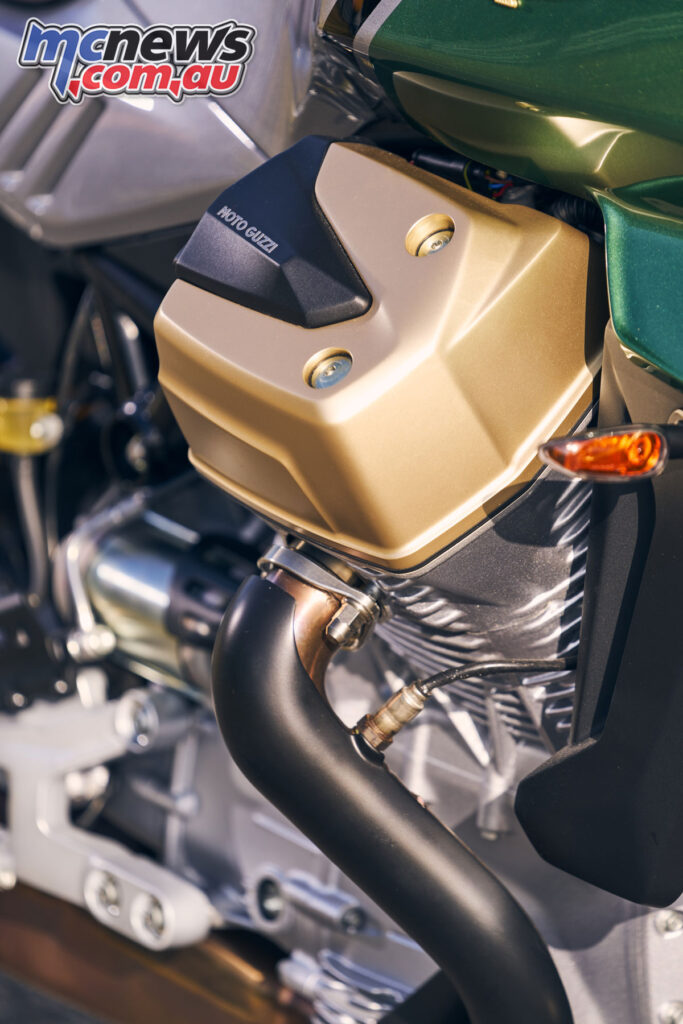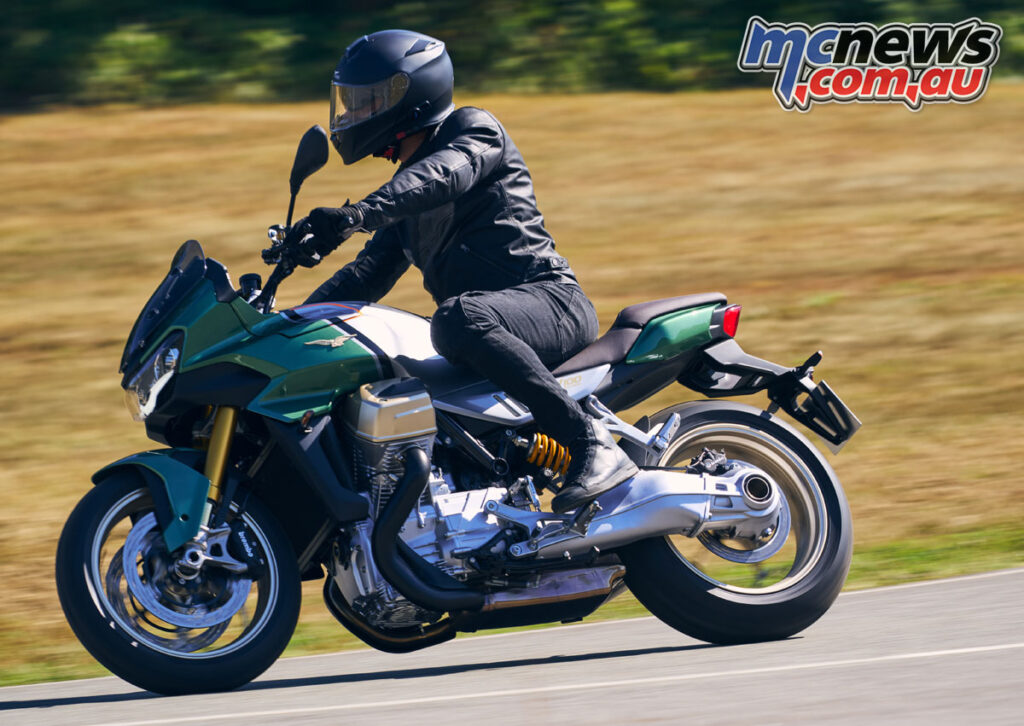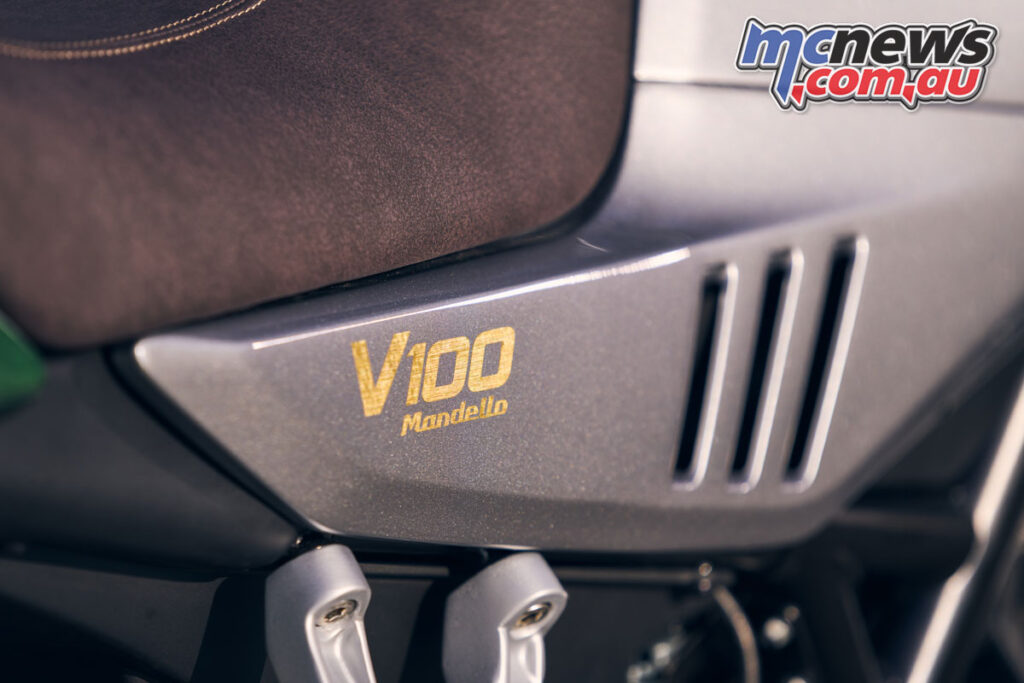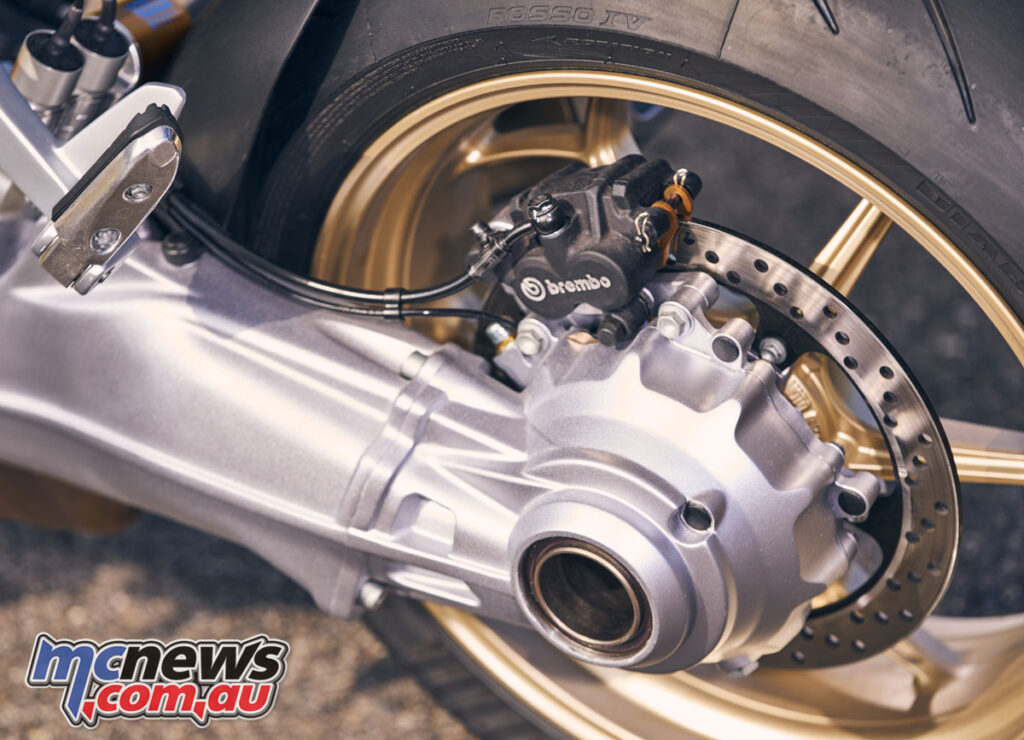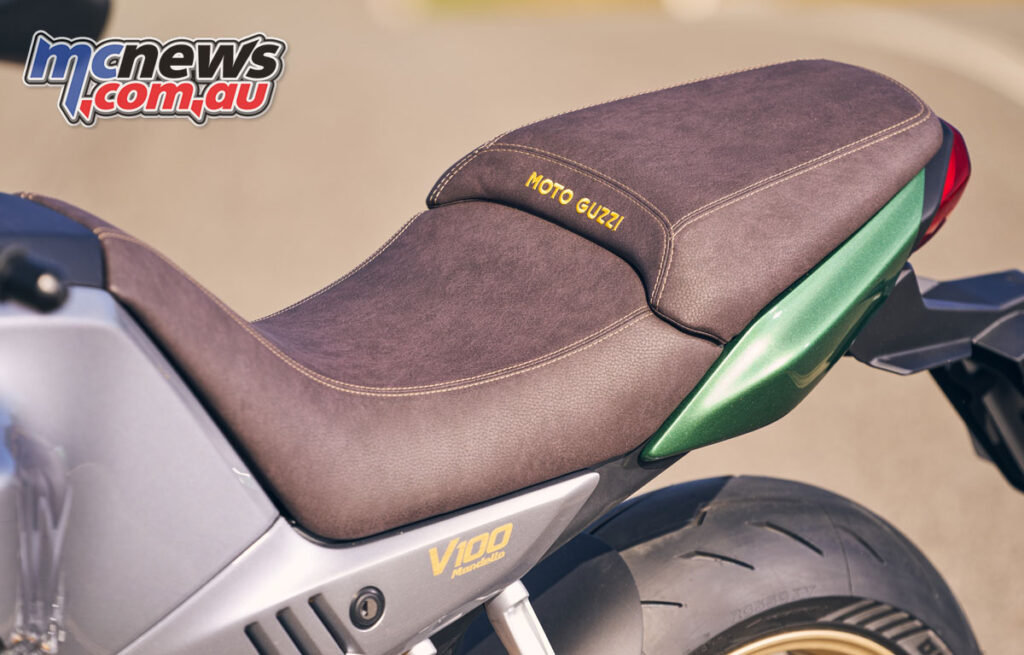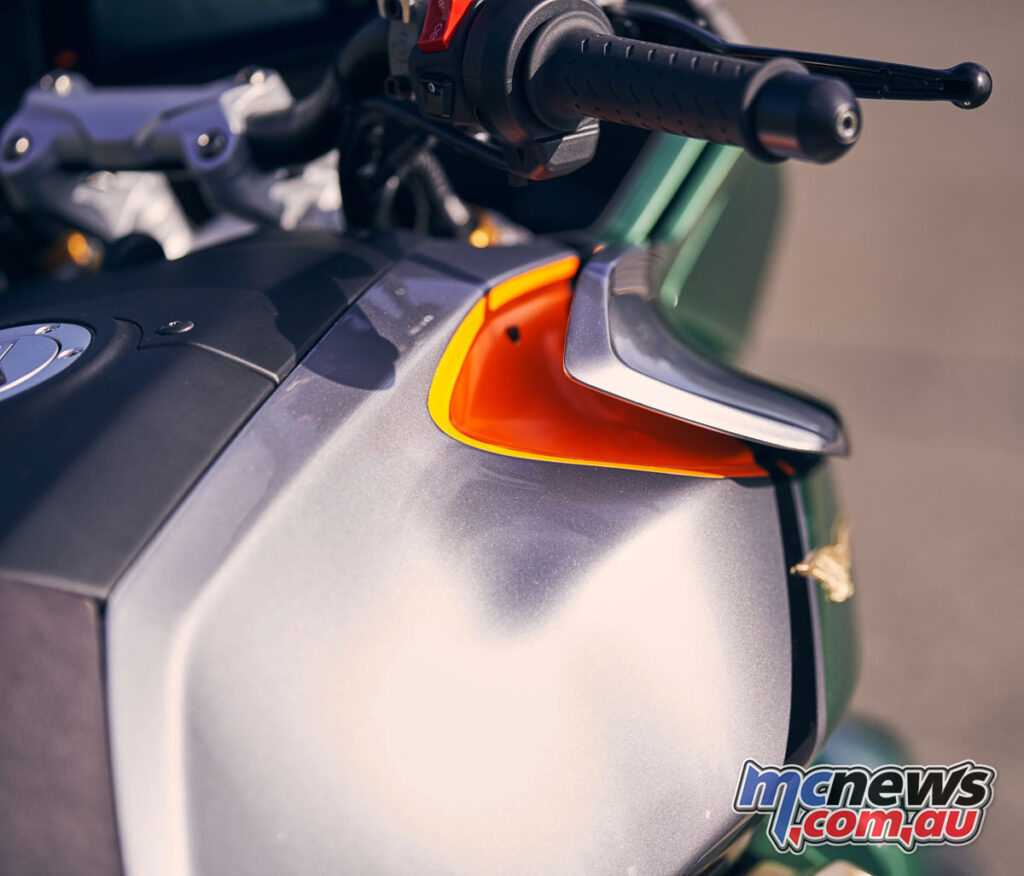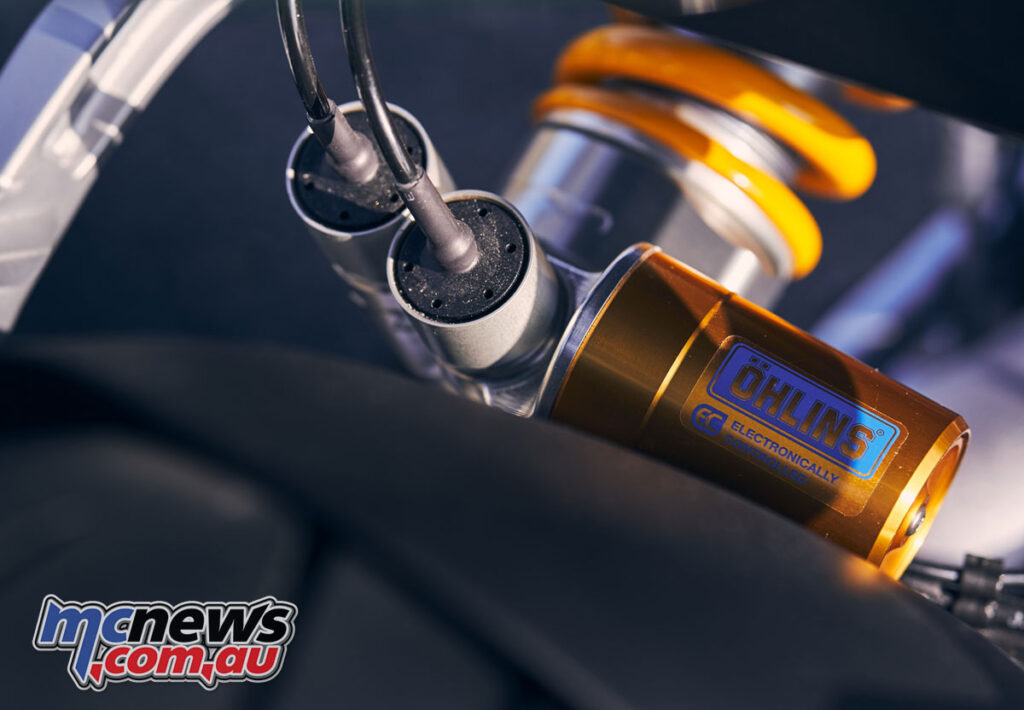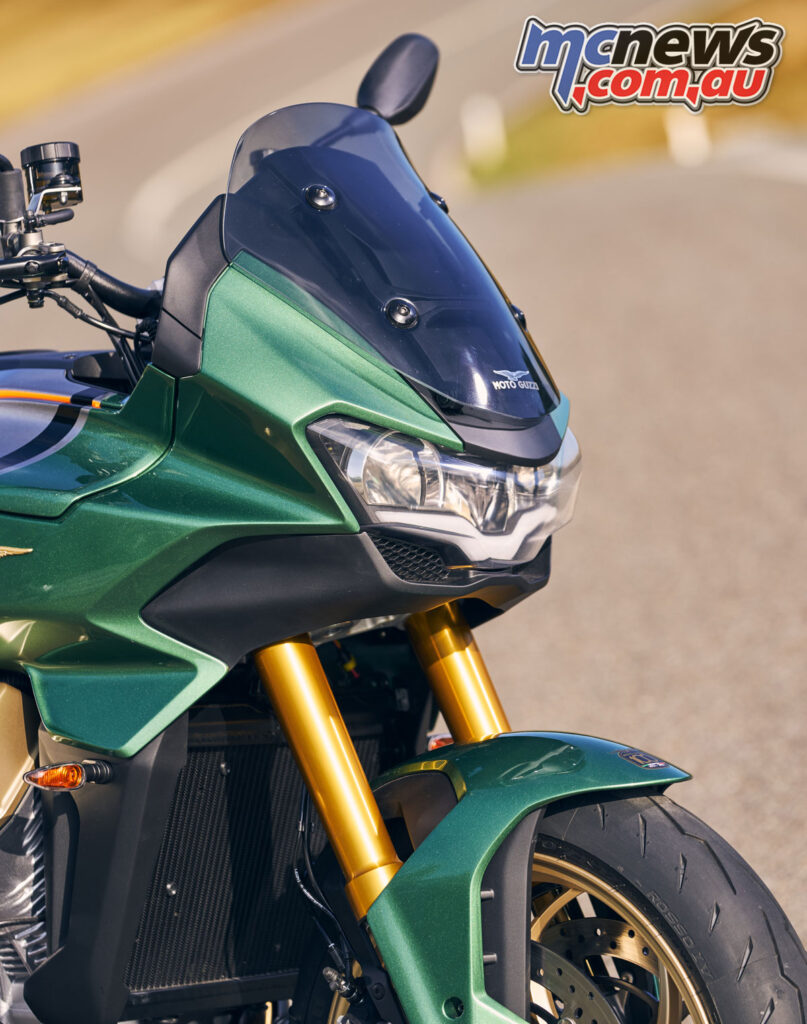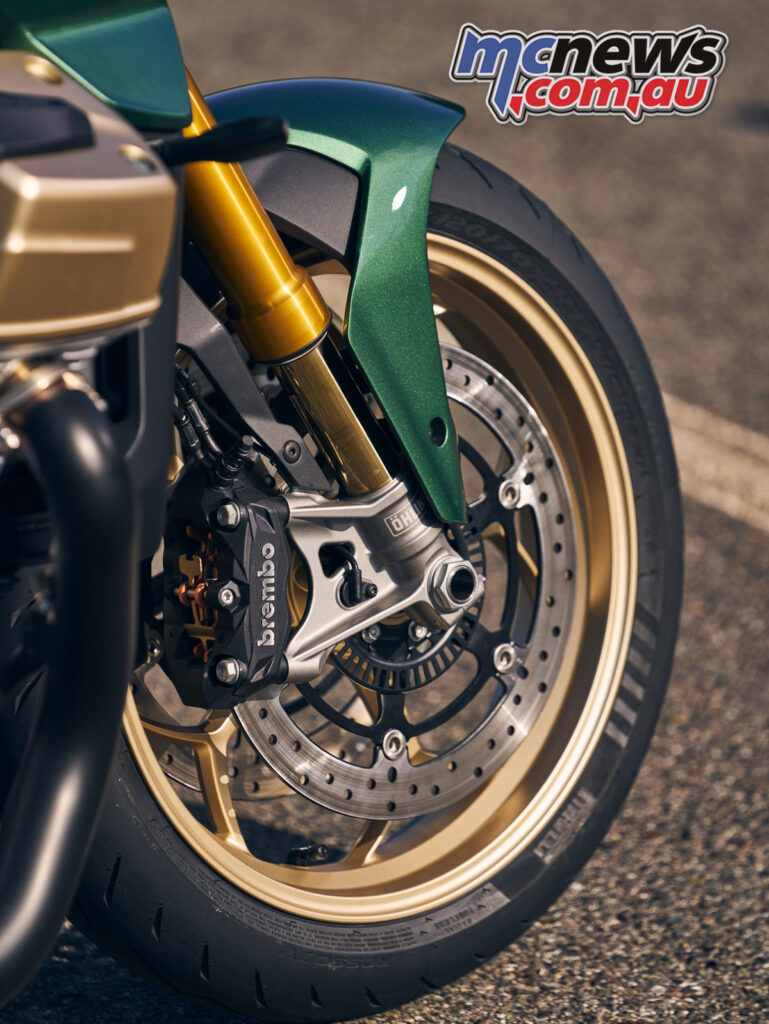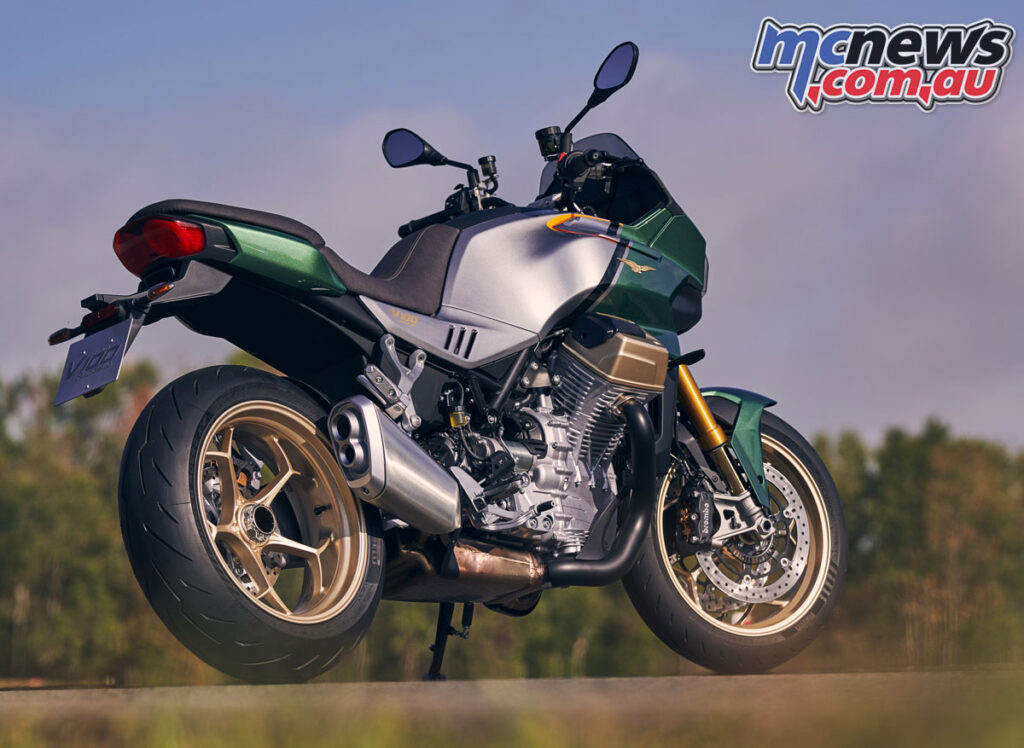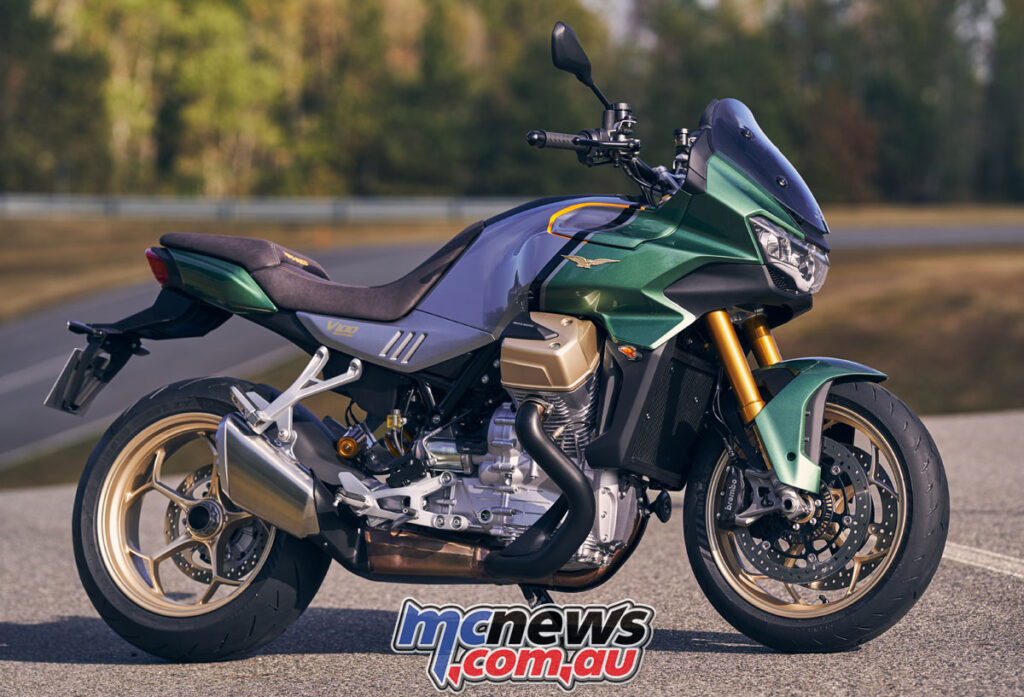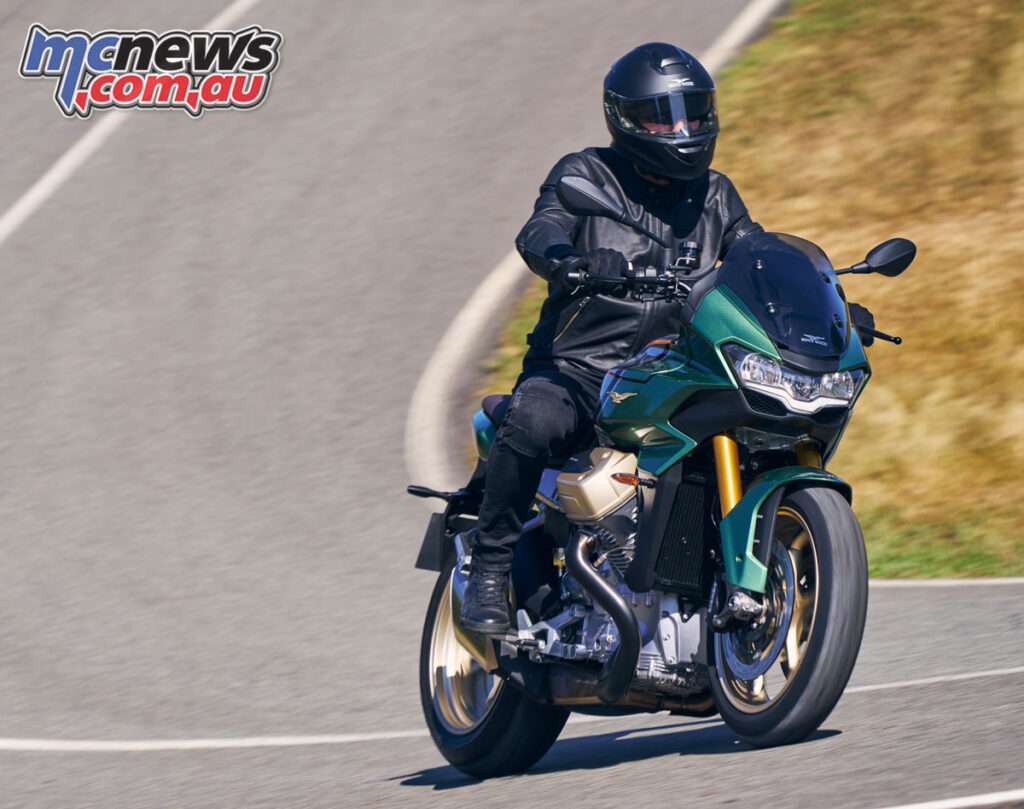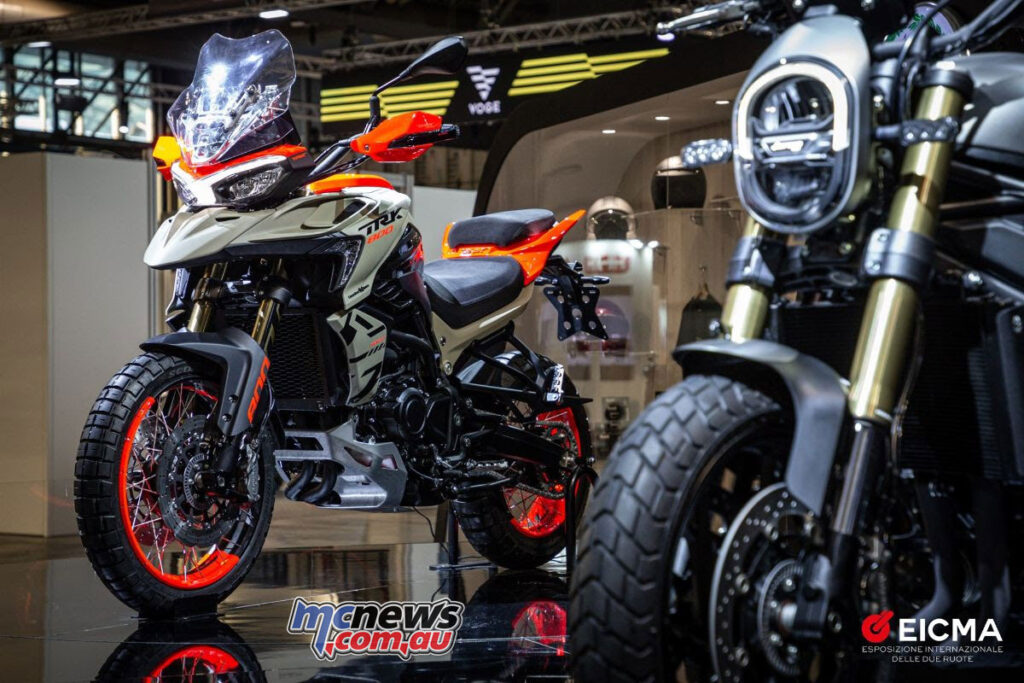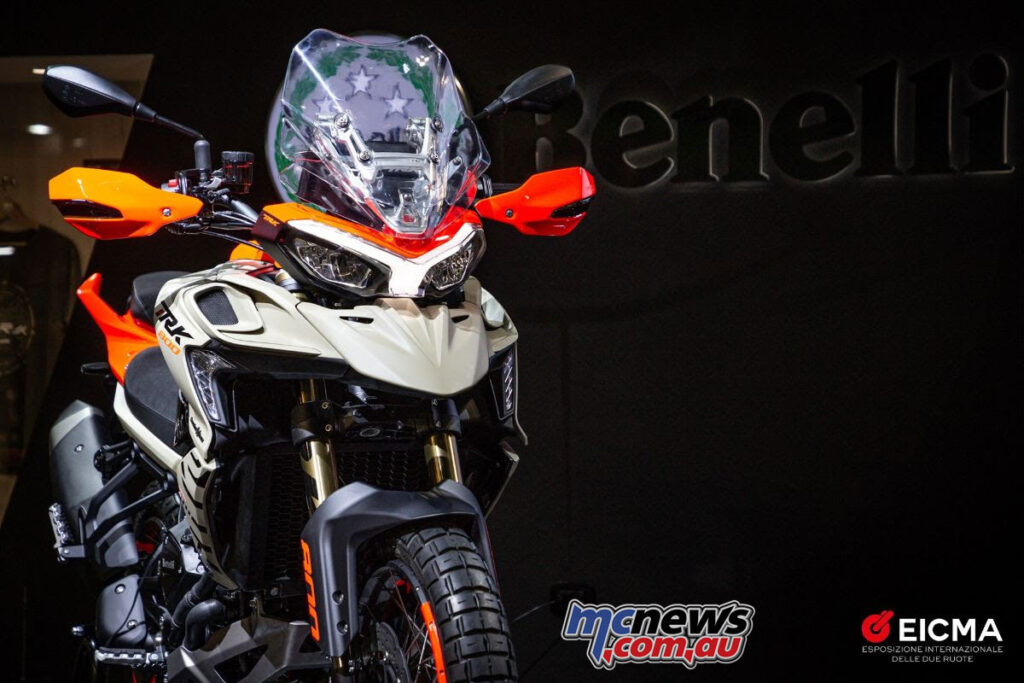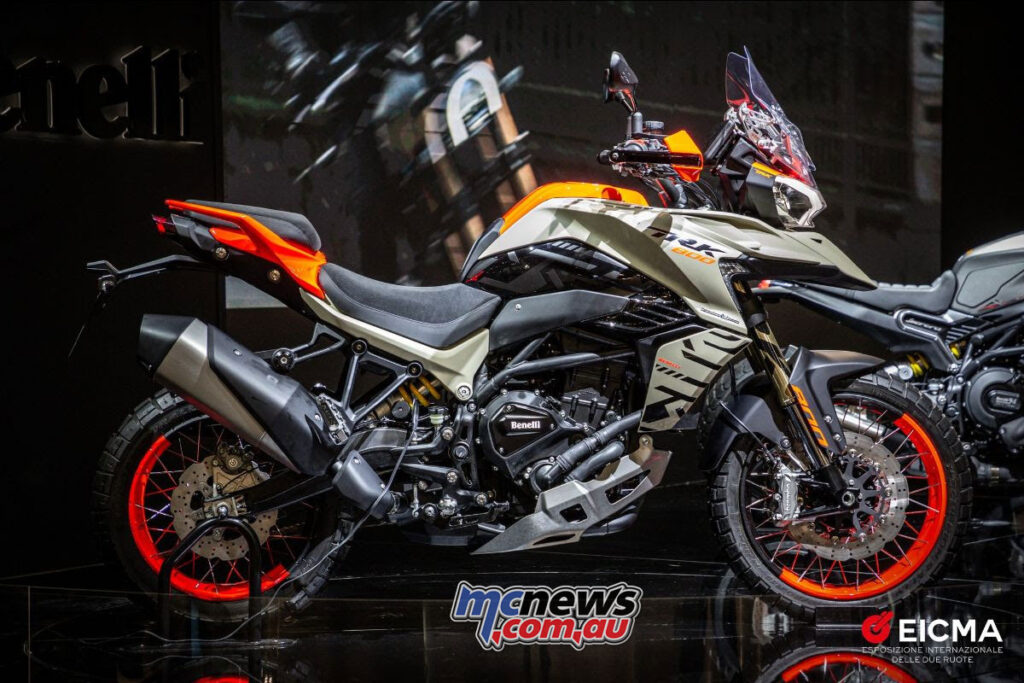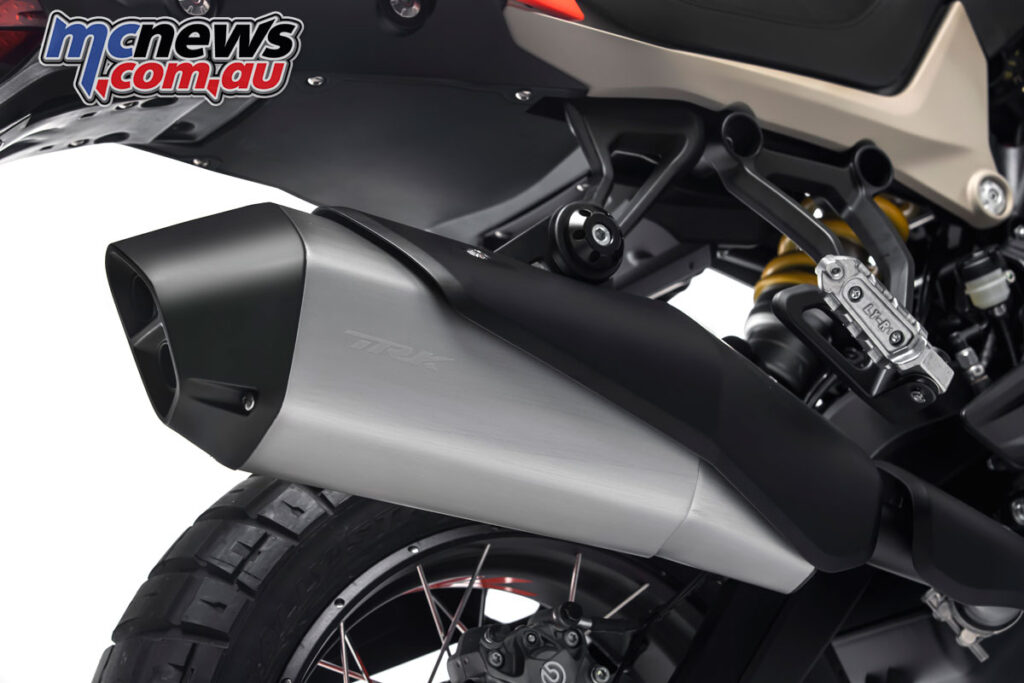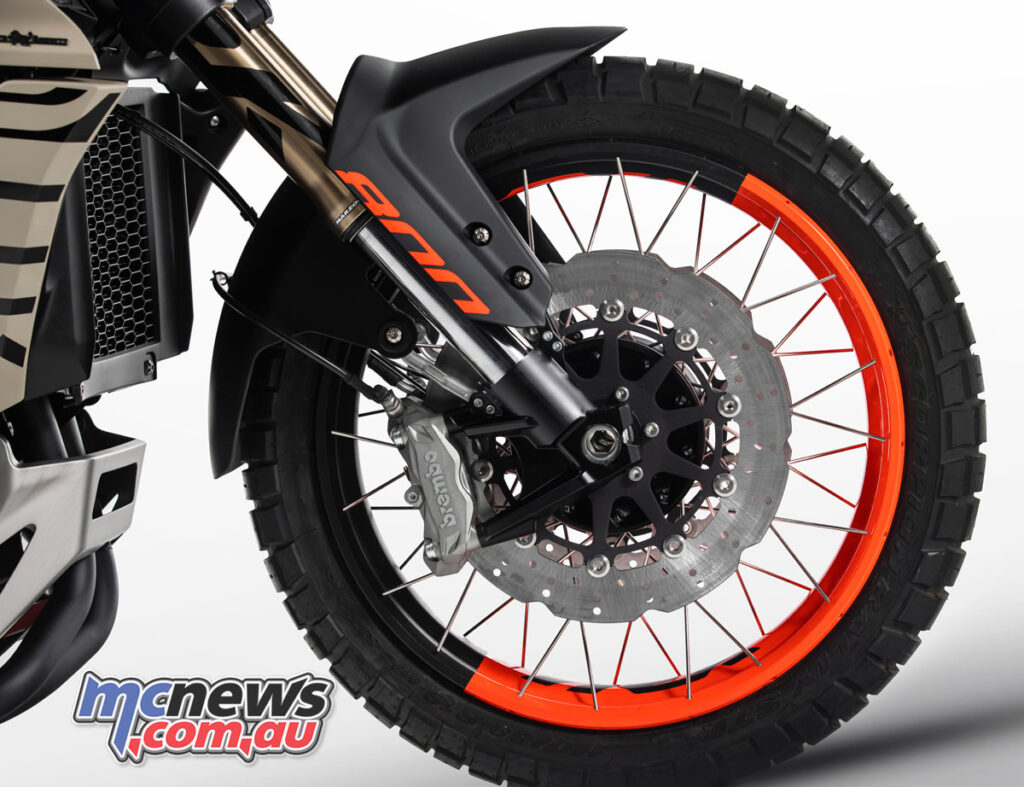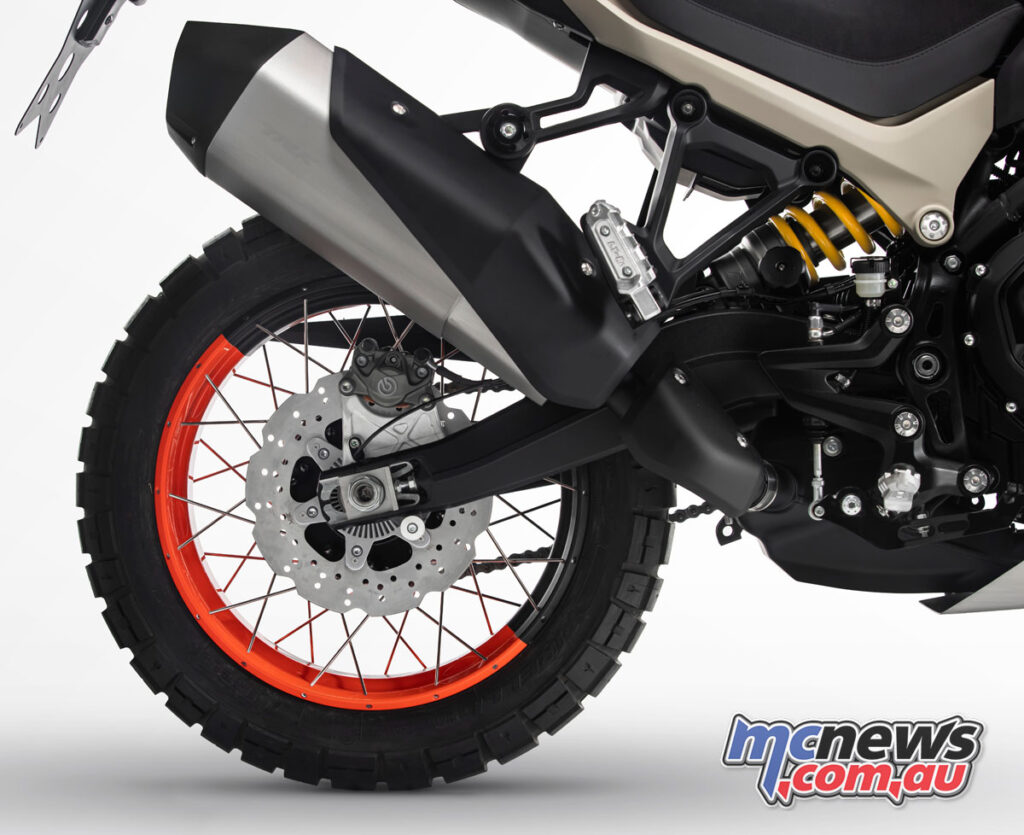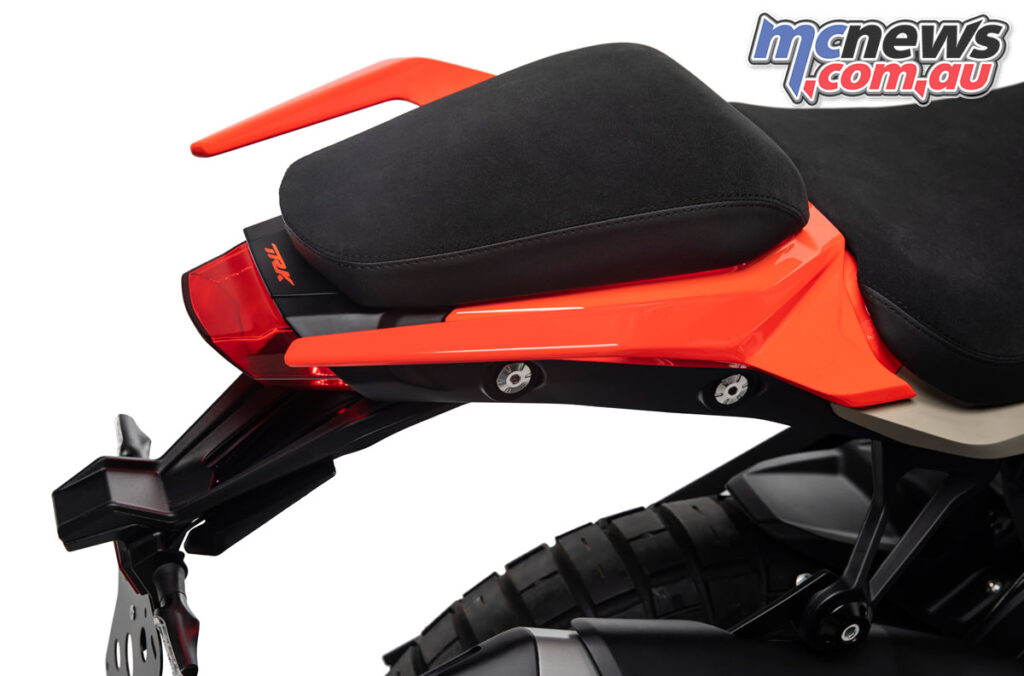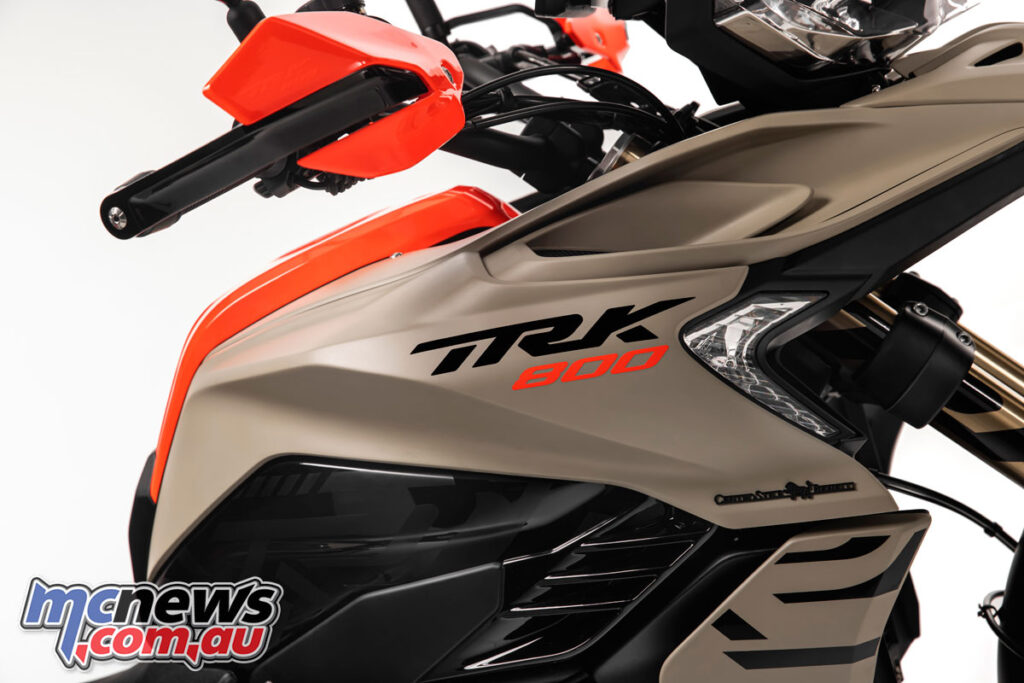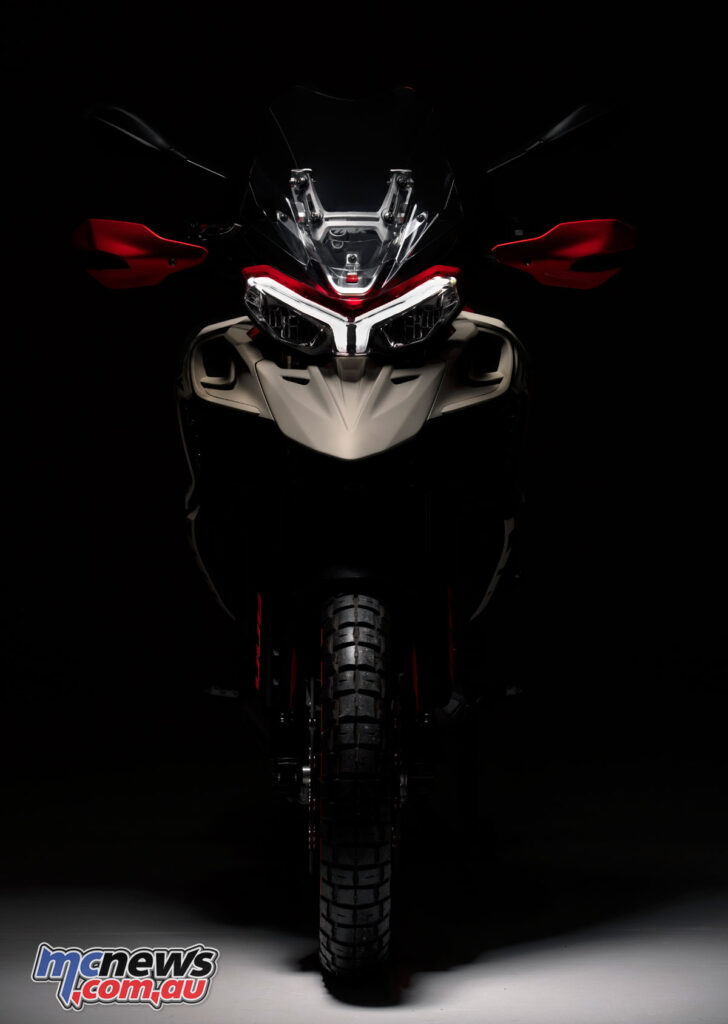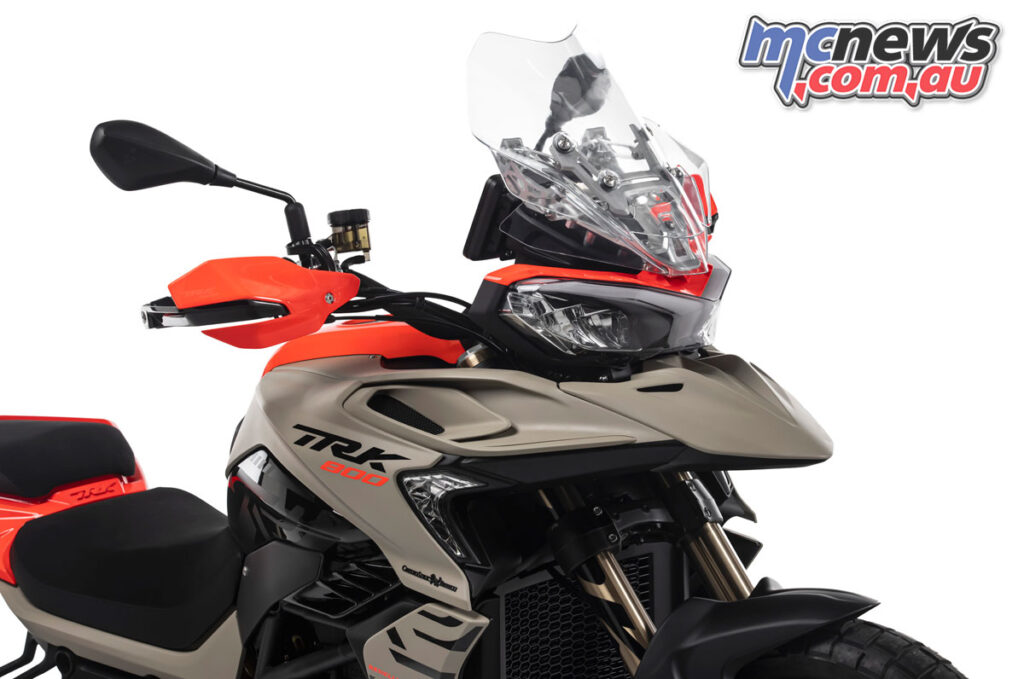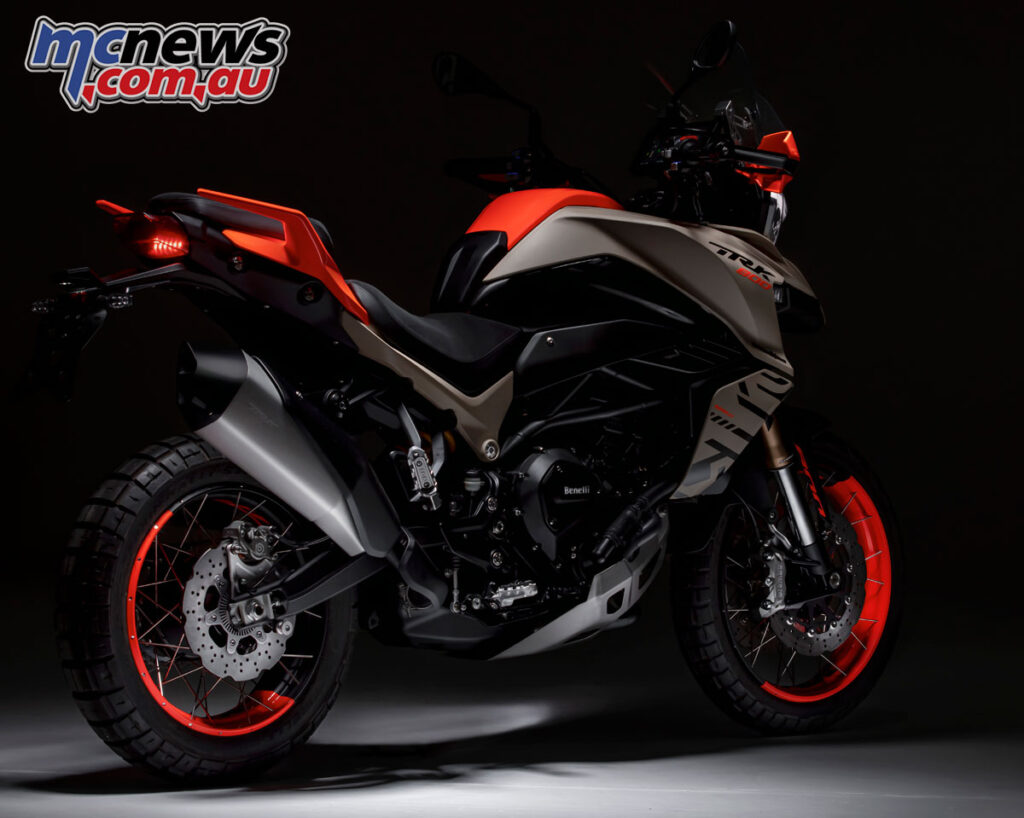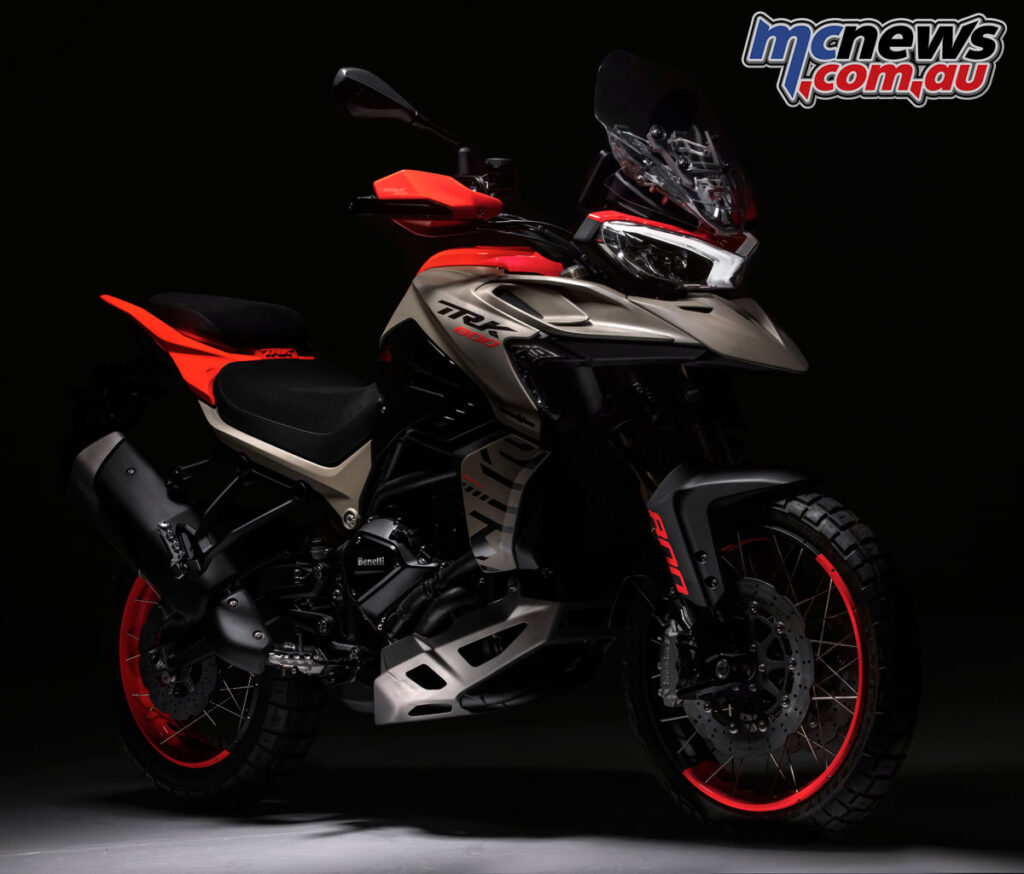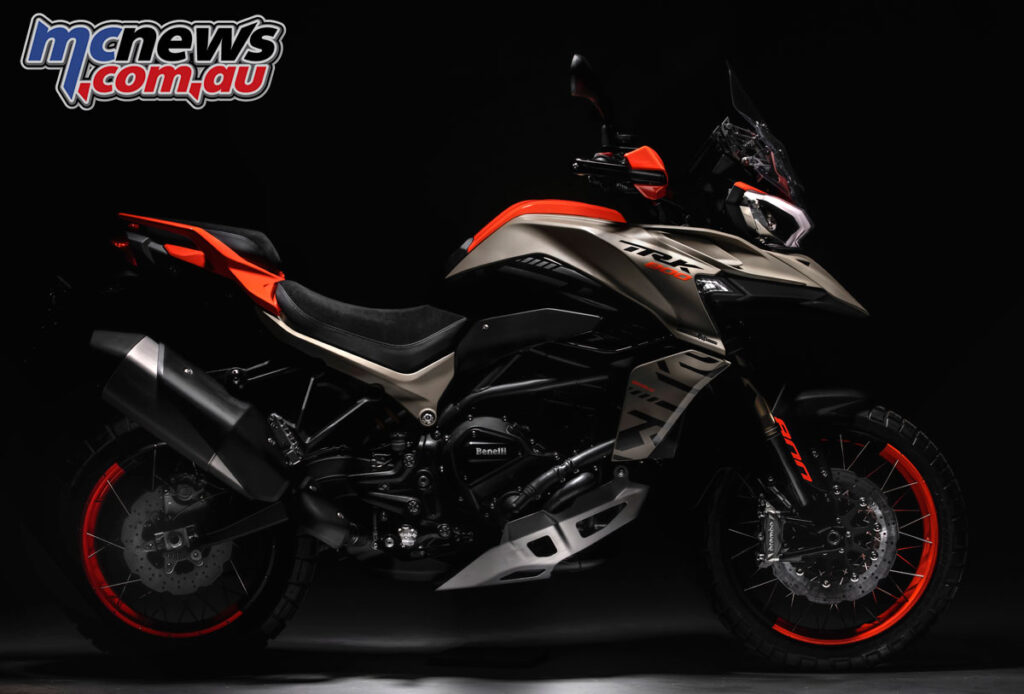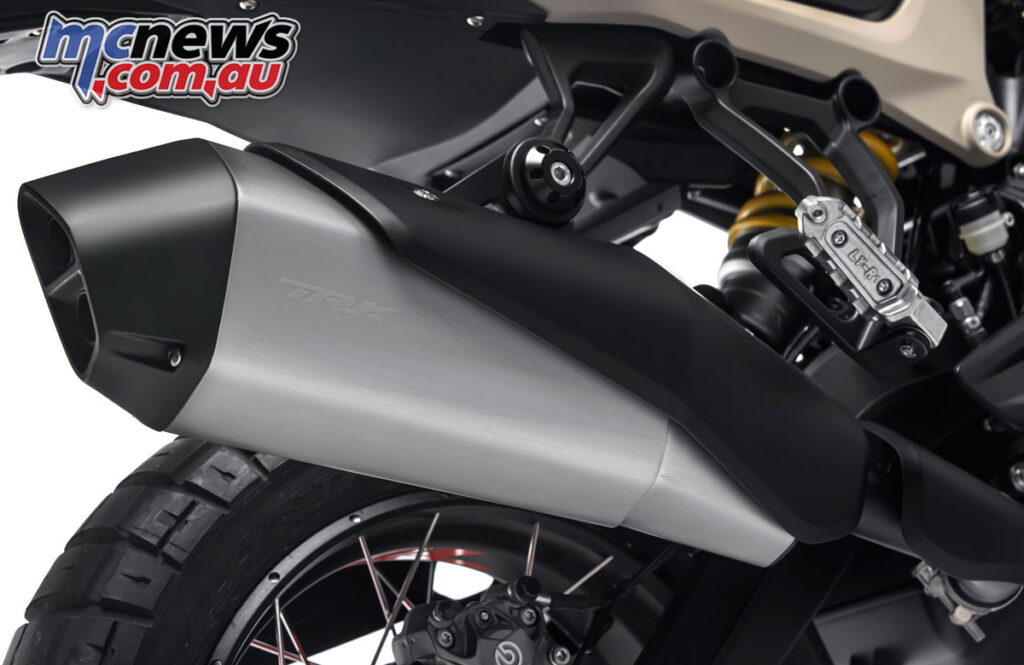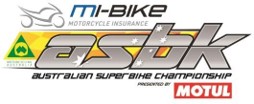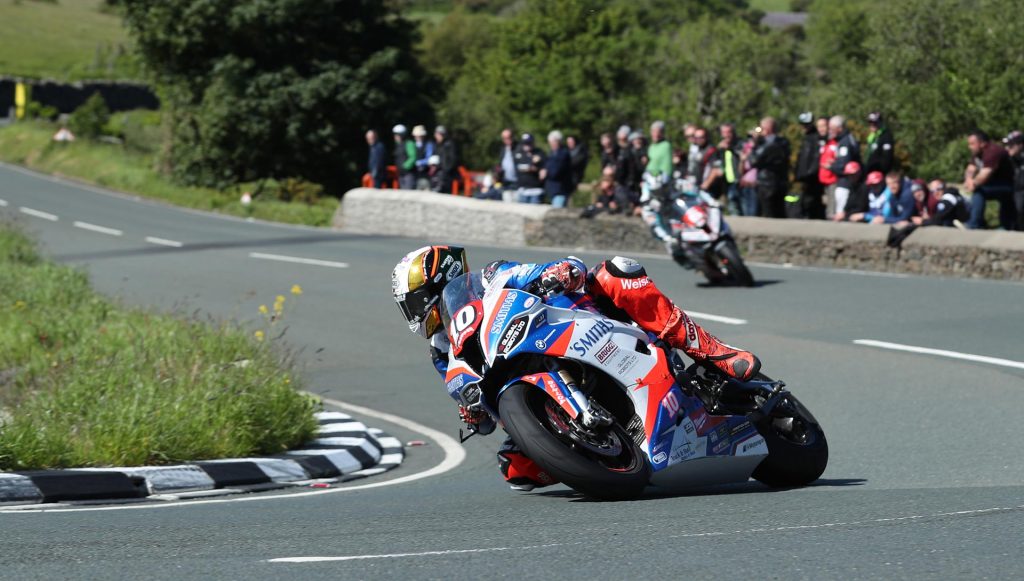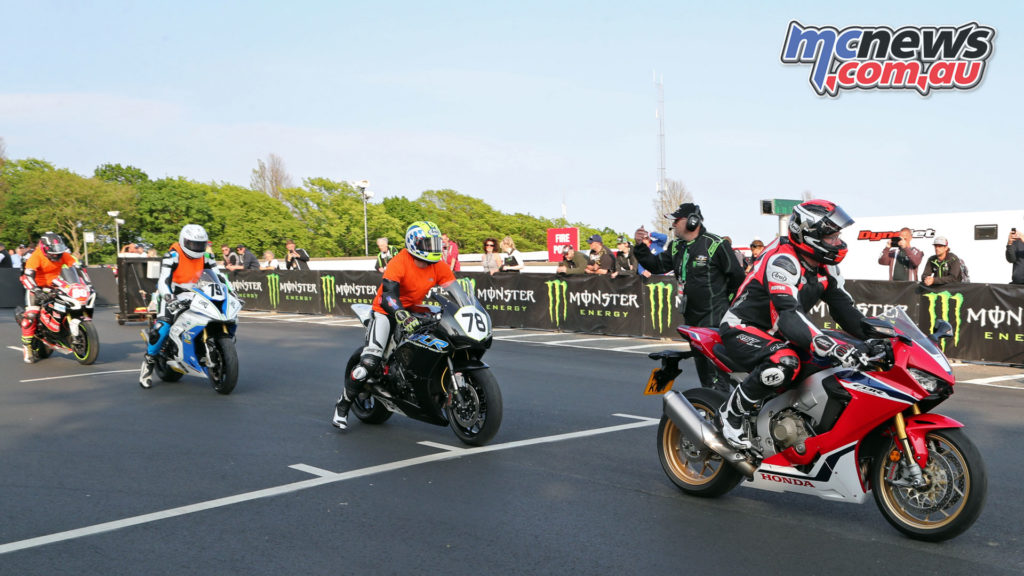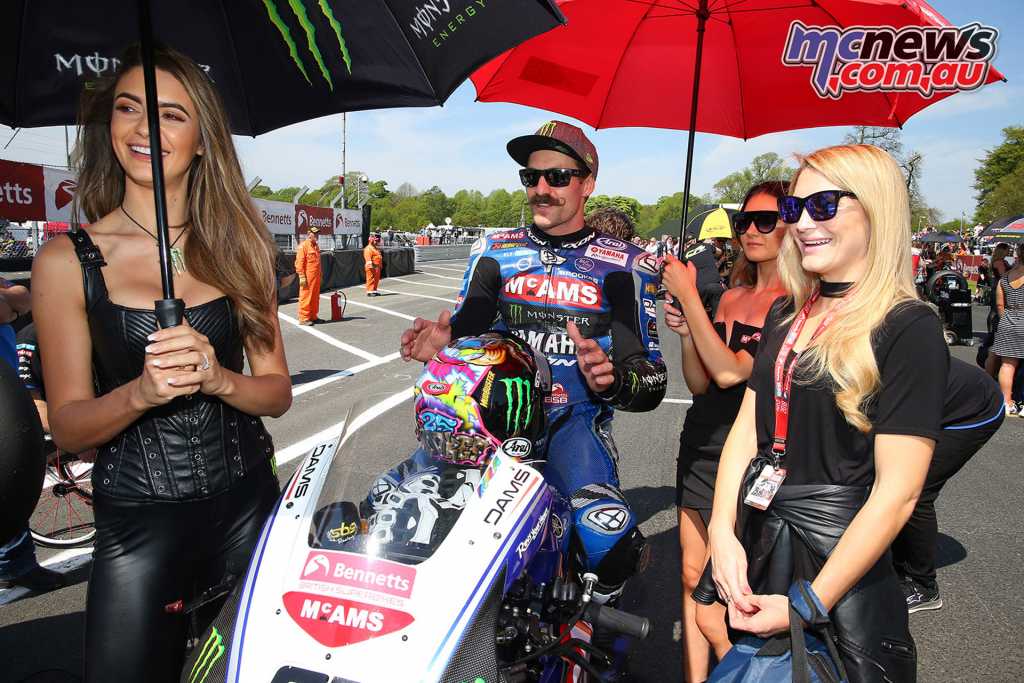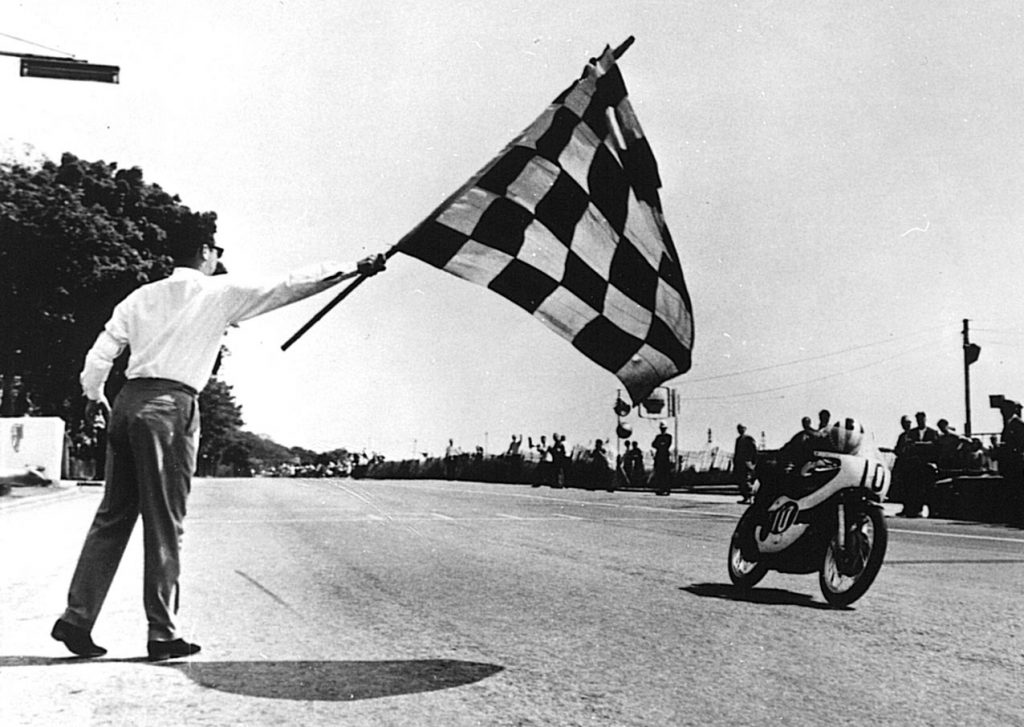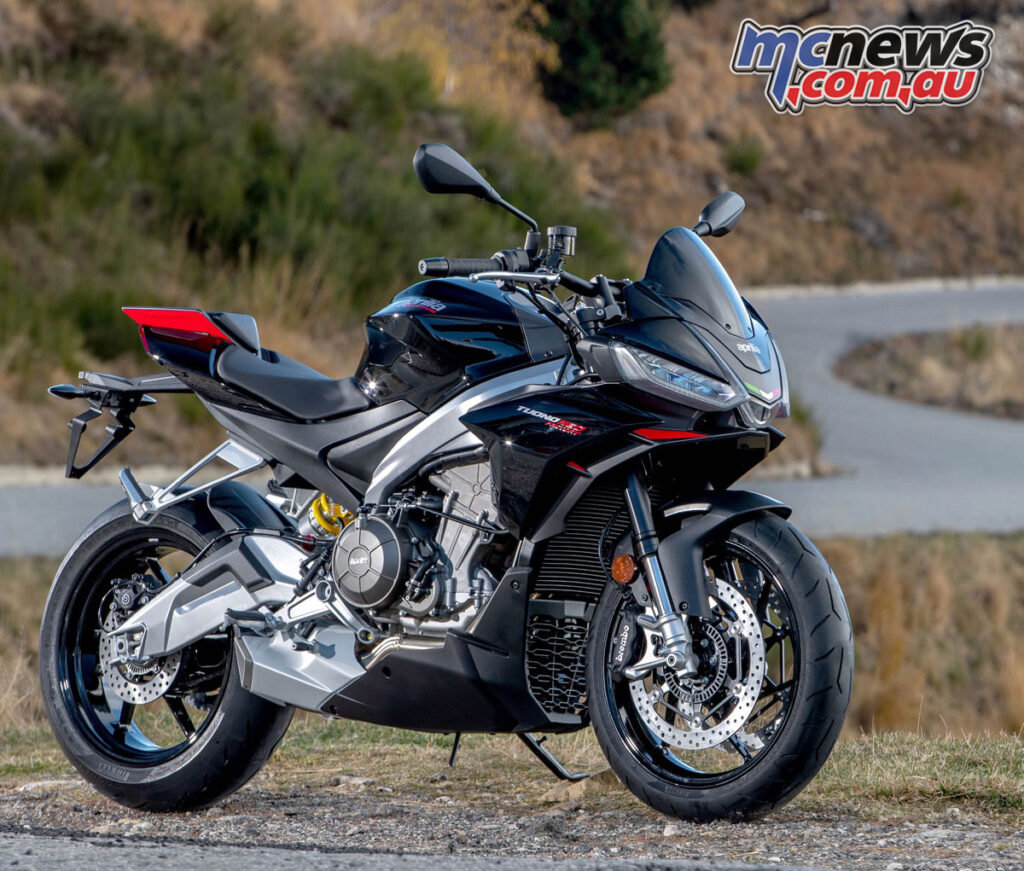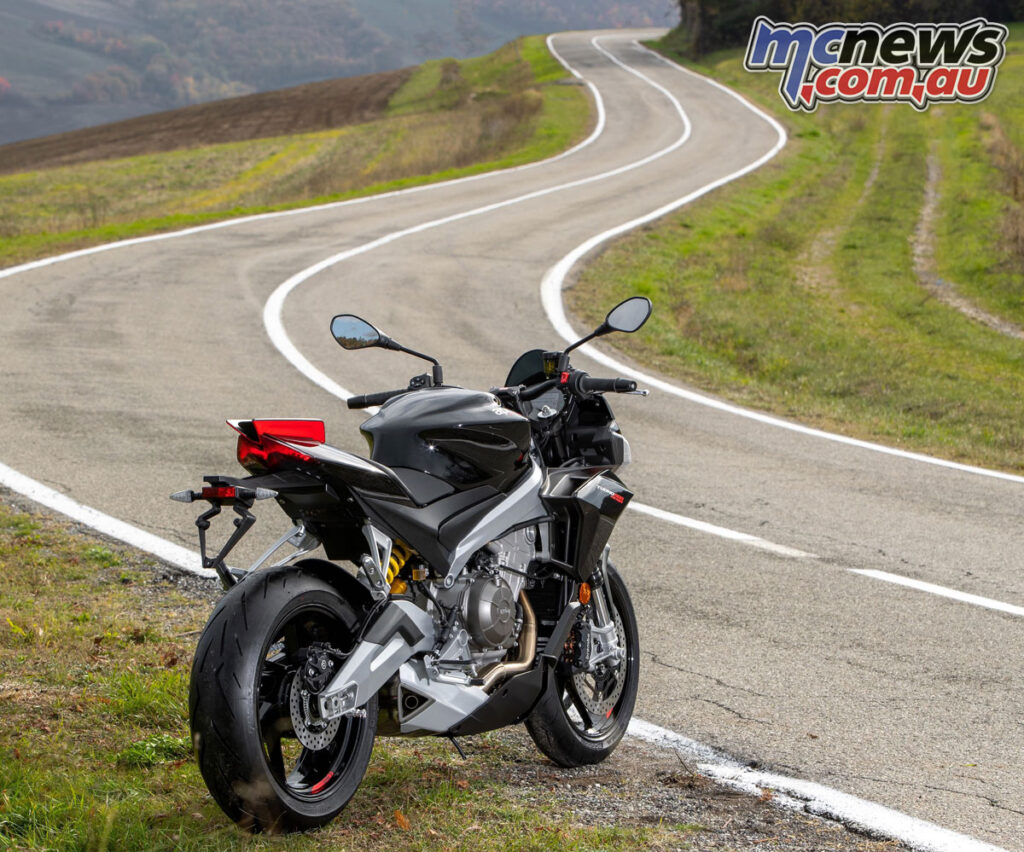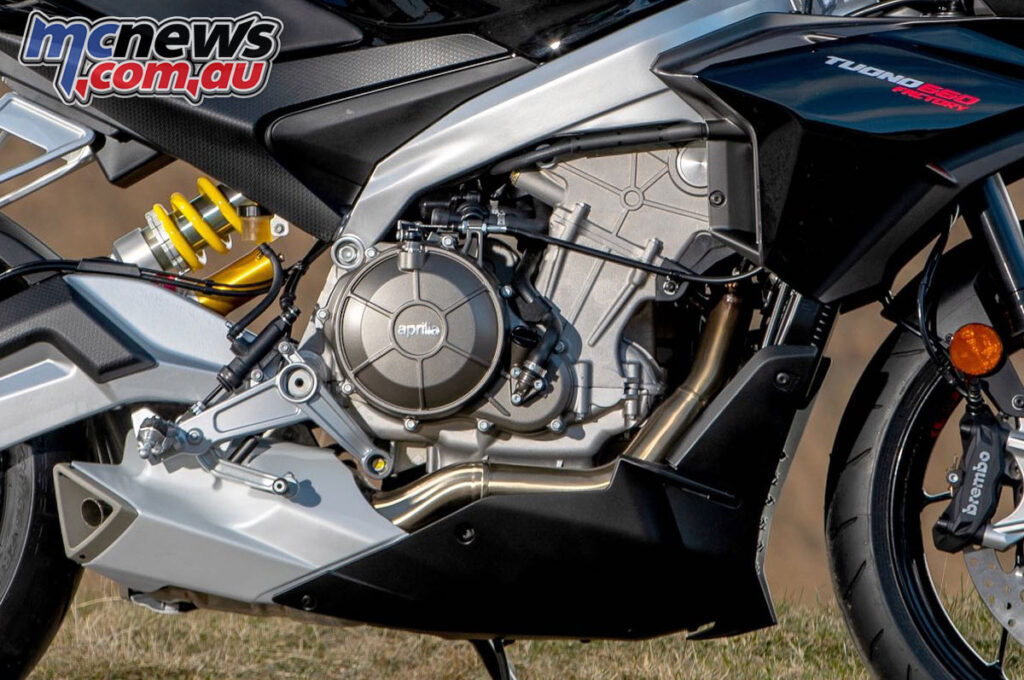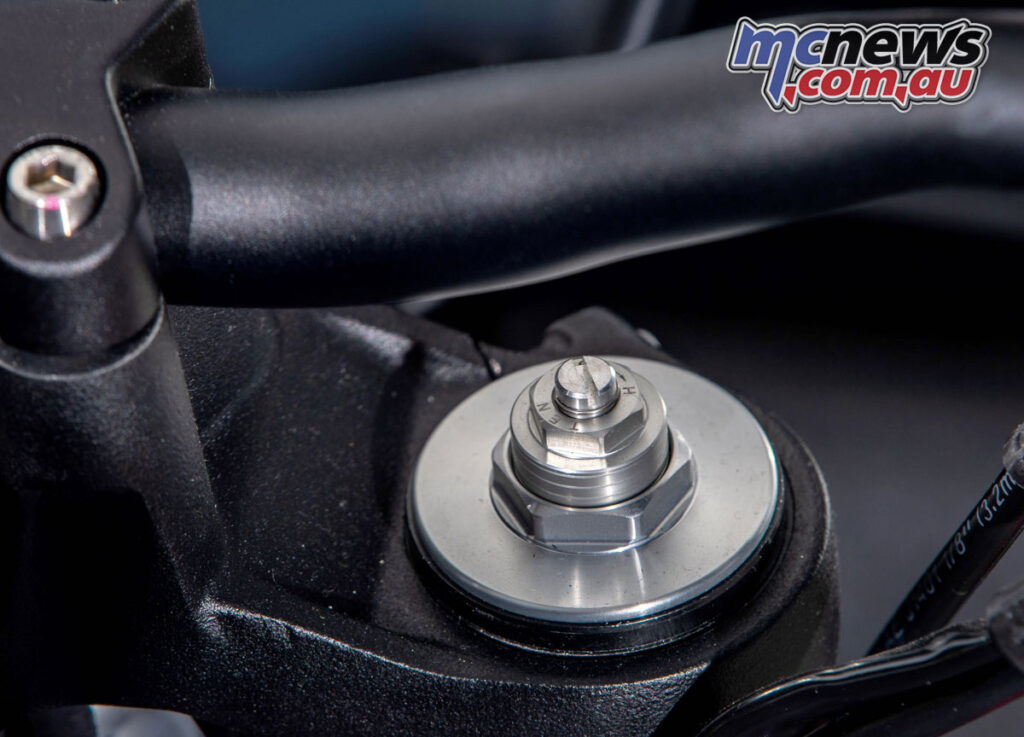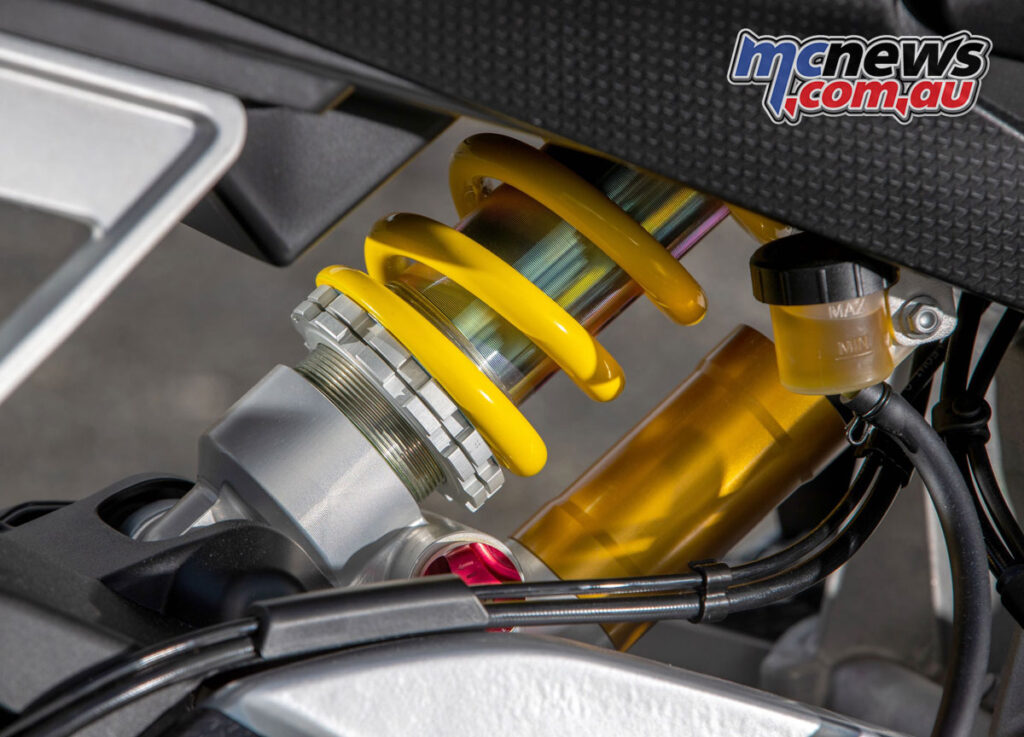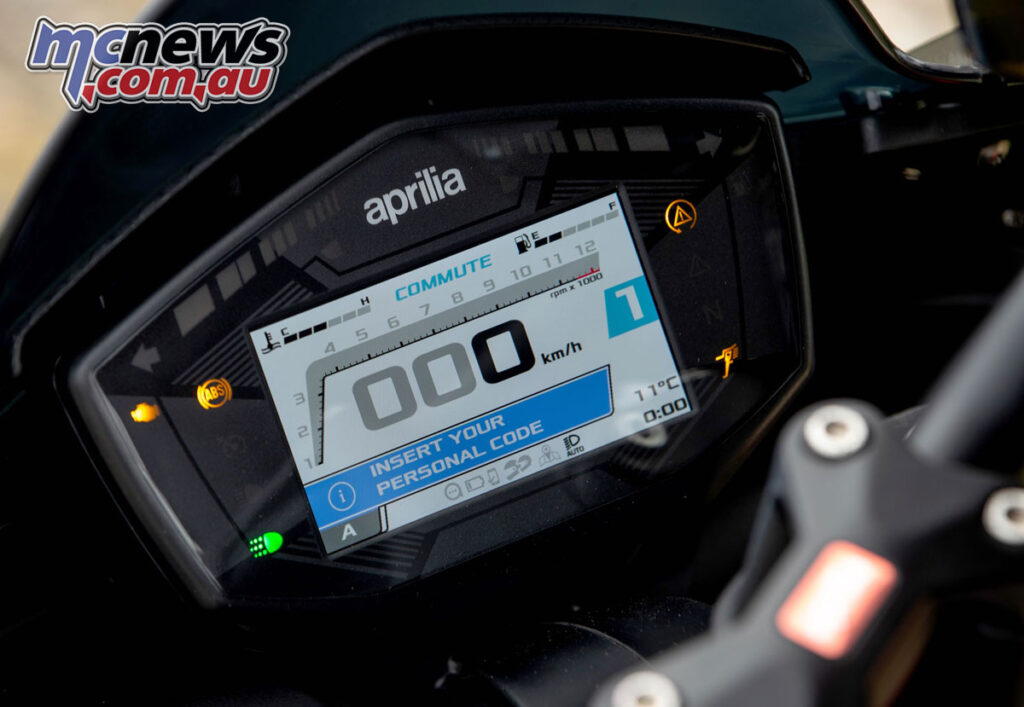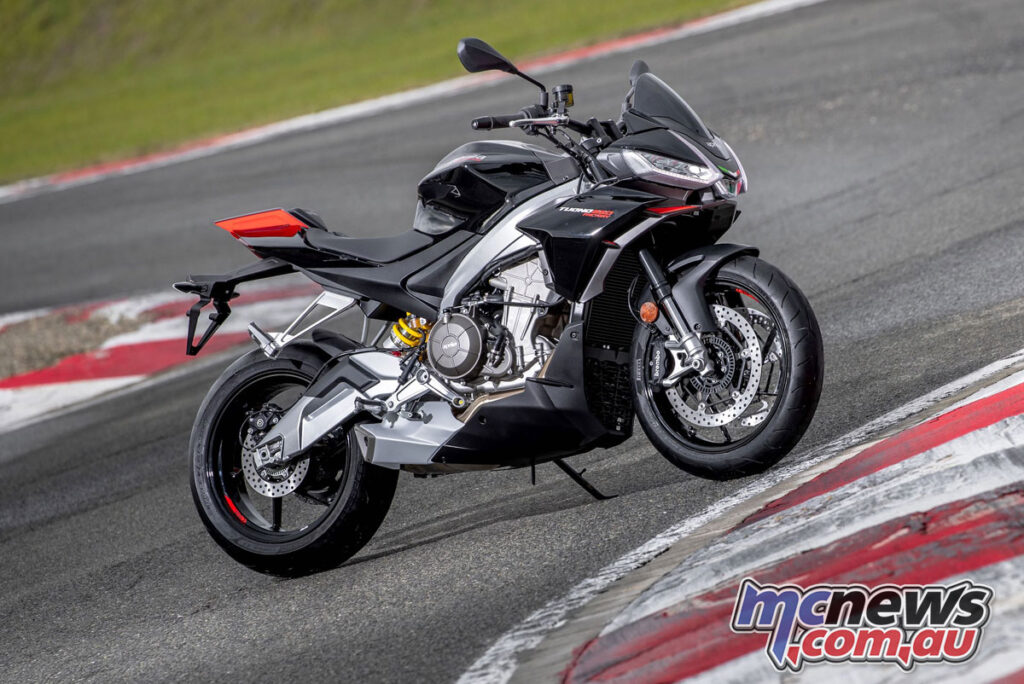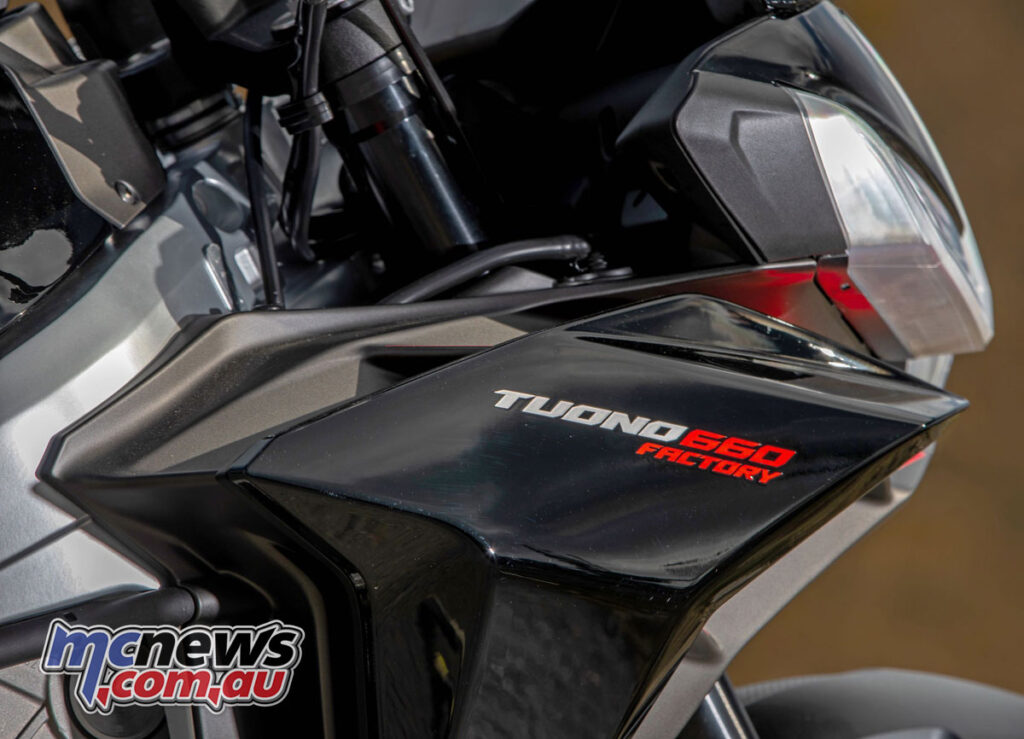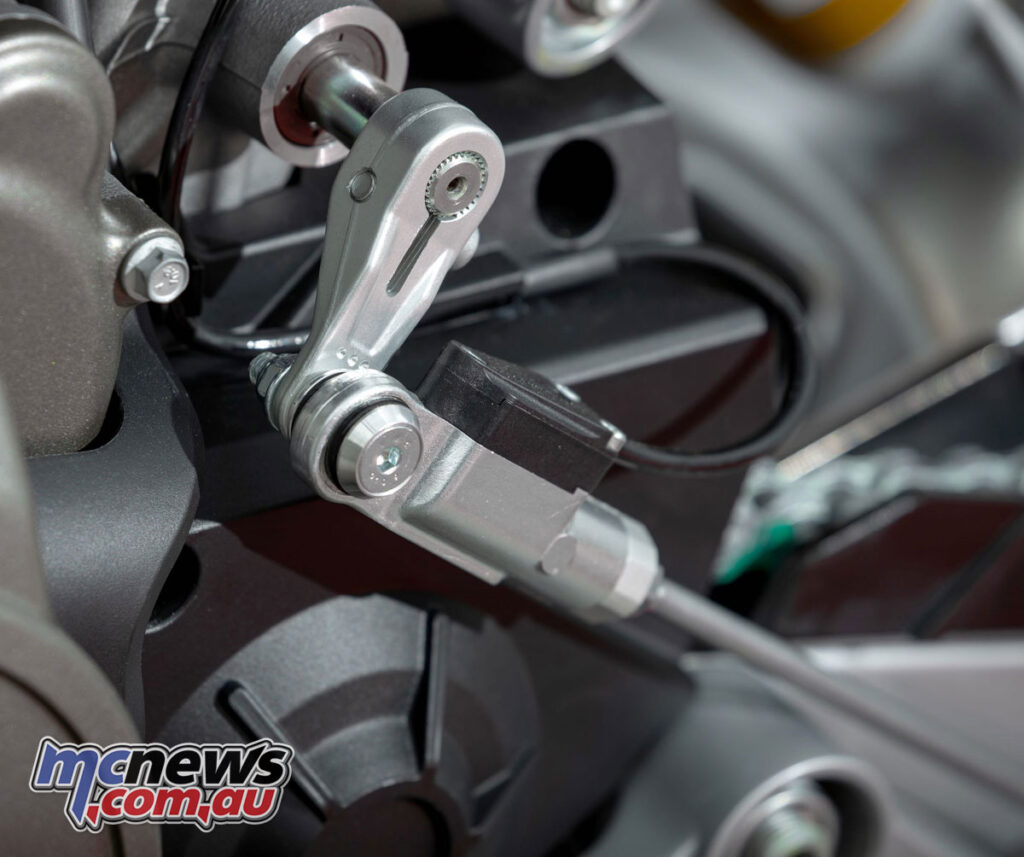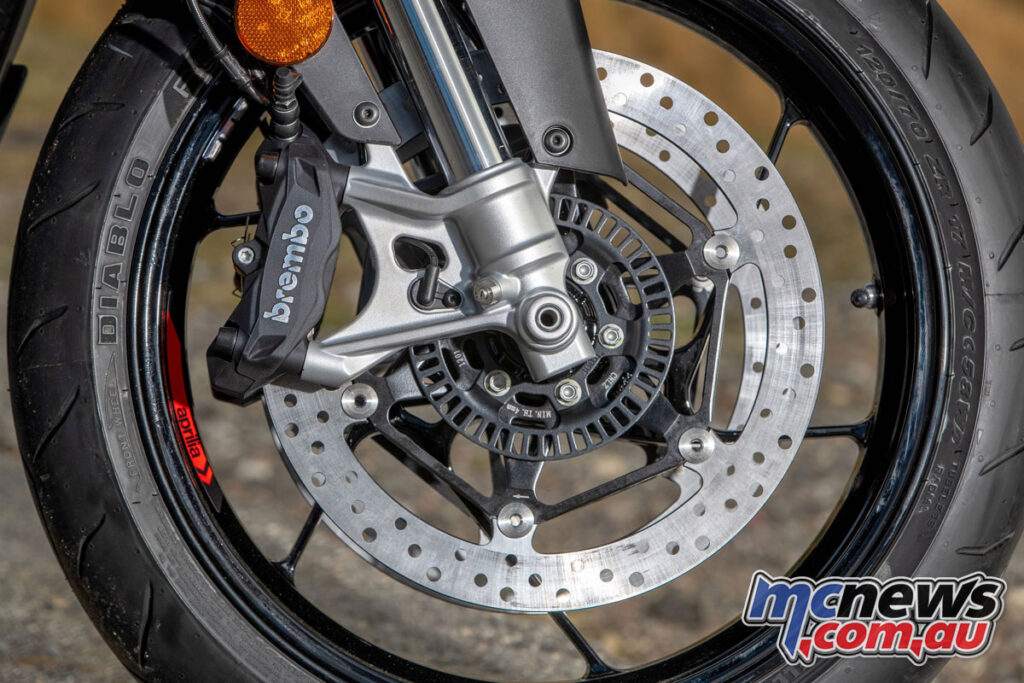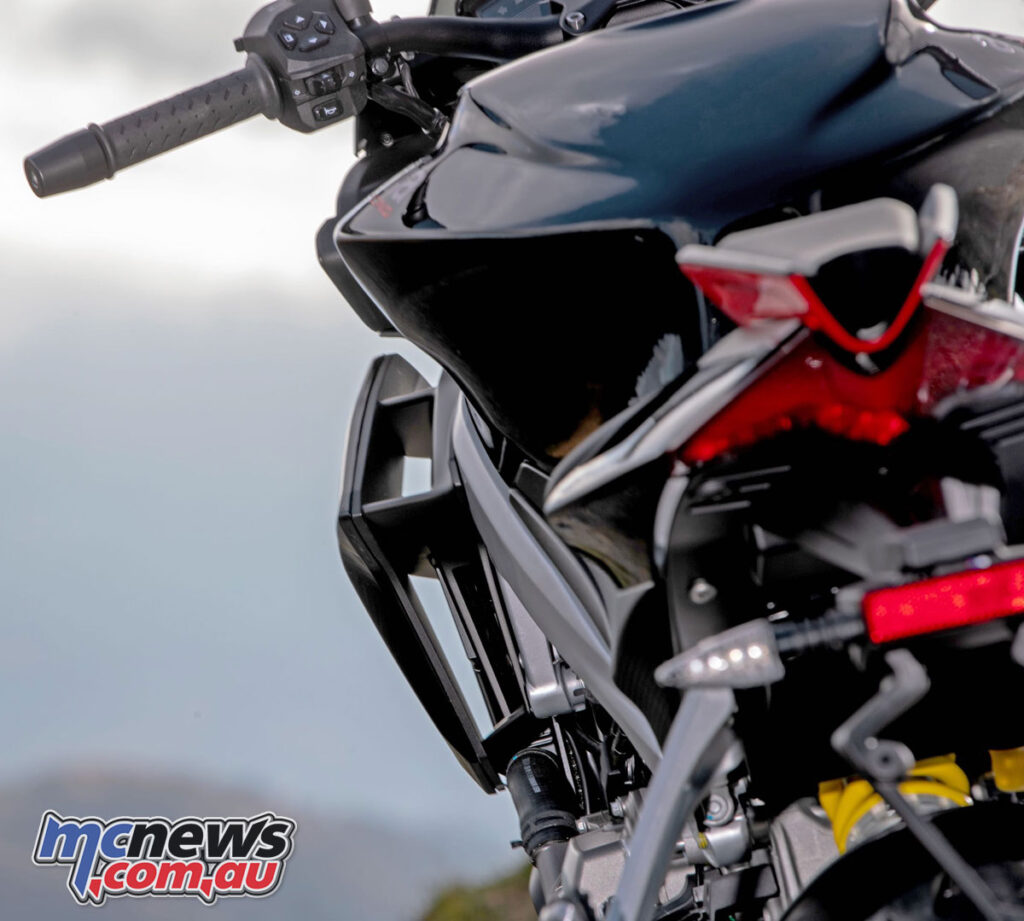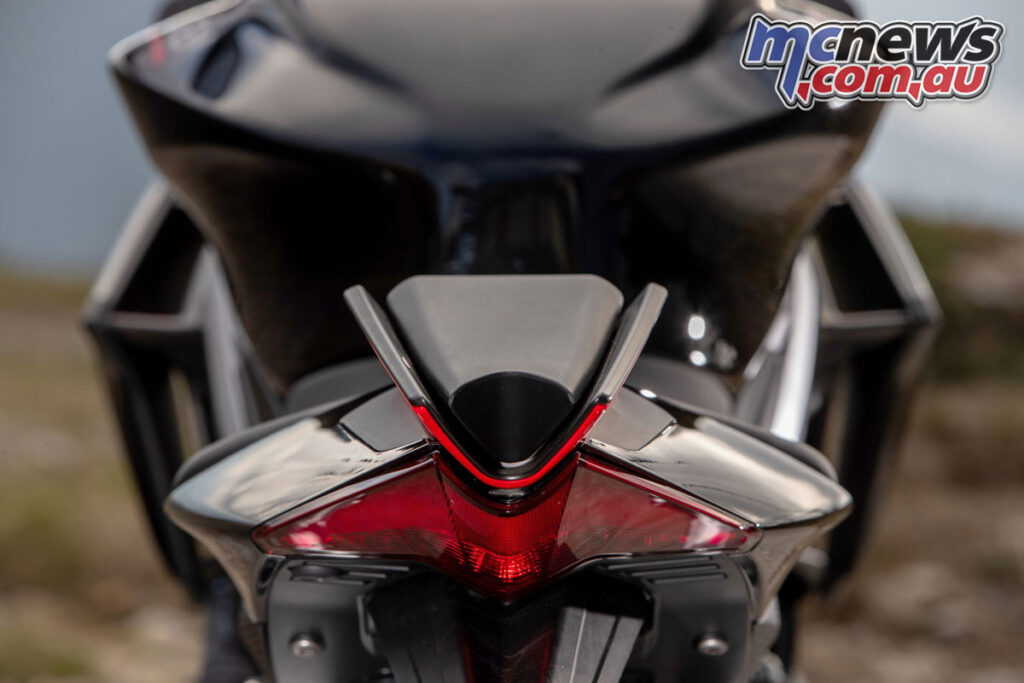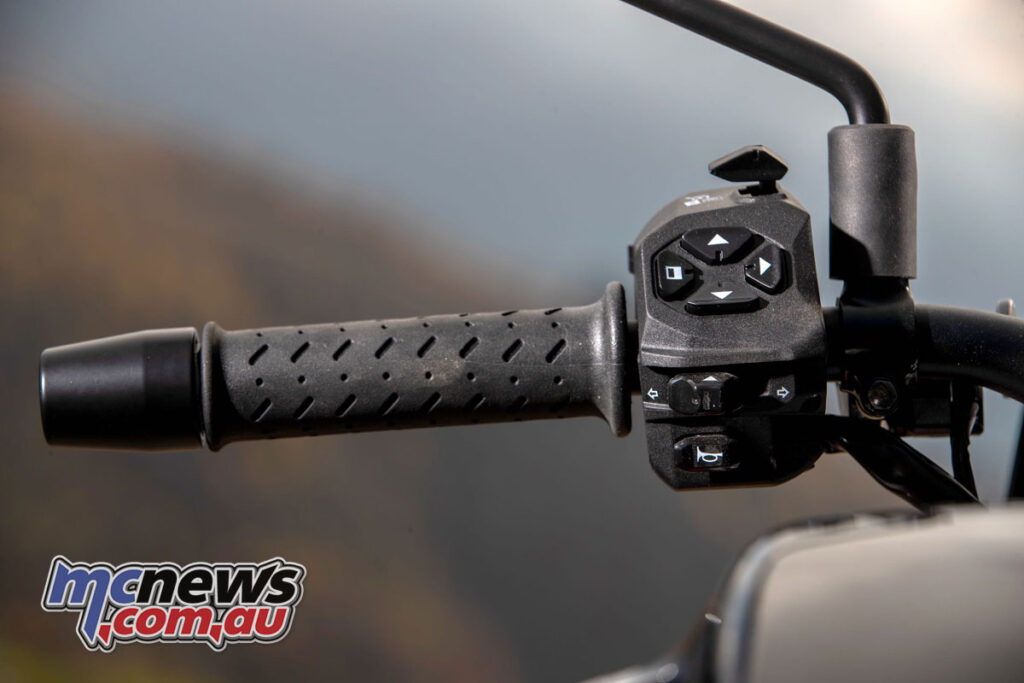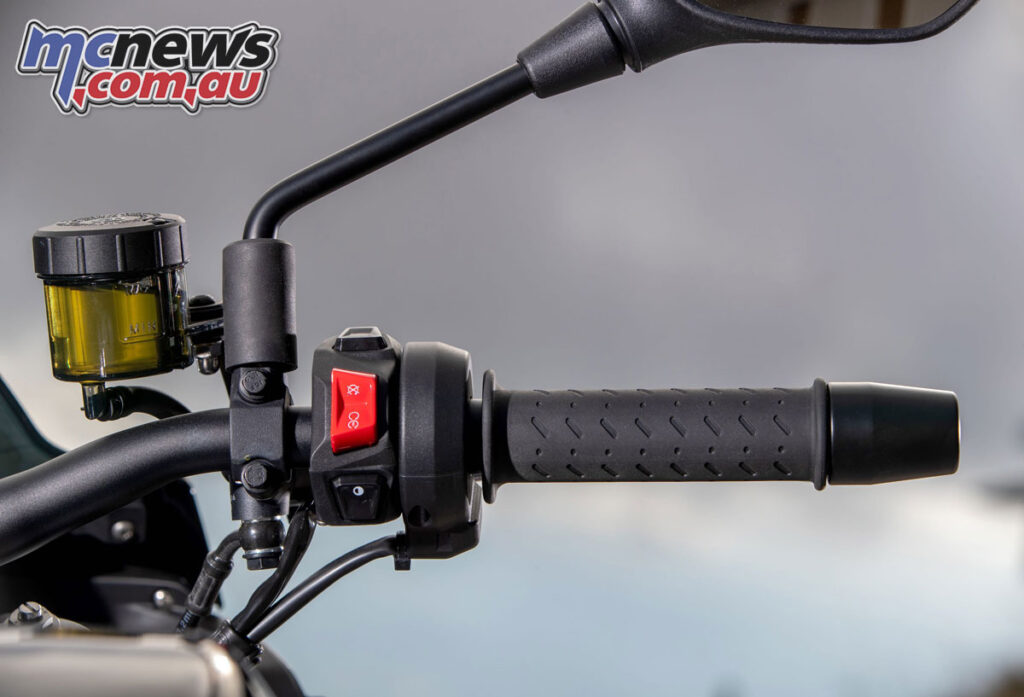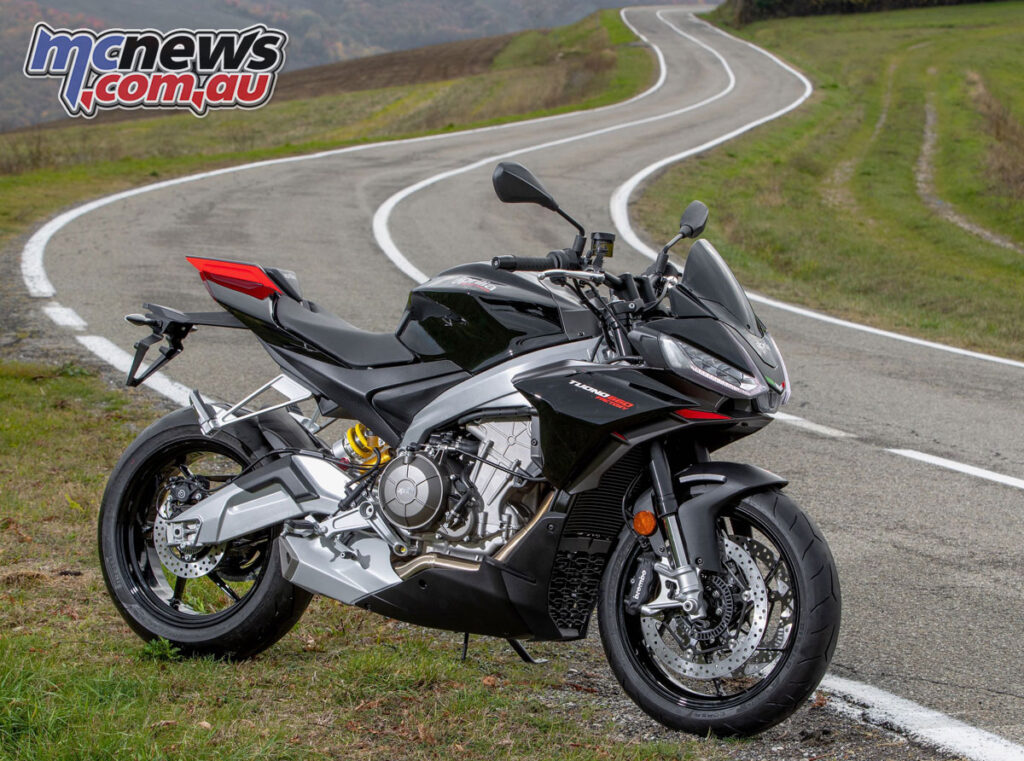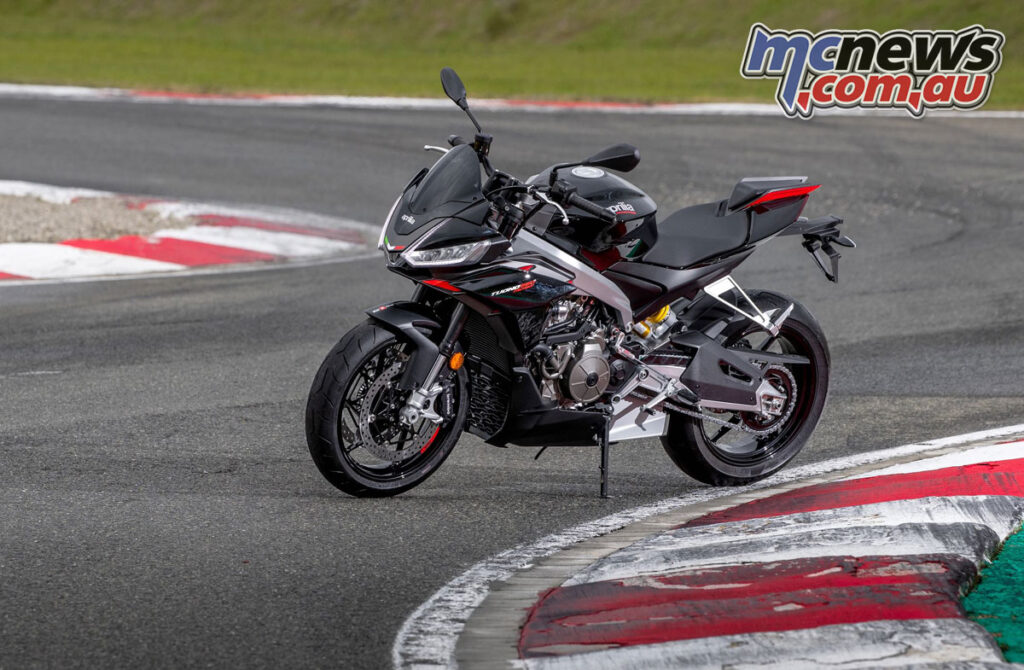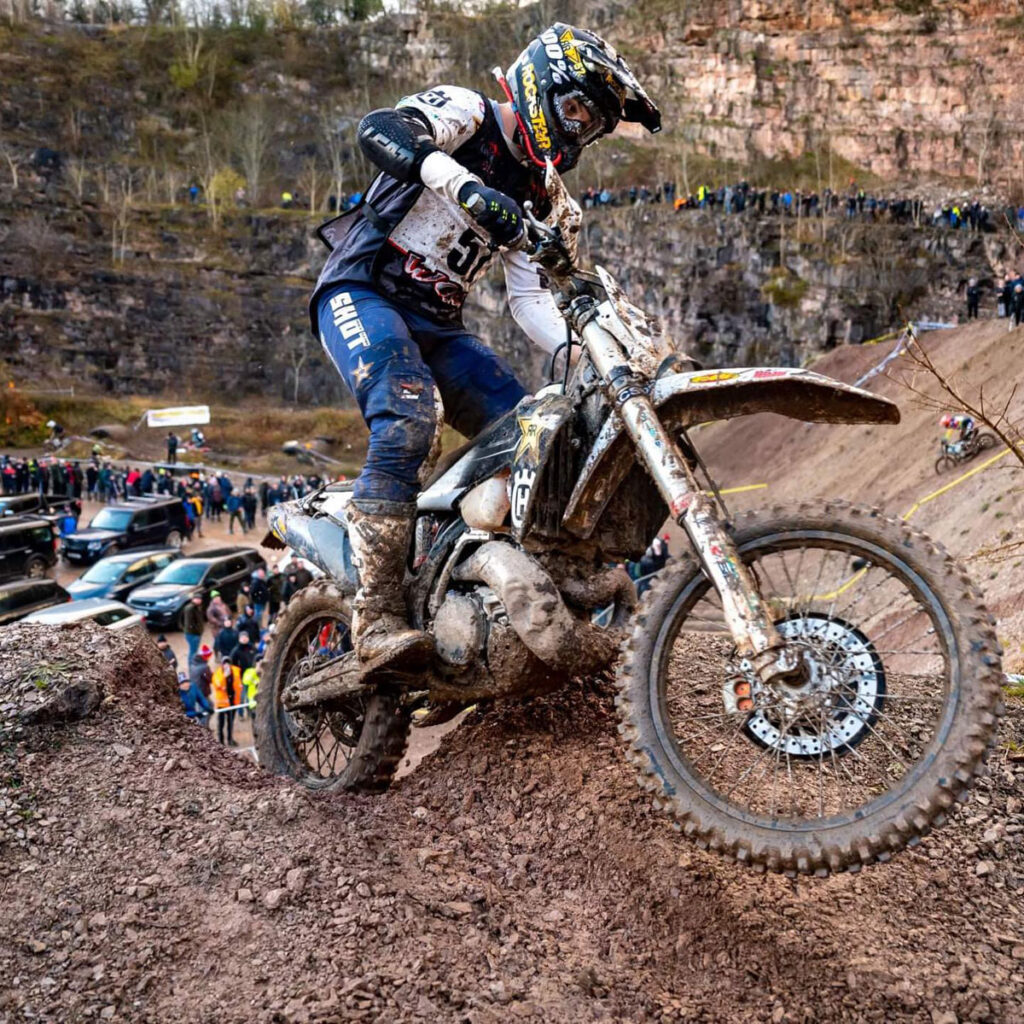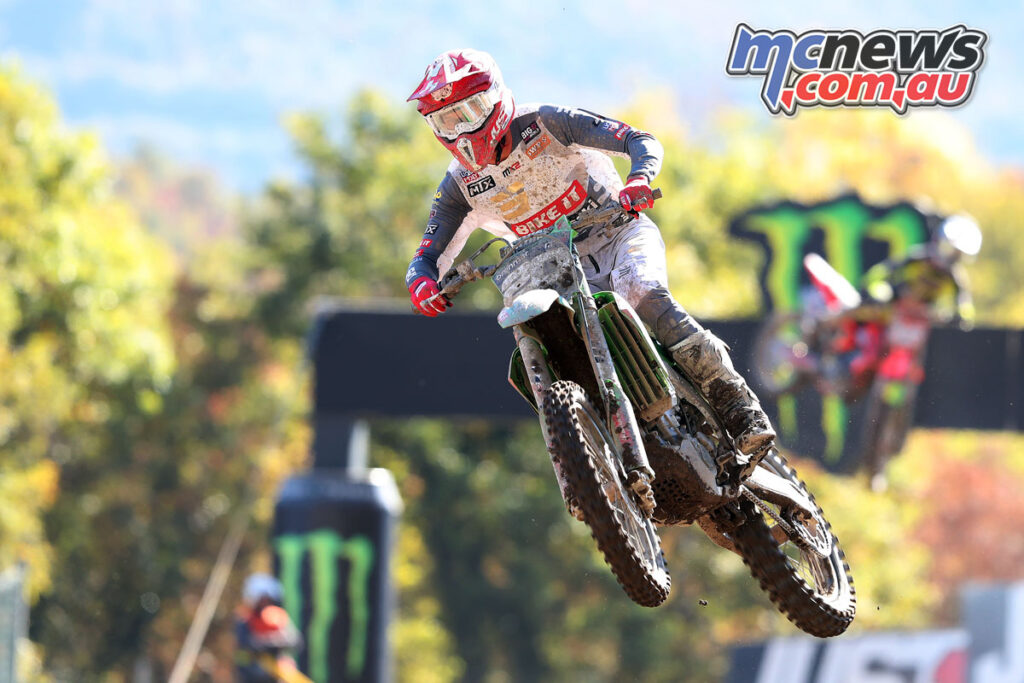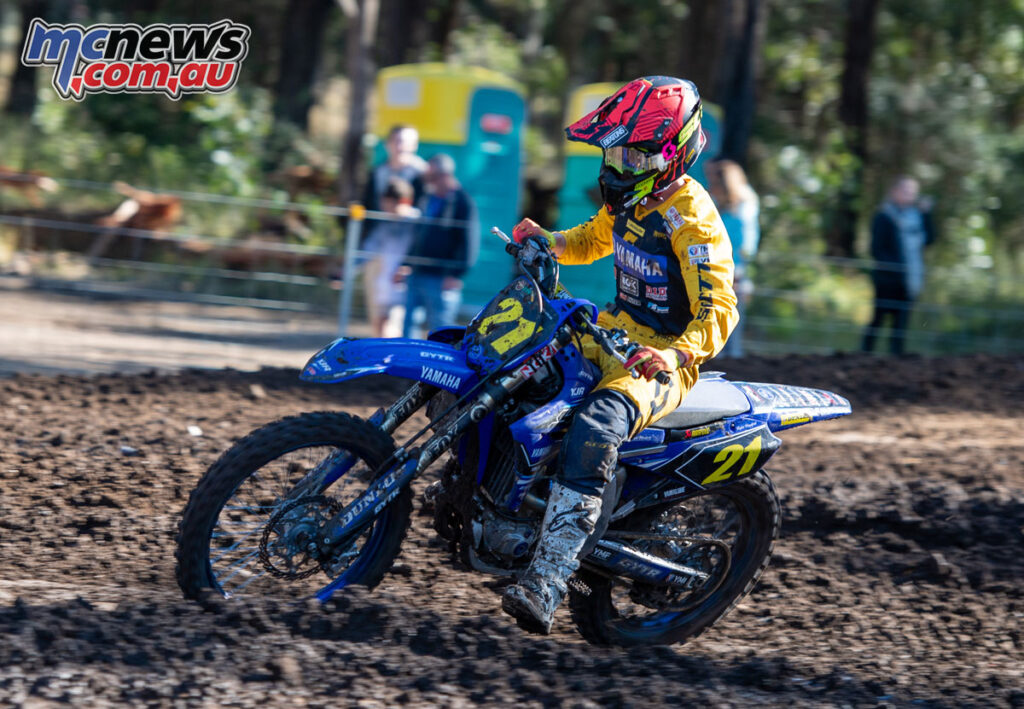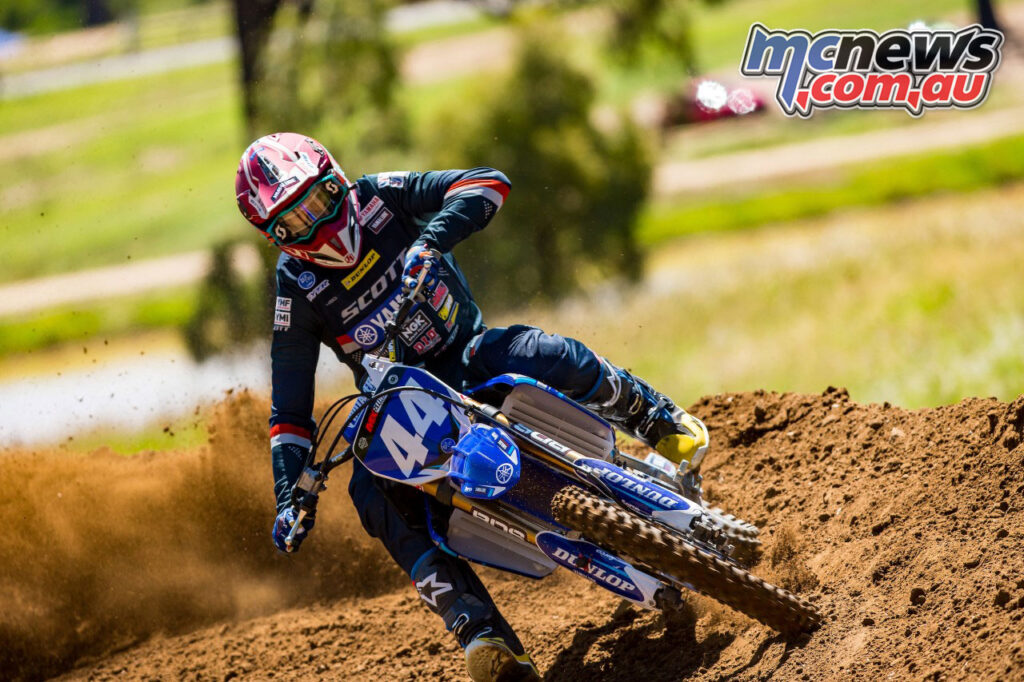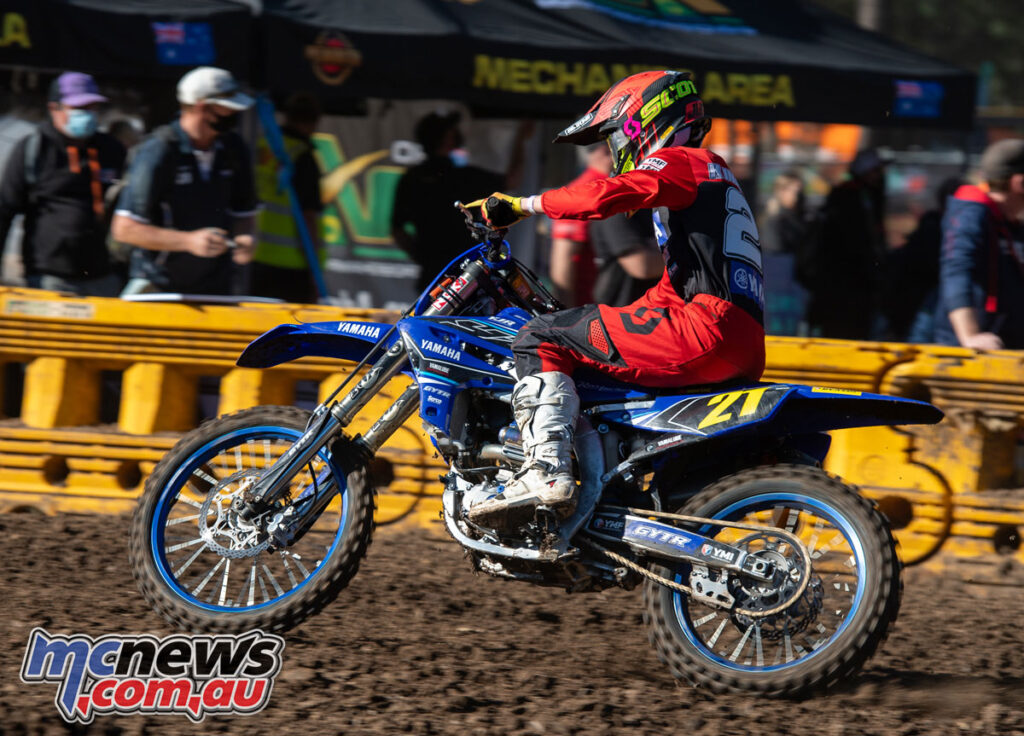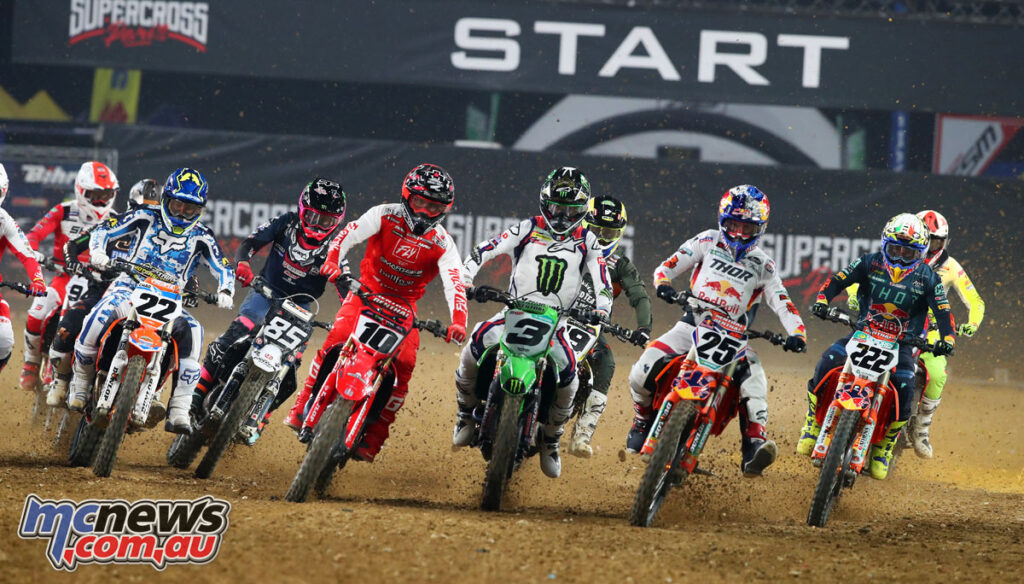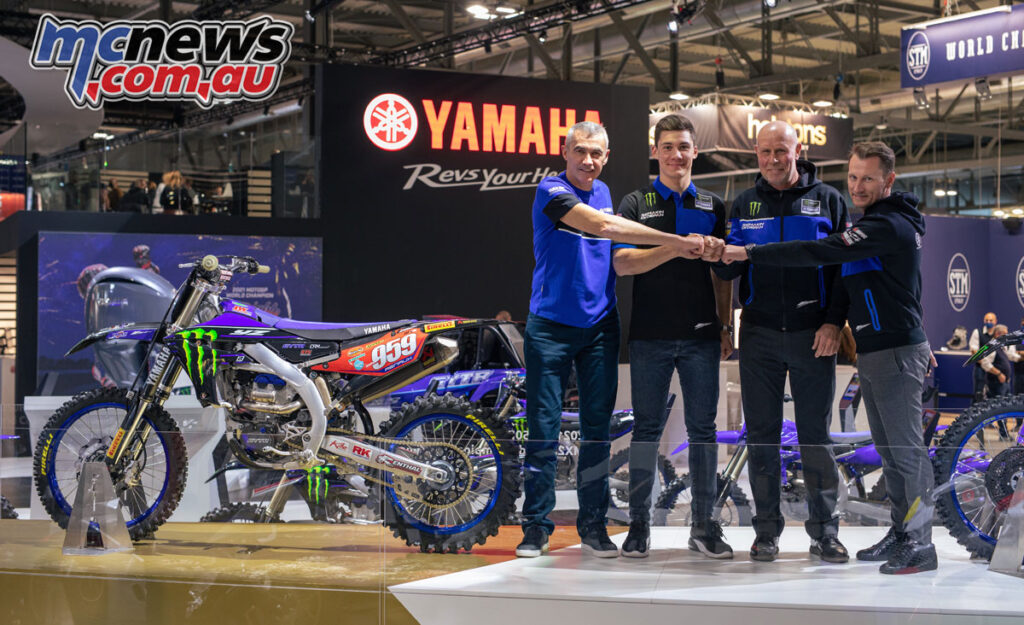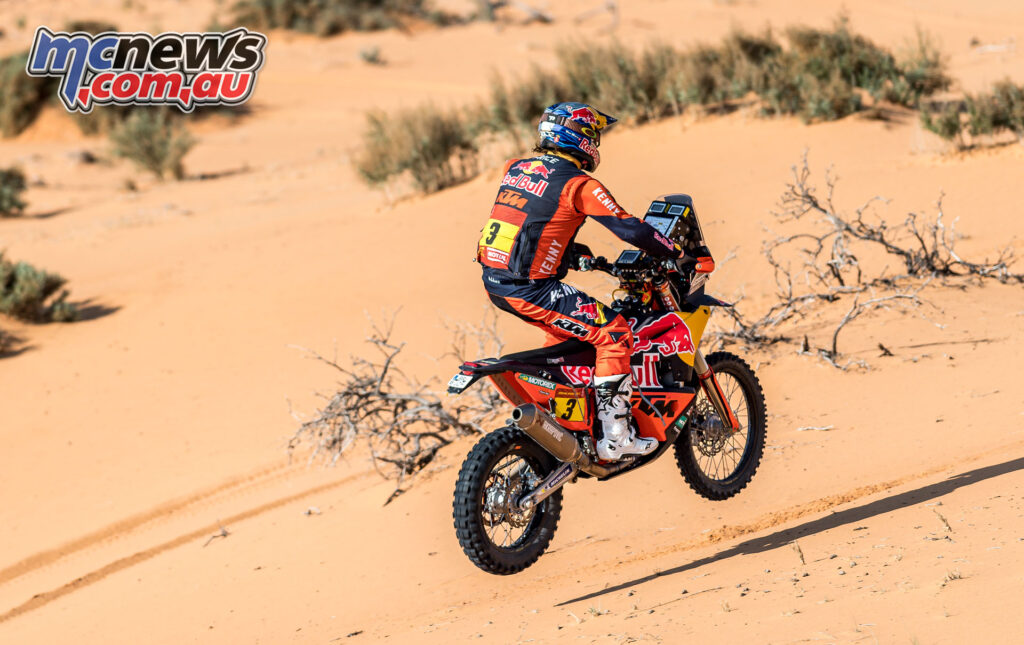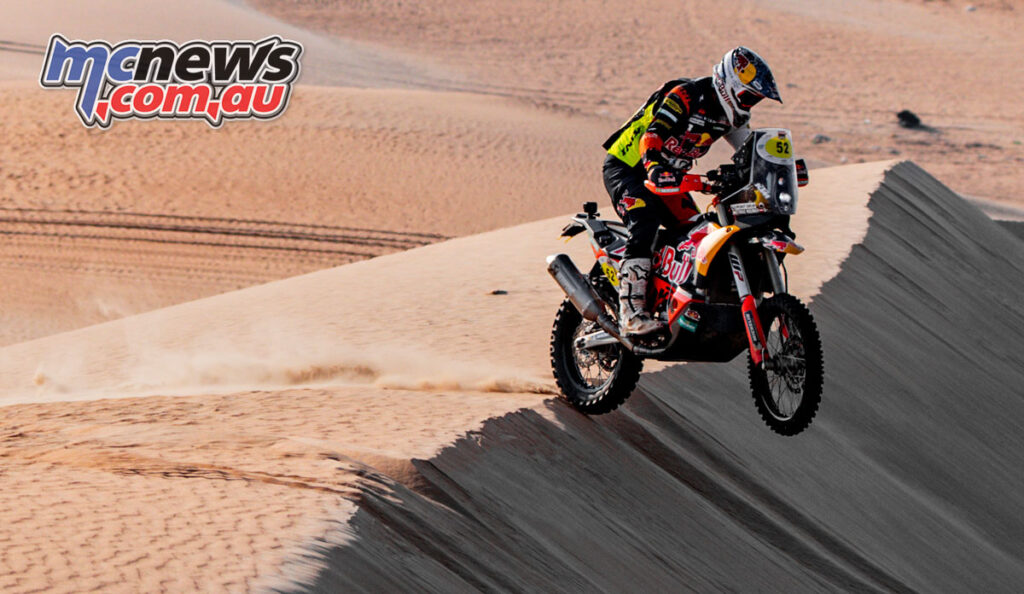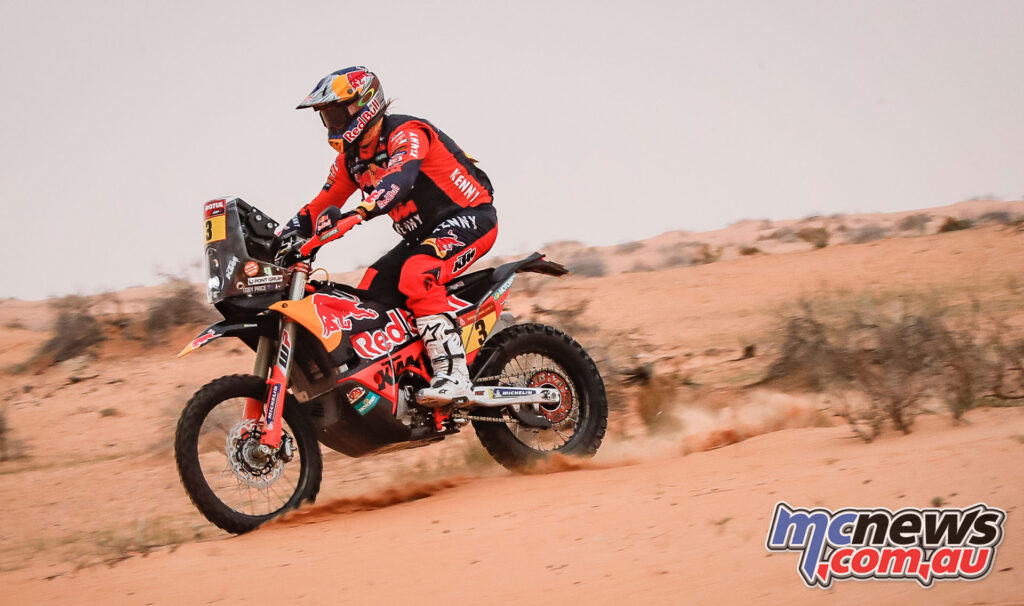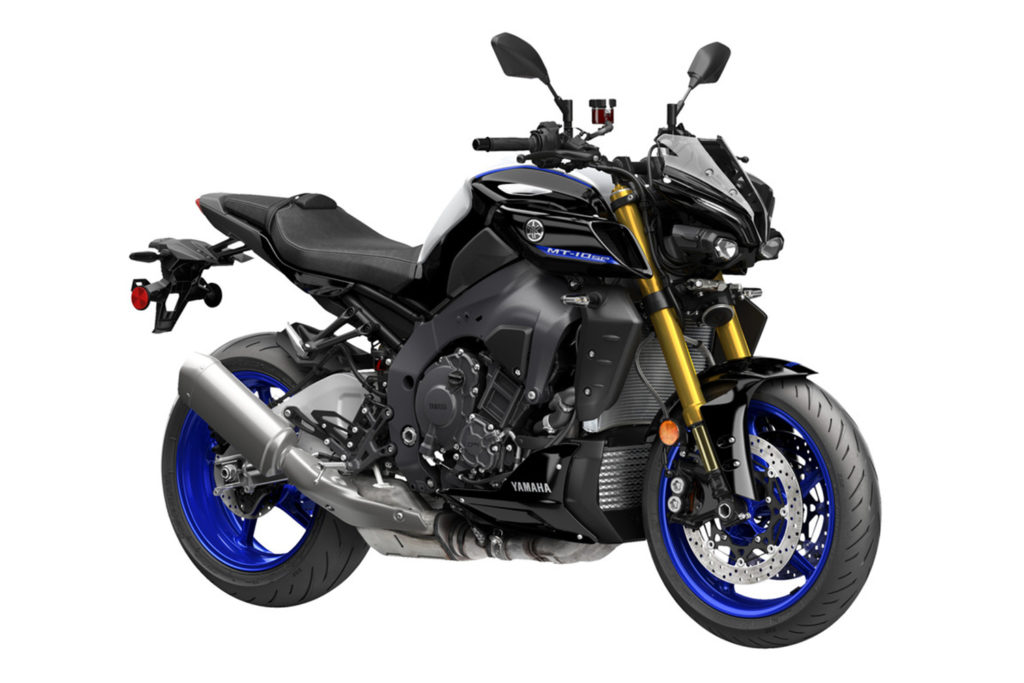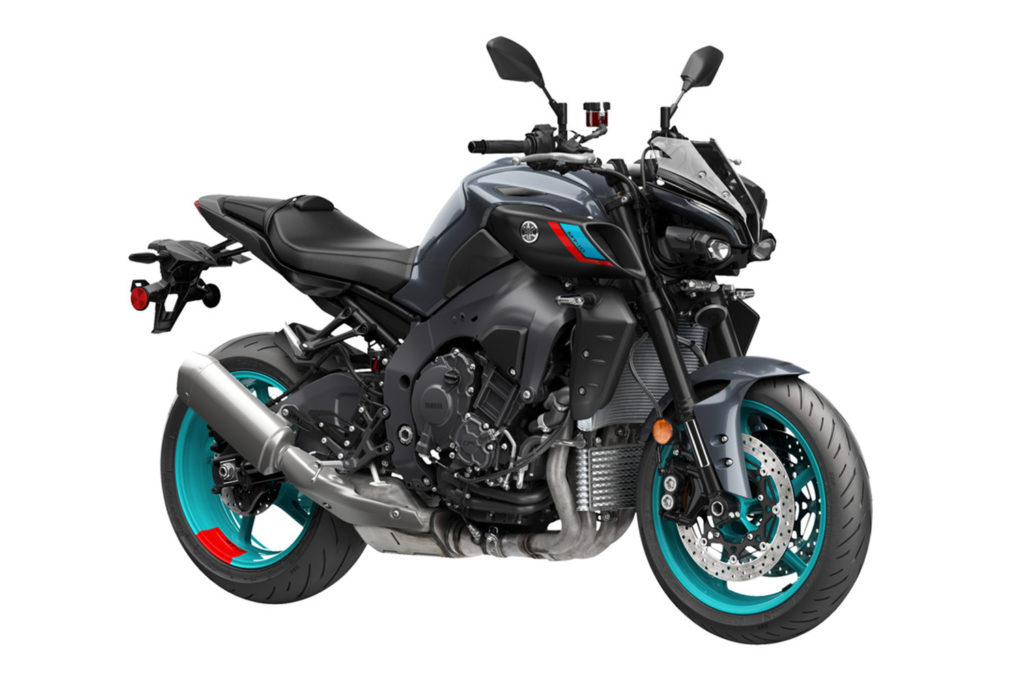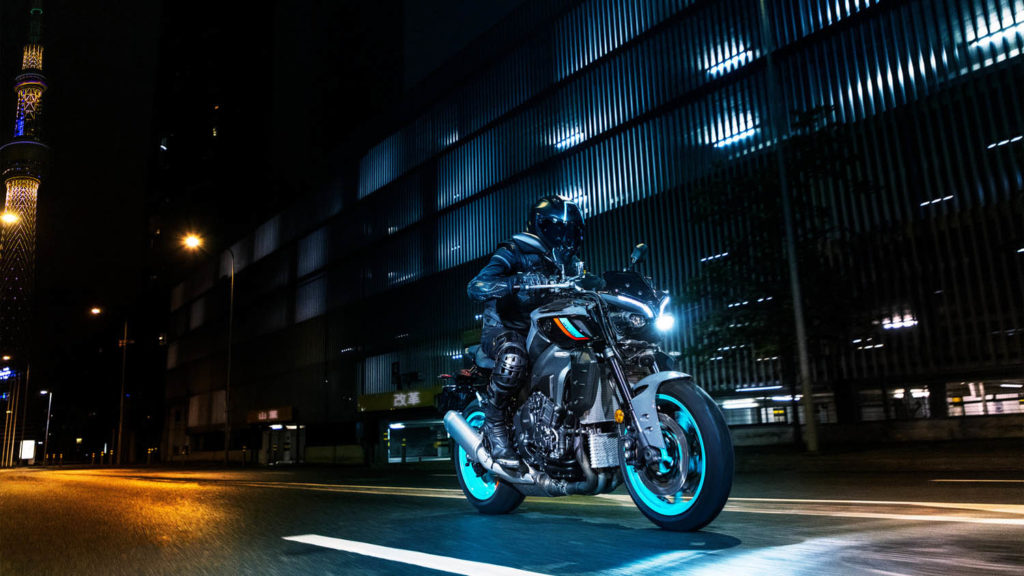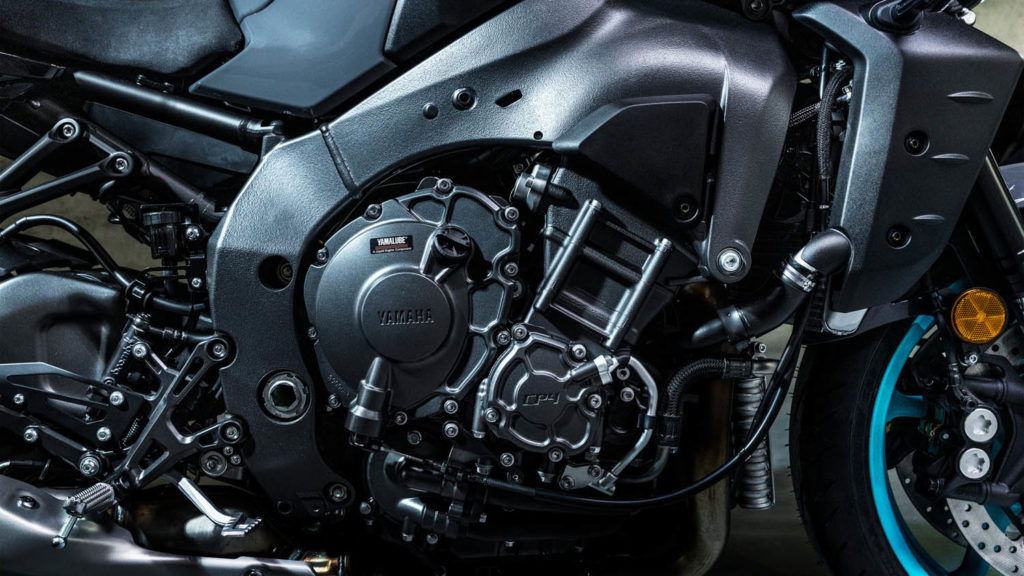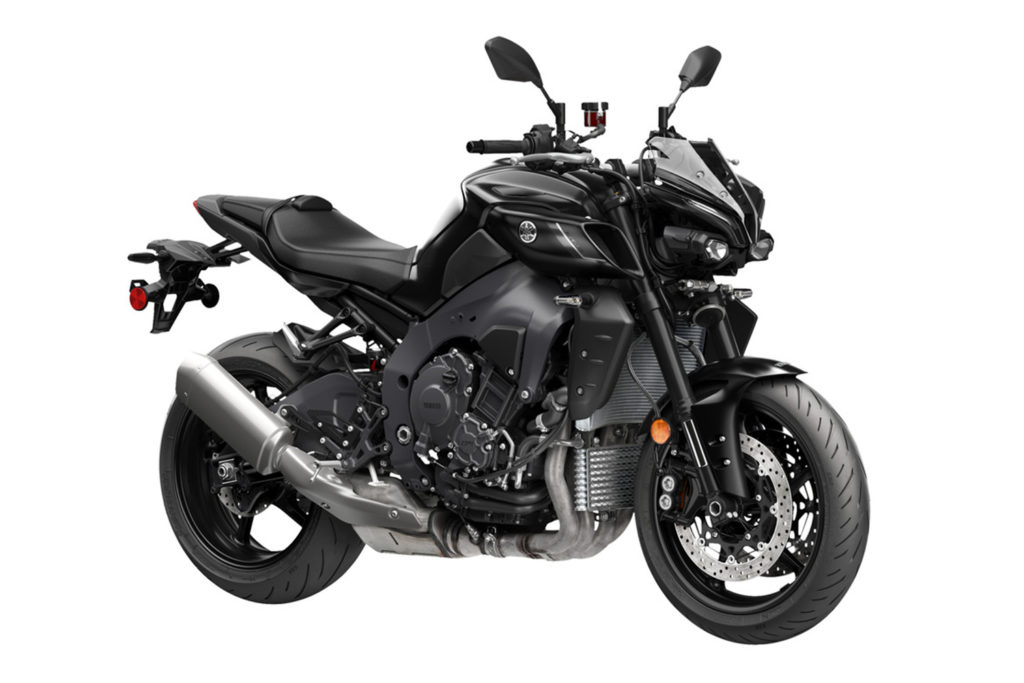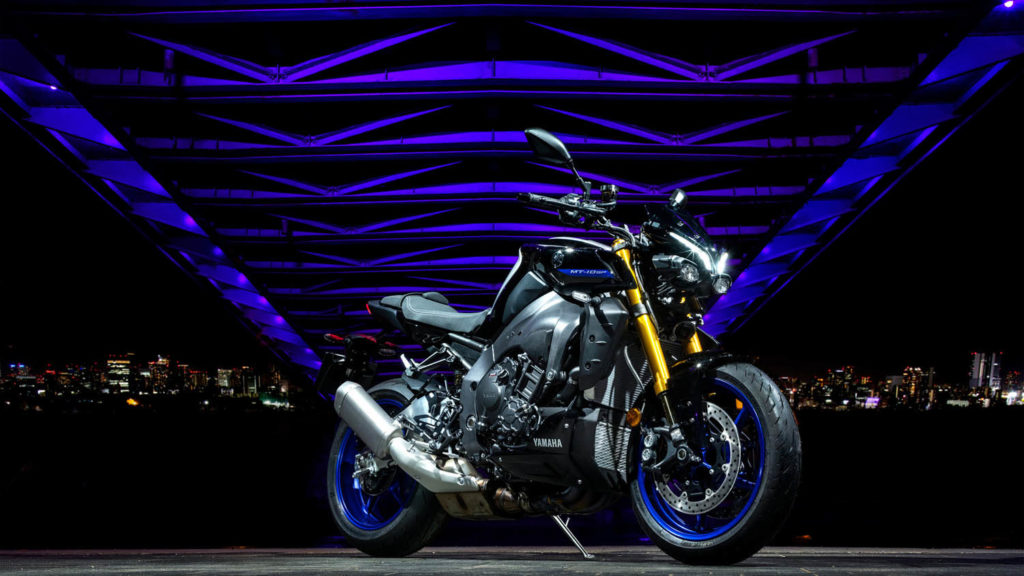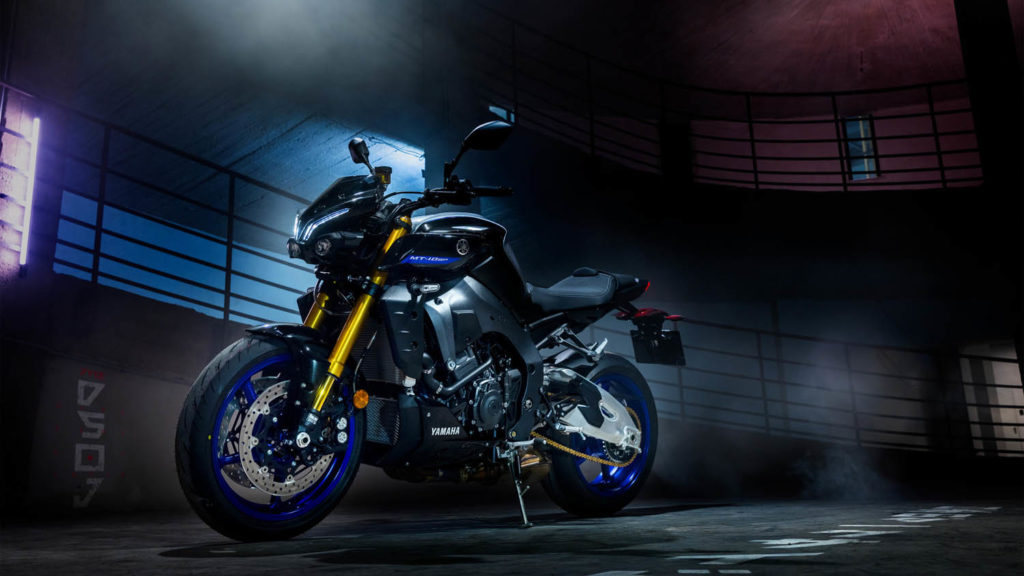Ducati Multistrada V4 S Review
Motorcycle Test by Trevor Hedge – Images by RbMotoLens & TH
Ducati’s latest Multistrada V4 S is a rolling showcase of the most advanced technology available to mainstream motorcycling today. It also a formidable all-roads adventure machine that builds speed with ruthless efficiency, all the while keeping its rider comfortable and either thrilled, or zen, depending on whatever the mood dictates.
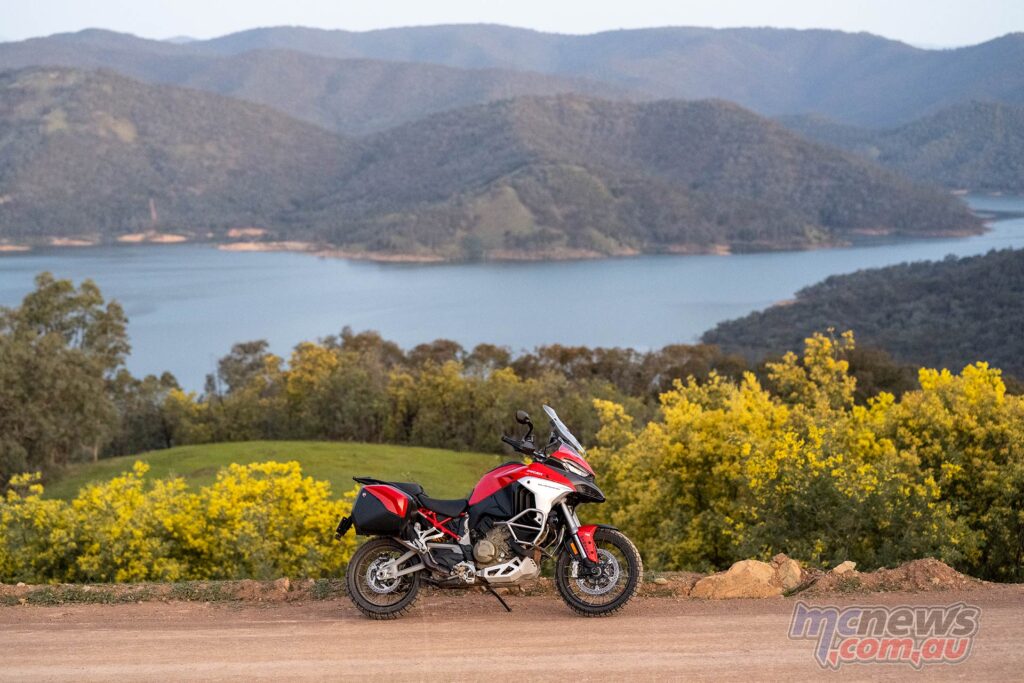
It has 170 particularly well-bred horses that gallop forward with a relentless force, but puts those hooves down smoother than any Ducati that has been bred before.
This is no Panigale V4 motor simply repurposed, but a completely new beast that, while sharing some of the sportsbike’s DNA, is more of a distant well-bred cousin than direct descendent.
It does share the 70-degree offset counter-rotating crank pins that clearly announce its Bologna birthplace as soon as it stirs into life. That twin-pulse beat is unmistakably Ducati, and the engine certainly benefits from the DNA of its sprint racing cousins, but this Granturismo version of the engine has been bred for the steeplechase, it is a very different animal indeed.
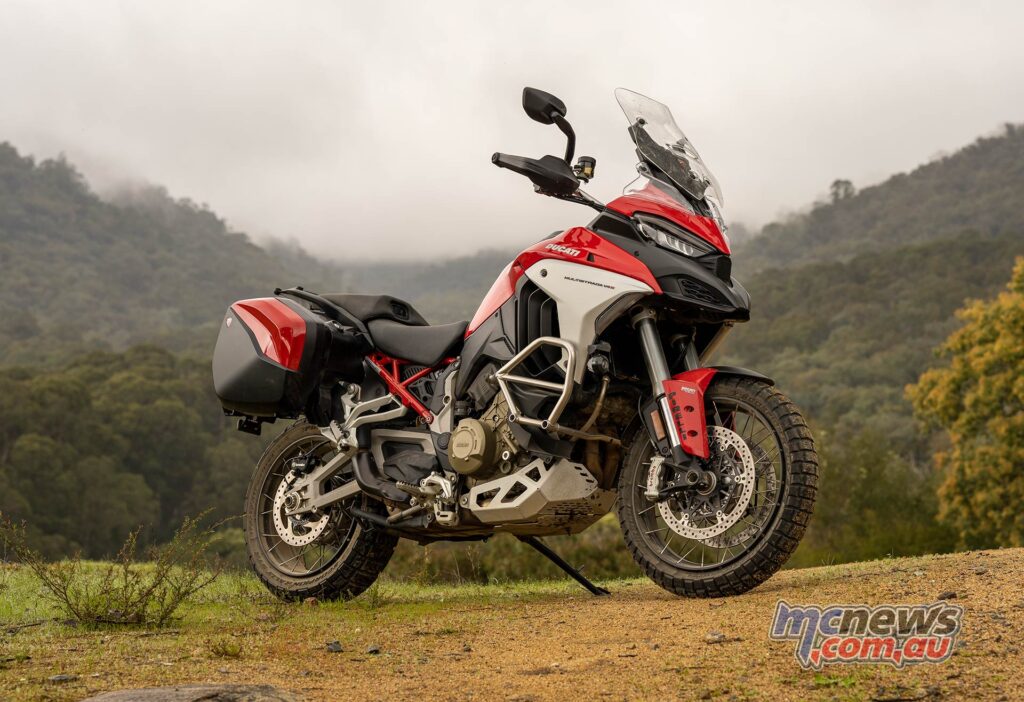
The headline change in the architecture is the move to a more conventional valve-train, that’s right, no Desmo here. Ducati have done it their own way though and dictate 60,000 kilometre valve clearance checks to help reduce servicing costs. Servicing costs was not the only reason though. Desmodromic engines have, by nature, a rough idle and are snatchy at low revs, but this new Ducati V4 Granturismo engine is a smooth operator indeed and conventional valve springs play their part in this equation and to help with heat management the rear cylinders do not fire when at idle.
We have a whole feature that outlines all the changes in detail but the main points are that the engine sports a 2 mm larger bore than the 1100 Panigale to realise a capacity of 1158 cc. It bests the outgoing 1262 cc DVT Testrastretta twin for power, and almost matches it for torque, despite its smaller capacity.
170hp/125Nm, versus 158hp/129Nm for the twin, and despite having two more cylinders the V4 is not only much smaller in its dimensions, it’s also lighter. If you want to dig into the nuts and bolts then check out the aforementioned technical feature, as for how it goes on the road the answer is magnificently.
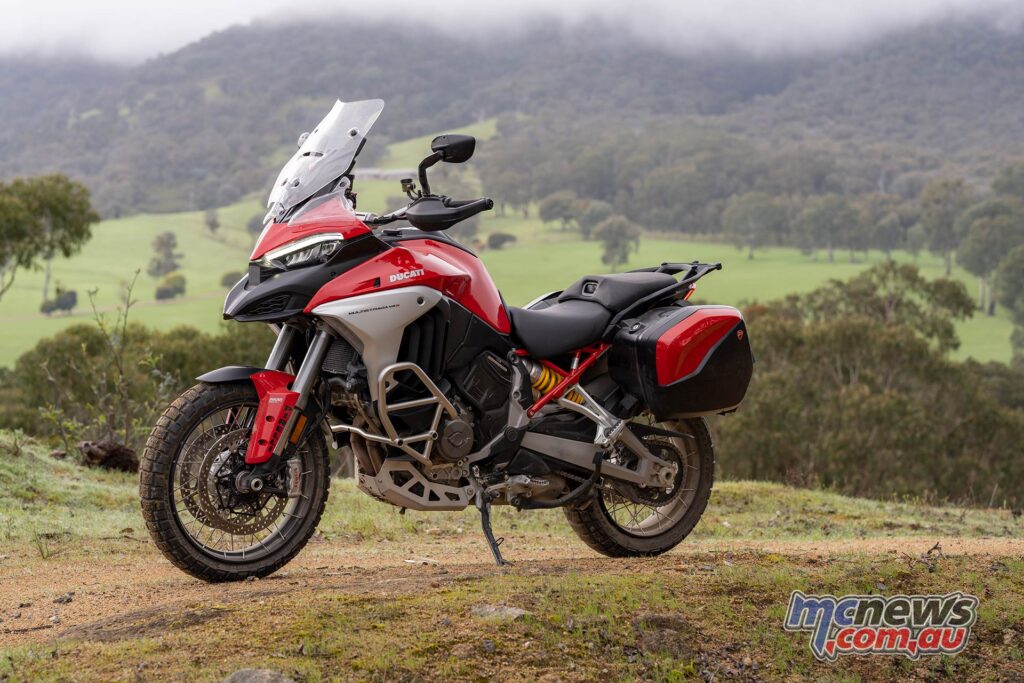
The only criticism is that this bike screams out for a set of pipes! Out of low speed corners you do get a bit of aural accompaniment but it’s not sonorous enough to match the grunt being delivered to the tarmac. Thankfully this is easily fixed with a racier exhaust, and to be fair in these days of Euro5 legislation it is pretty much out of Ducati’s control. These restrictions are not just about emissions, but also very much about noise and those levels can be harder to achieve than getting the gases out of the muffler clean enough to feed as oxygen to baby seals.
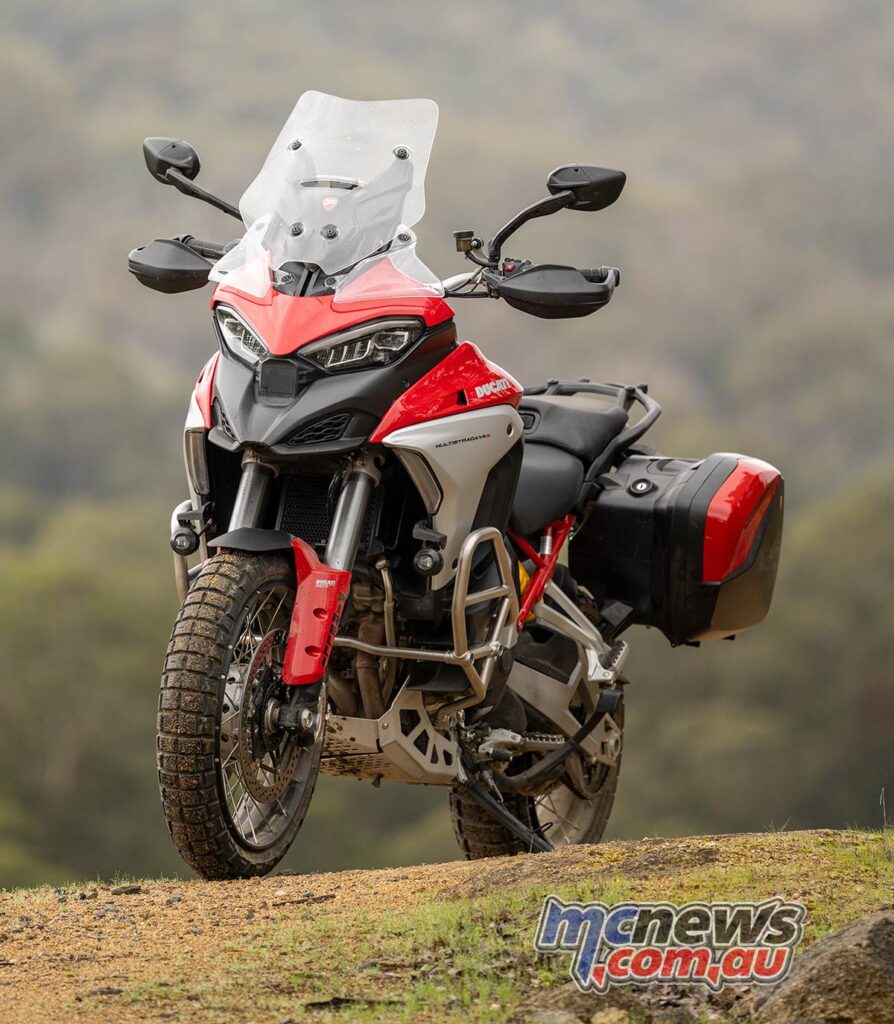
I have to rave about the quick-shifter though. I’ve used countless quick-shifter set-ups over the years, including many of the latest two-way set-ups, but shifting on the particular Multistrada V4 S I rode was next level. It had me thinking Ducati had slipped a MotoGP seamless shift gearbox into my test bike, seriously, this has to be the next best thing… It was flawless to the point of having me scratch my head trying to figure out what voodoo they had conjured to make it so perfect. I feel like I need to keep raving about it more but that will do your head in so have to move on…
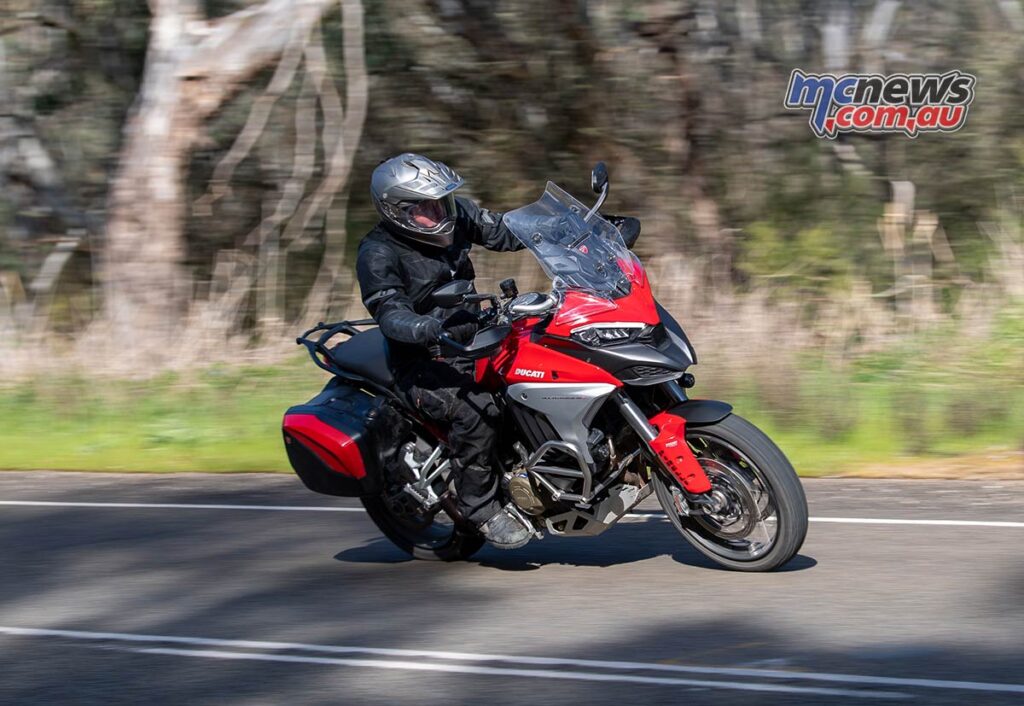
On the highway the touring range provided by the 22-litre fuel tank is in excess of 300 kilometres, but if you start using most of those neddies then economy suffers quite markedly and you can burn through a tank in under 250 km, quite easily.
The suspension I was not quite so enamoured with from the off. The Skyhook suspension on this model year has an automatic levelling function which automatically sets the sag after sensing the load onboard. There are a gazillion options in the set-up menu for the electronic suspenders and in Sport mode I still had to stiffen it up to almost maximum before the rear shock would stop blowing through its stroke on compression when riding average B roads at pace. There are 24 different levels of pre-load which can be set via the menu system and I ramped it up to maximum. Each step adds 0.5 mm of pre-load, which equates to 12 mm of pre-load being added when set to level 24.
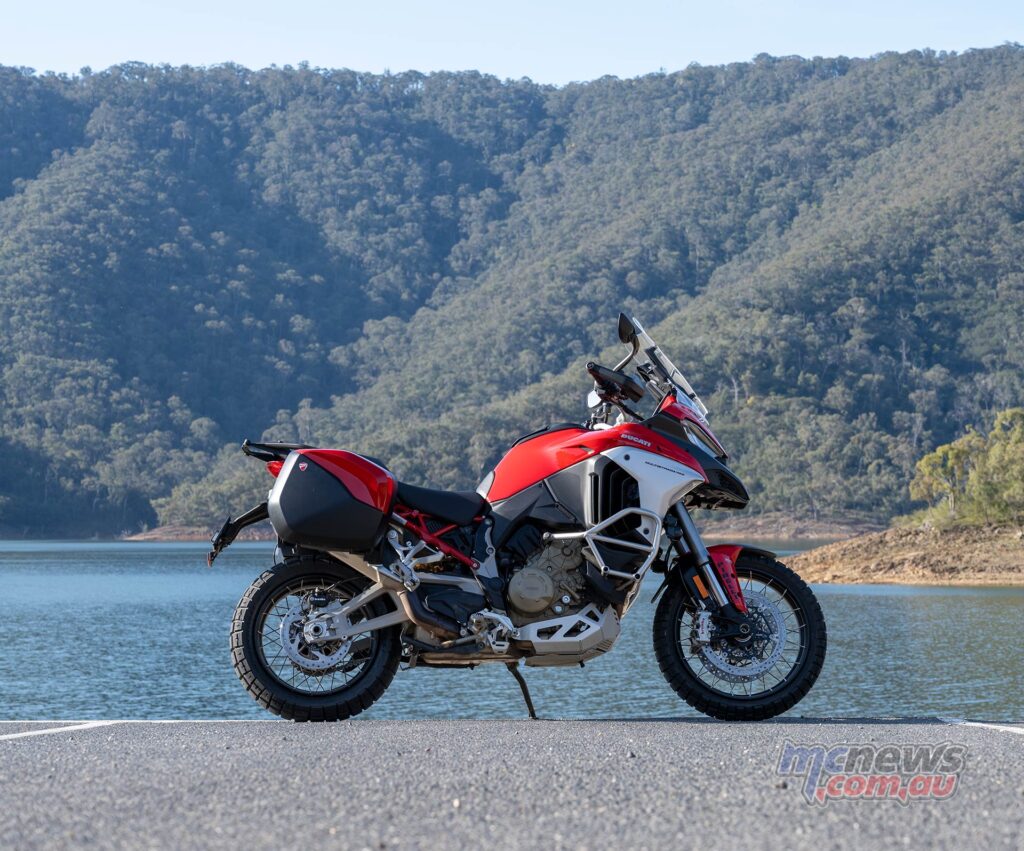
Yes a big part of my preference for dialling that right up is that I am larger than the average bear, but still Ducati claim a load capacity of 230 kilograms and I am only about half that. I have found over the years that shocks without linkages are much more sensitive with their set-up. If they are not in their happy place, when it comes to pre-load and damping settings, then they just blow through and don’t cut the mustard. It’s a fact that shocks in bikes without a rear linkage work much harder than bikes with a conventional rear suspension design.
Ideally it would have a heavier spring in the rear for my bulk, but I am happy to report that the electronic suspension had enough variables to choose from in order to make it work well enough. There really is an incredible level of suspension tuning available to the rider, all from a few button presses through the menu system of the brilliant 6.5-inch TFT screen. All the switch-gear is back-lit which is a nice touch.
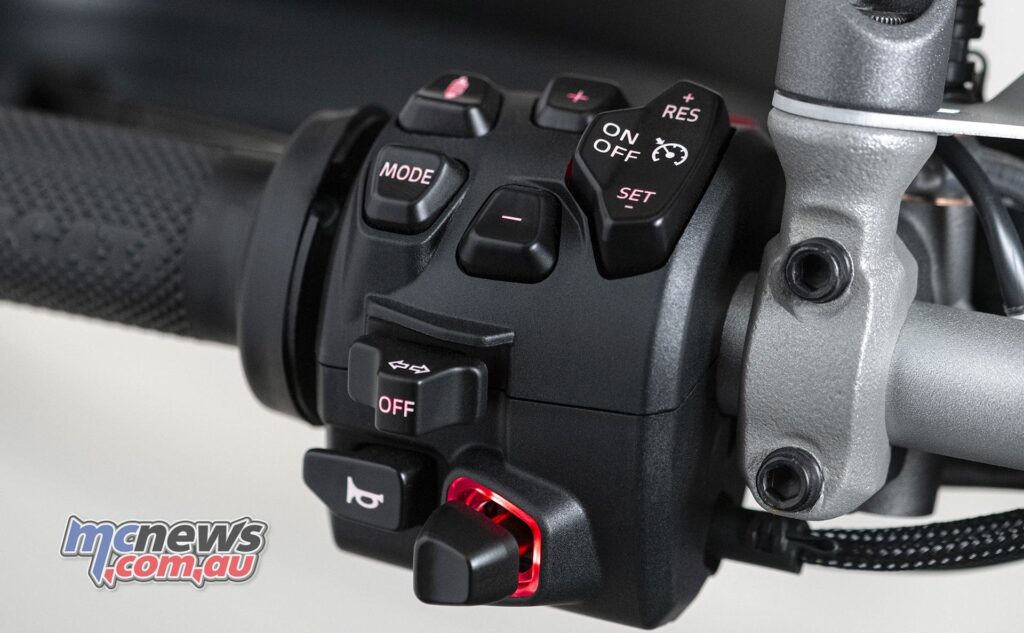
The front seemed to work fine although with our test bike wearing chunky dual-sport Pirelli Scorpion Trail II tyres you could feel the tread blocks squirming a little when you really started to press on. The top-shelf Brembo Stylema stoppers had more than enough power and feel to smash that Pirelli into the bitumen, however lever feel and feedback is tactile enough to make them still useable off-road.
Earlier Multistrada models made no real pretence of having any serious off-road ability, but that all changed recently as Ducati turned their focus to err a little more on the ‘all roads’ side of the equation and have made the Multistrada more off-road ready than ever before.
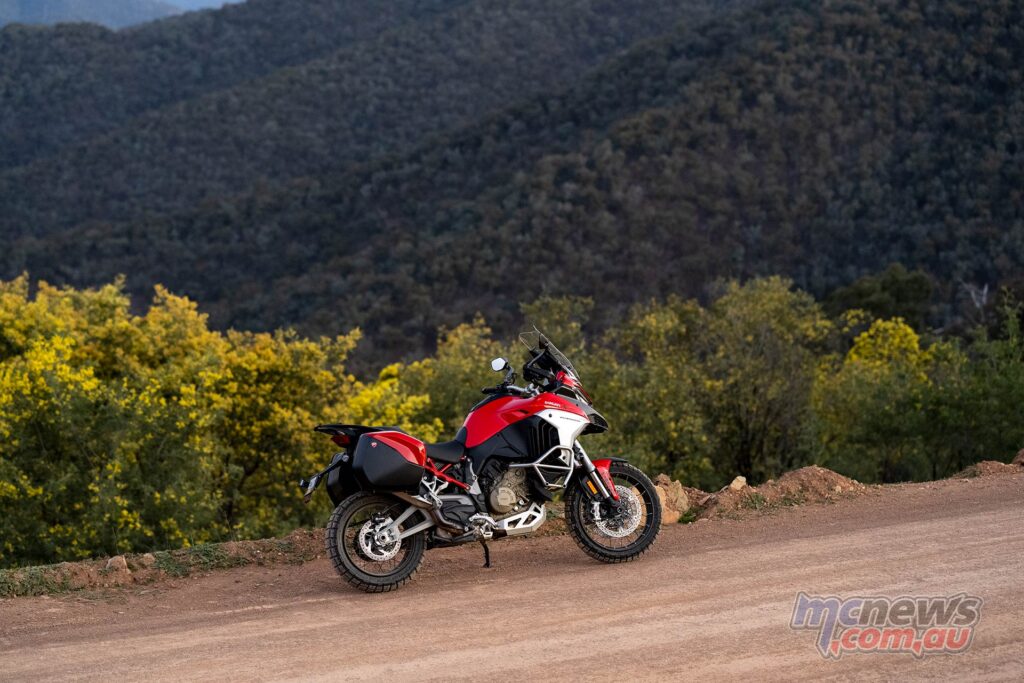
A 19-inch front operates through a generous 170 mm of suspension travel while the rear 170/60-17 works through a suspension stroke of 180 mm. Thus clearly, despite all its electronic smarts, it is never going to be as taut and performance oriented as a Panigale, nor would you want it to be in the real world, or you could certainly never do this…
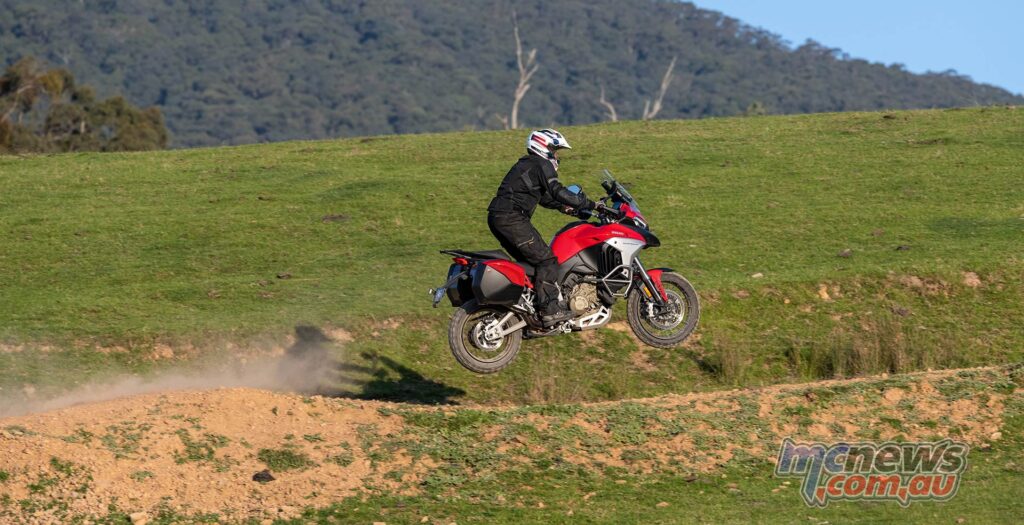
With the recent announcement of a new Multistrada V4 Pikes Peak, complete with much lighter 17-inch Marchesini rims at both ends, Ducati have added the most sporting Multistrada they have ever made. It still has 170 mm of suspension travel, but instead of the Marzocchi system used on the other Multistrada models, the Pikes Peak edition uses Ohlins EC 2.0 suspension with events based smarts. This makes the coming Pikes Peak model the first Multistrada ever to wear Ohlins, and the systems that drive it are the same as used on the Panigale V4 S and Streetfighter V4 S. It also runs different geometry compared to the other Multistrada models, has a more sporting riding position and runs sportier pads in the Brembo M50 Stylema calipers.
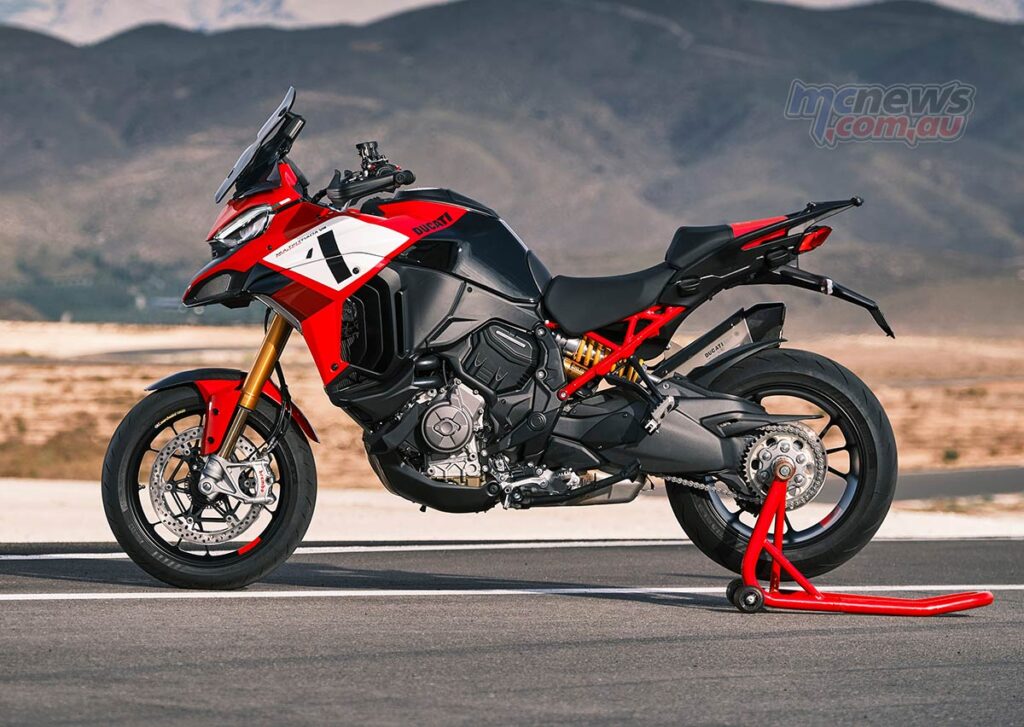
Clearly the Pikes Peak is the Multistrada for the more serious tarmac warrior, and I am sure it would also do more than okay at track days too! But anyway, let’s get back to the more dual-sport Multistrada, in particular the V4 S we had on test. And to be honest, that really does provide plenty of tarmac performance as it is.
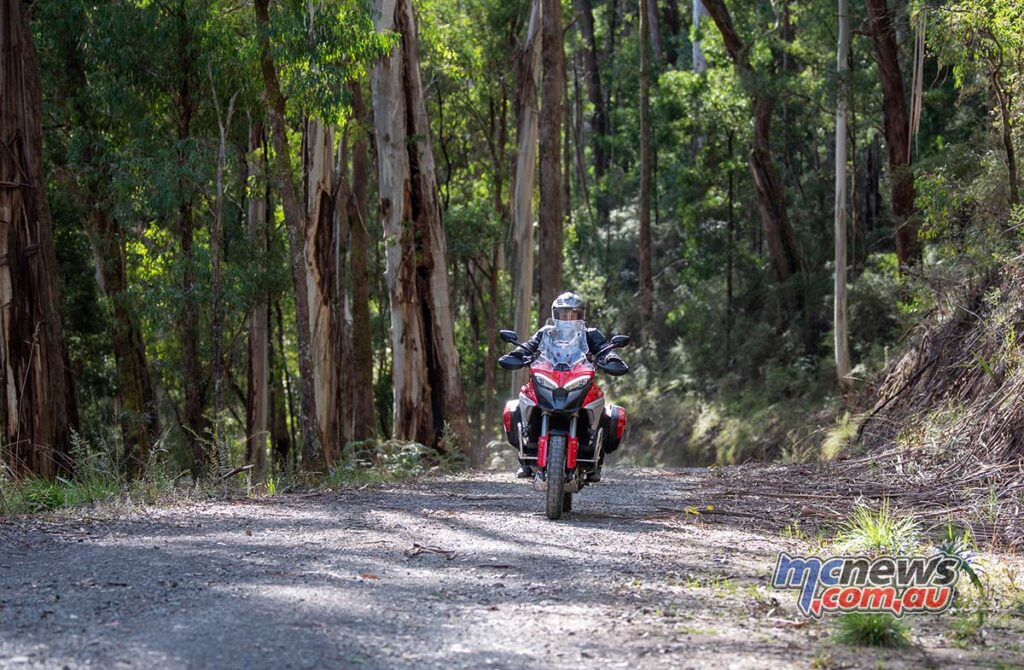
A couple of 300 km loops that took in the Reefton Spur and all the best back-roads in Central Gippsland had really seen me start to gel with Multi. With the suspenders firmed up I was now in my happy place showing those Pirellis no mercy. My riding partner remarked that they could actually see smoke coming from the tyre at times, this was simply due to them hooking and driving through those big blocks of rubber as there was no sideways action going, they were holding on remarkably well.
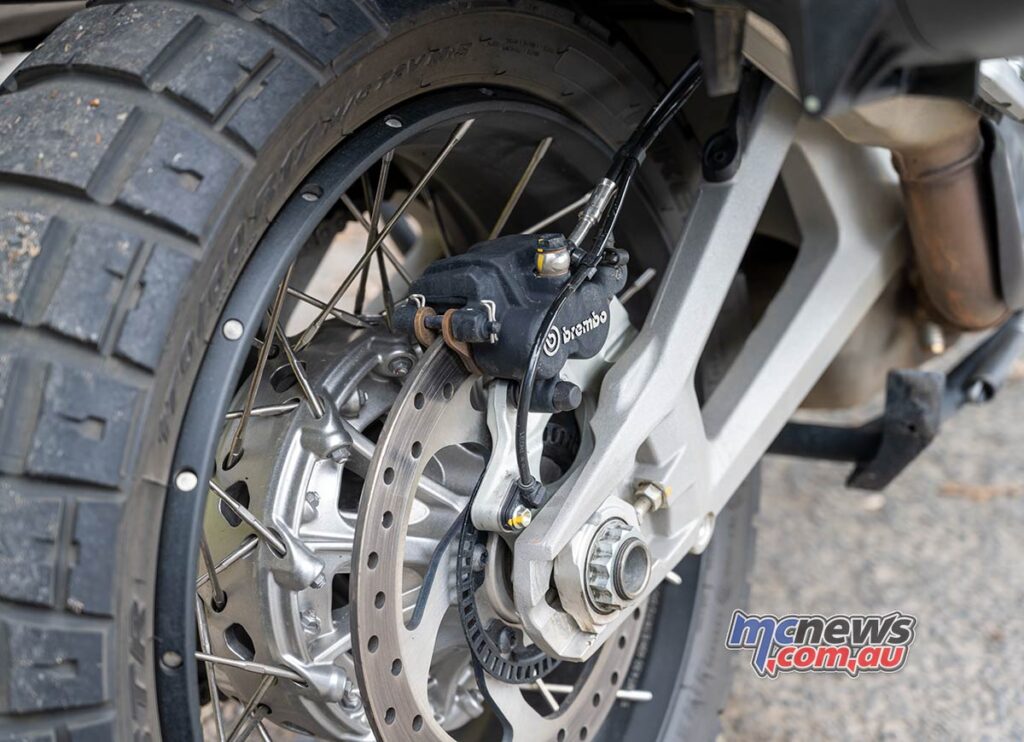
I could not believe they weren’t shredded by the time we got home, as I could feel those tread blocks moving around, but somehow they didn’t start falling apart. A bit of technology in the tyres as well as the bike it seems and these hoops were developed especially for this bike in a joint Pirelli and Ducati partnership, it shows.
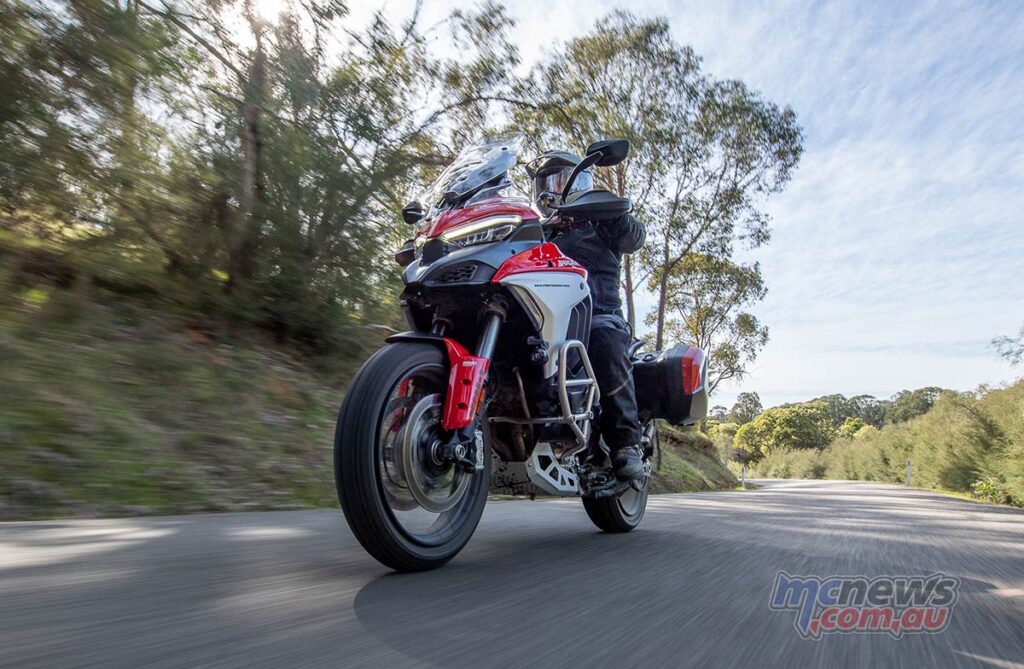
I could probably write 10,000 words on the subject of technology when it comes to this bike, and still not cover everything in fine detail. Thus while we all know about riding modes, lean-angle sensitive ABS/Traction, wheelie control, hill hold, engine braking control, all of which are best in the business, and can be fine tuned to your preference, let’s cover another trick up its sleeve that is only now starting to feature on a select few motorcycles.
Radar assisted Adaptive Cruise Control and Blind Spot Detection. I mean really, is this stuff actually useful on a motorcycle? To my surprise, yes, very much so. Don’t diss it until you try it.
Running on a dual-lane highway the adaptive cruise senses the vehicle in front is closing, due to its lesser speed, and slows the motorcycle to maintain a safe distance. Change lanes and immediately the motorcycle senses that there is no longer a slower vehicle ahead and it accelerates smoothly back up to the speed you had set. You can also change the distances it will intervene and separate you from the car in front. For someone running interstate highways or main roads across the burbs it would prove a genuinely useful asset.
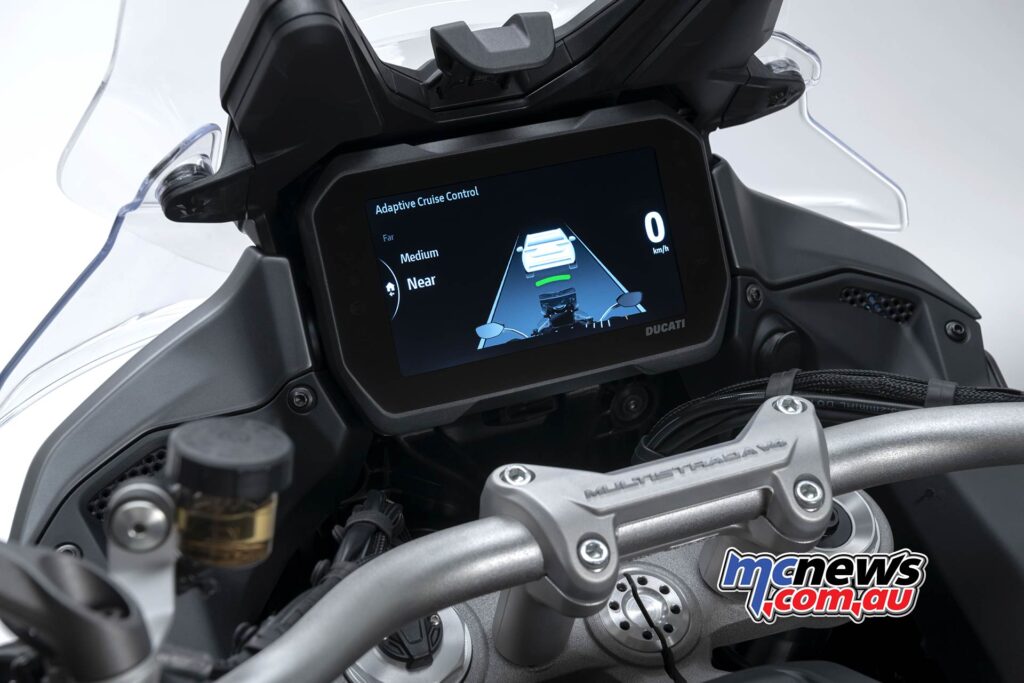
Likewise the Blind Spot Detection systems worked flawlessly during my time with the bike, a small light in the mirror alerting you to an approaching vehicle can be quite reassuring. Both of these features are genuinely useful. The mirror stalks are also new for this model year and now actually still provide vision if you want to stand on the pegs while riding off-road.
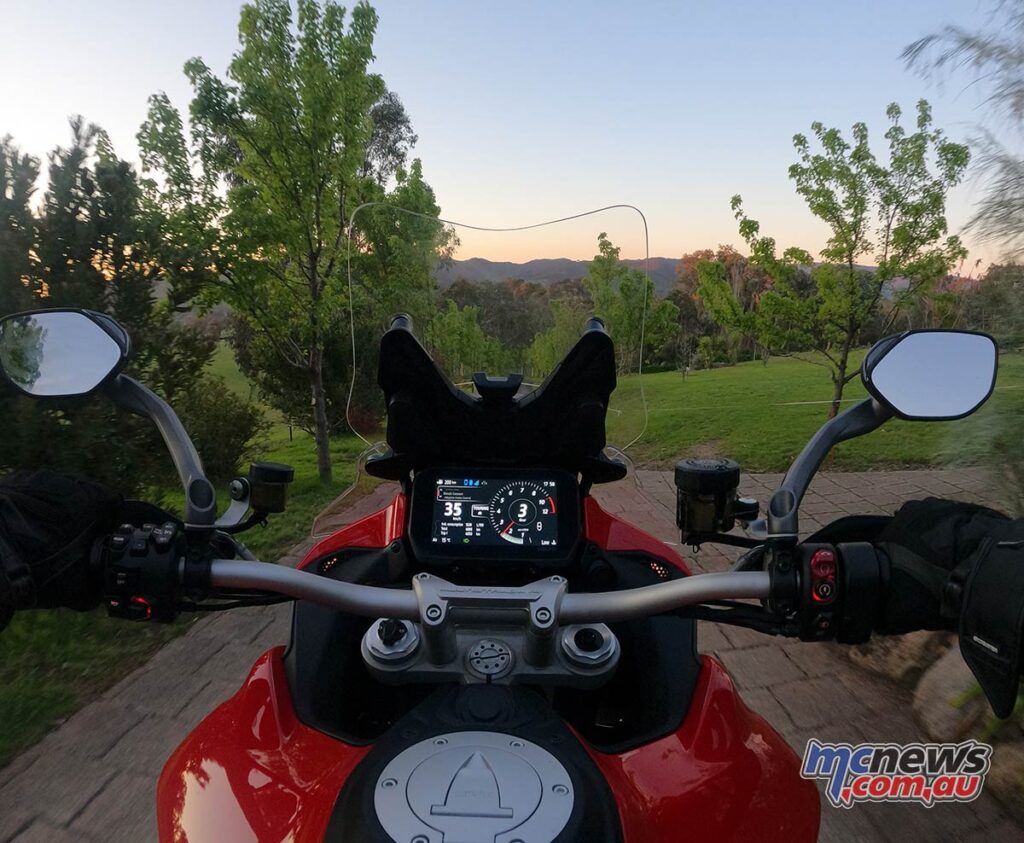
Ducati are more advanced than any other motorcycle manufacturer when it comes to aerodynamics and while the Multistrada doesn’t sport wings like the Panigale, you can still tell extensive wind tunnel development has taken place. The windscreen is brilliant considering its size.
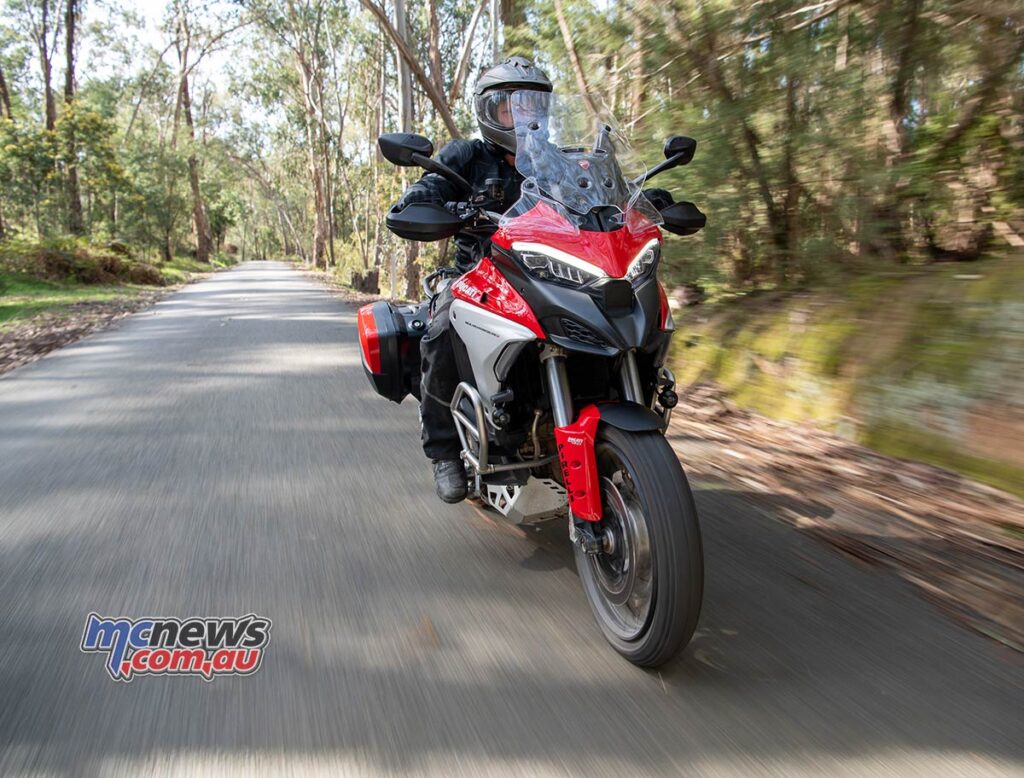
No buffeting of my Shoei no matter how I change position, no reverse buffeting either, and even with the panniers on, the Multi was rock solid in cross-winds. It’s also adjustable with a single finger and no doubt those side deflectors make their contribution to the aero performance.
I love decent integrated luggage. It makes last-minute overnighters so convenient. Just throw your clothes, shoes, wash-bag, camera, computer in and away you go. Get to the destination and need to do a run for some rum cans or bourbon to bring back to your digs, simply slot it in the panniers and away you go. I think you might be able to use them for less important items like food too.
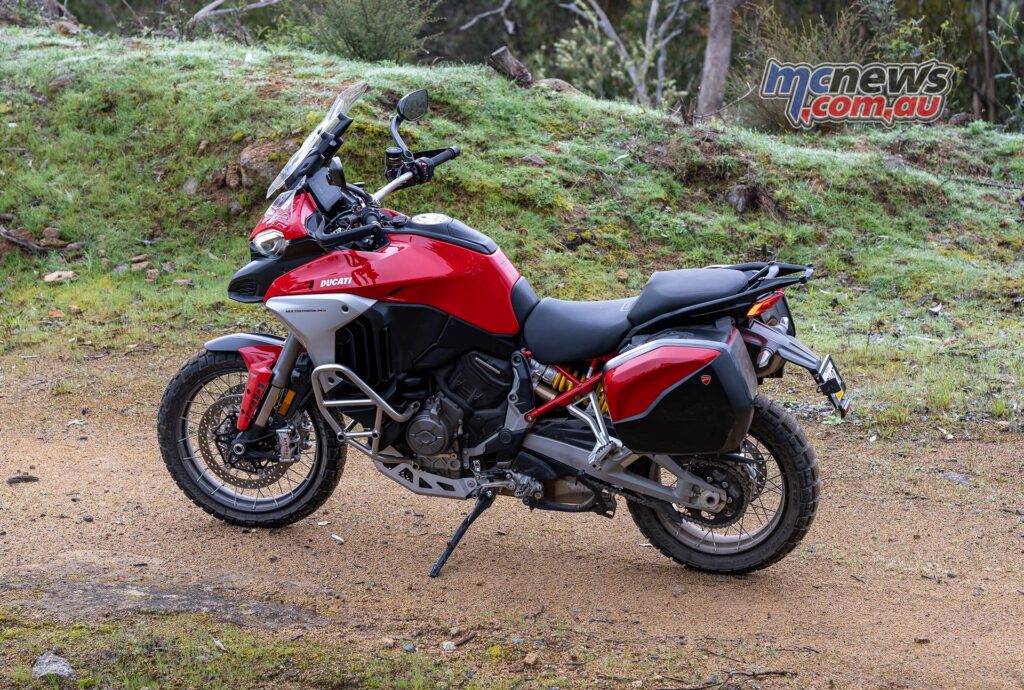
The seat is plush but also supportive, really impressive. On the ‘Travel and Radar’ optioned bike we had on test both the rider and pillion seats are also heated. Luxury…. The standard seat is adjustable between 840 and 860 mm while an optional extra low 810 mm seat is available as an option, as is a high 875 mm perch.
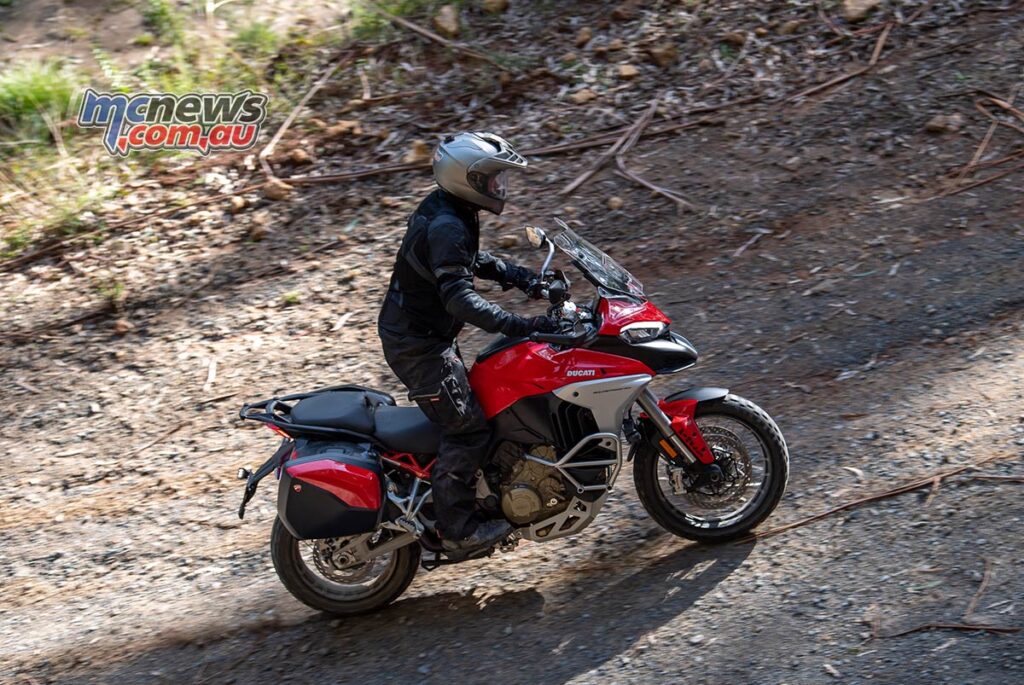
Both the lights and optional spot-lights worked well. I certainly appreciated the spot-lights as any dawn, dusk or night riding around my way is an exercise in roo, wombat and deer dodging.
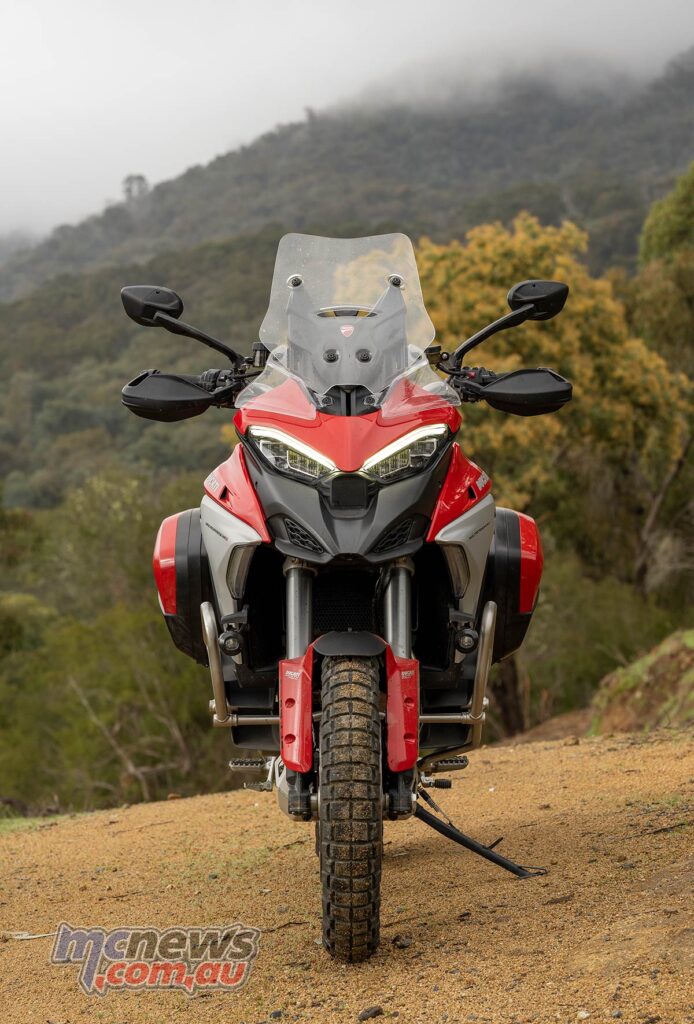
Amazingly, despite all the technology on this Multistrada V4 S with ‘Travel and Radar’ pack, tyre pressure monitoring was missing, and after spending $37,590 on this motorcycle you might be put out a bit after having to cough up more for that fairly basic and genuinely useful feature.
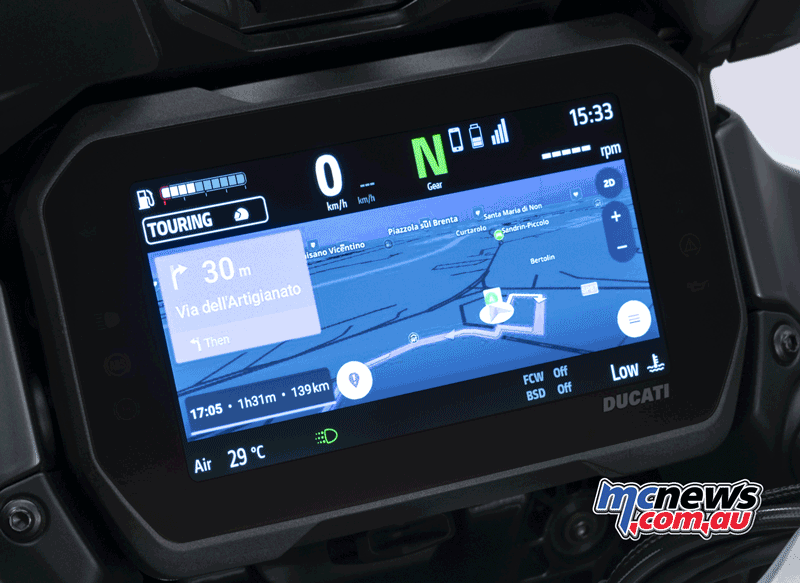
The TFT screen functionality includes the increasingly popular Sygic Maps for navigation. You will need to download the maps for the states you are travelling in and also the Ducati Connect app to your phone. It all works well enough with a reasonably intuitive interface and controller system.

It really would need another 5000 words to take you all through the functionality, but instead we will just show you these videos kindly provided by Ducati that walk you through the systems. You can even set a pin code whereby you can still start your bike if you misplace your proximity key.
This first video gives you an overview of the functionality offered and customisations available. From the internal tyre calibration functionality when you fit new rubber, to the huge amount of suspension and rider mode adjustments available via the menu system.
This second video runs you through the adaptive cruise control and blind spot detection systems. They worked perfectly in my time with the bike.
This third video runs you through how to use the Ducati Connect system and the apps required to activate the extra functionality. Your phone sits in a pocket at the rear of the 22-litre fuel tank, it is big enough to swallow the latest Pro Max iPhone and includes a USB charging port.
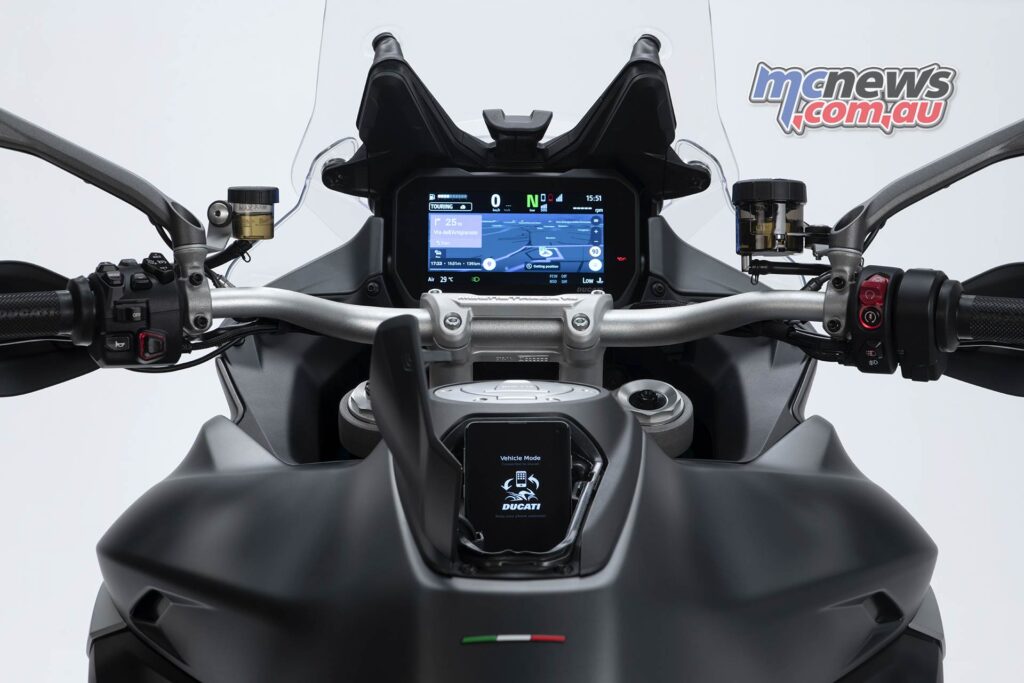
One thing that sets the navigation system apart from many is that you do not have to be wearing a Bluetooth headset in order to use the navigation. As someone that generally can’t be bothered faffing about with headsets this was very welcome indeed. Bellissimo Ducati!
So from those videos you can see this bike has a lot going on and is a far cry from the relatively simple original. This latest machine fully loaded with all the fruit may weigh a few more kilograms than the 2003 original but it makes exactly double the horsepower of that original Desmo DS twin and a heap more torque.
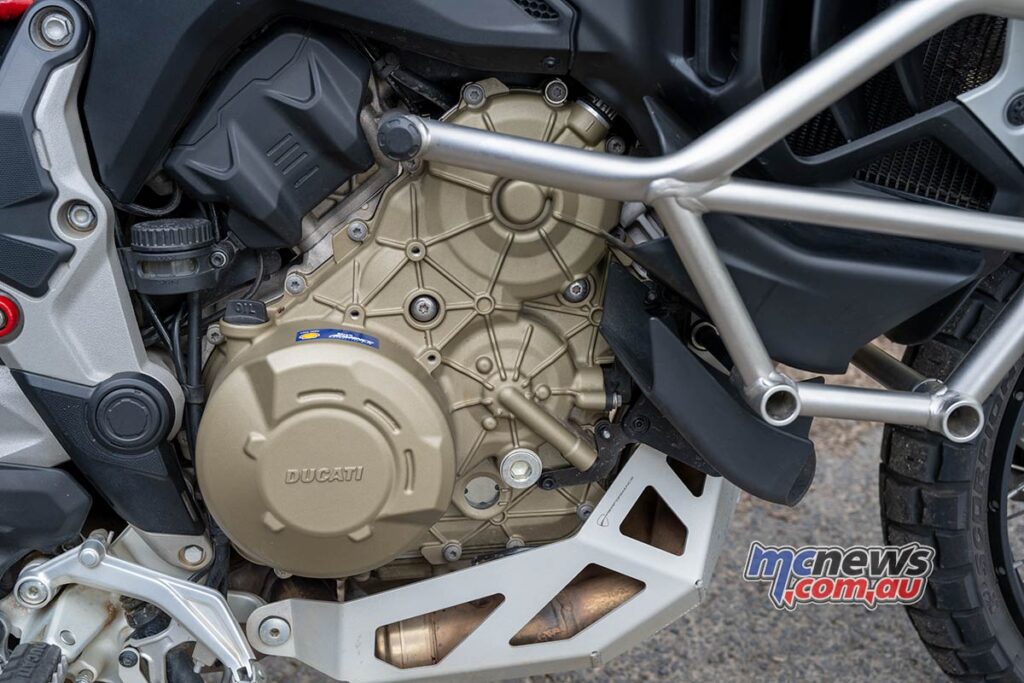
I really must end this review by revisiting that truly incredibly GranTurismo V4 engine I raved about earlier. It propels you forward with such smooth and effortless shove that it really is a joy to command from your right hand. That best in the business quick-shifter also plays its part in helping this drivetrain stand out as the most impressive engine I have sampled.
It really does conjure up the old iron fist in velvet glove adage but its so good we might have to make that magnesium paw in satin mitt as its just too smooth for that original aphorism. On the road it is just about perfect, off-road, even with all the electronic smarts smoothing out the power delivery it does not hook up quite as fluidly as its twin-cylinder competition, but that’s to be expected.
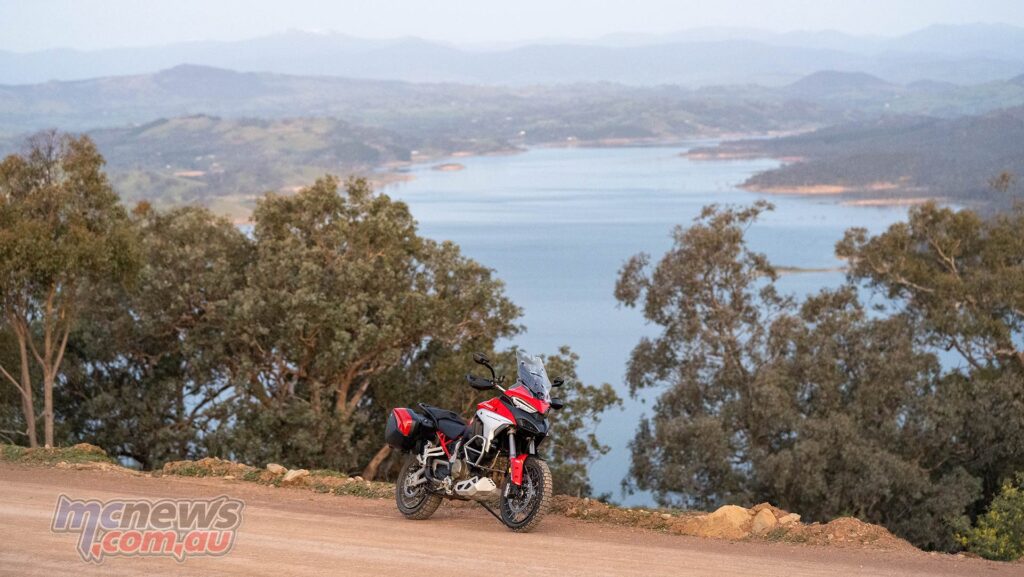
Ultimately outright tarmac performance is hindered a little due to its dual-sport geometry and long-travel suspension but it is that, and its pretty impressive 220 mm of ground clearance (46 mm more than its predecessor), that also manages to give the Multistrada more off-road chops than most previous incarnations of the model. I can imagine the new more tarmac focussed Pikes Peak edition is going to prove perhaps the fastest point-to-point real world motorcycle on the planet.
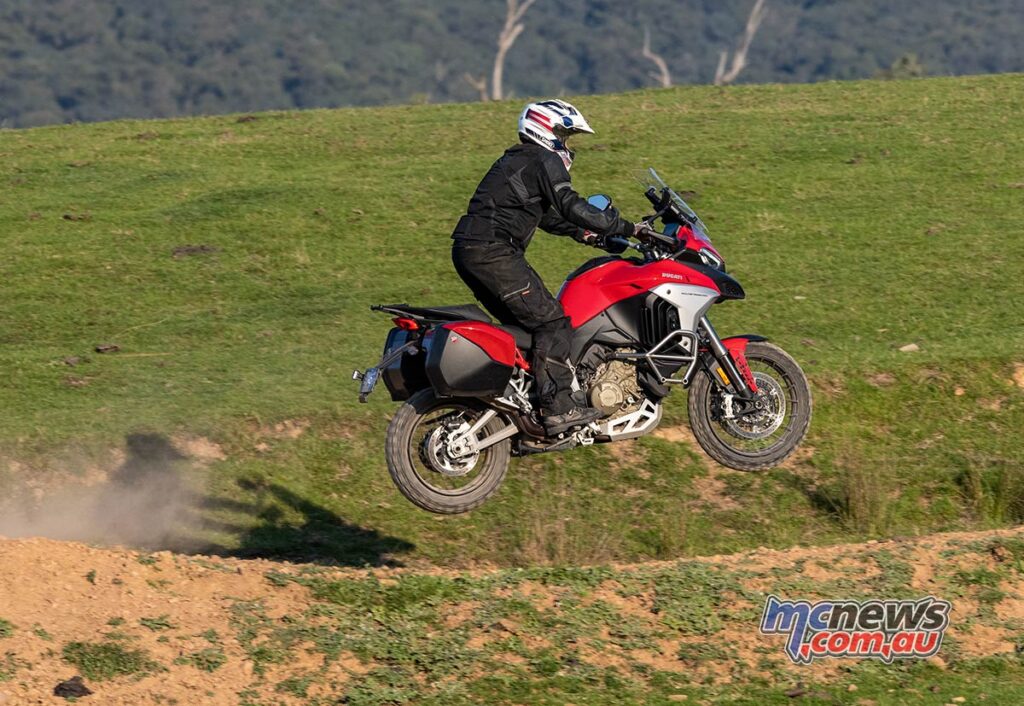
As tested here the Multistrada V4 S with ‘Travel + Radar’ package, plus the optional spoked rims and a few other bits and pieces, won’t get you all that much change from 40k. That’s a lot of coin, but this is also a hell of a lot of motorcycle.
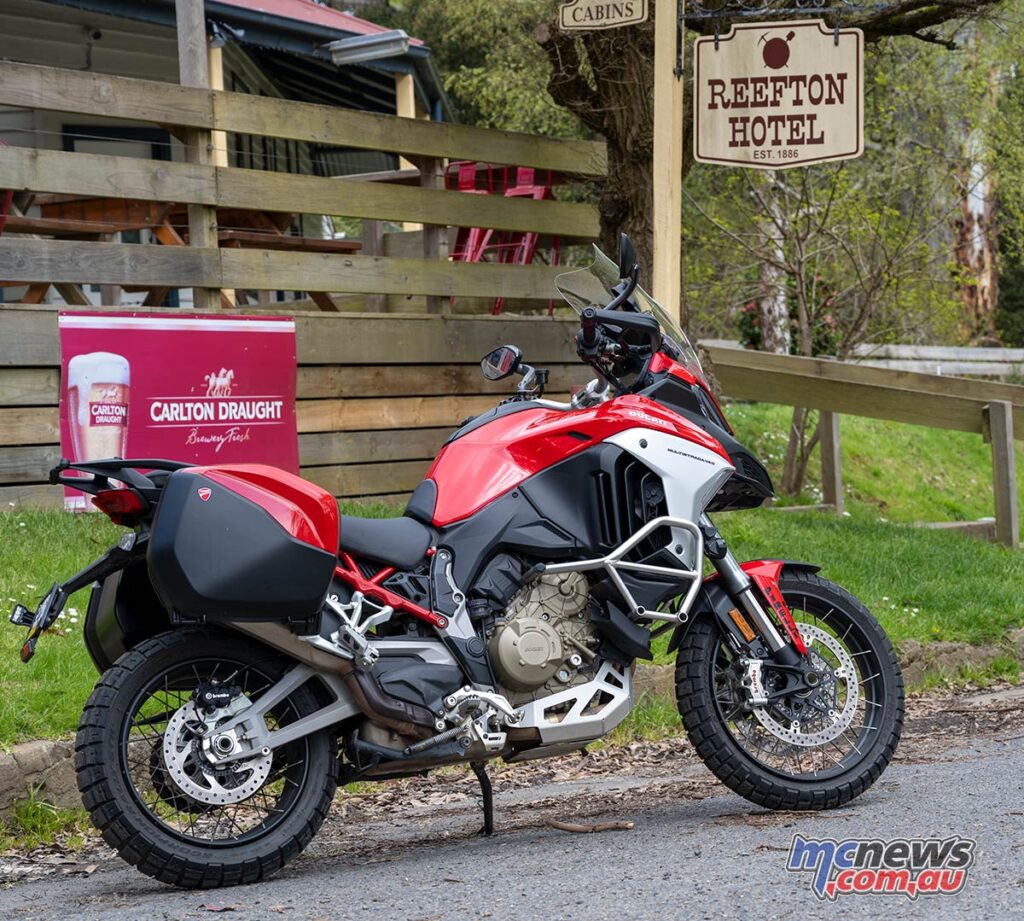
2021 Ducati Multistrada V4 S Specifications
| TYPE | V4 Granturismo, V4 – 90°, 4 valves per cylinder, counter-rotating crankshaft, Twin Pulse firing order, liquid cooled |
| DISPLACEMENT | 1,158 cc |
| BORE X STROKE | 83 mm x 53.5 mm |
| COMPRESSION RATIO | 14.0:1 |
| POWER | 170 hp (125 kW) @ 10,500 rpm |
| TORQUE | 12.7 kg (125 Nm, 92 lb ft) @ 8,750 rpm |
| FUEL INJECTION | Electronic fuel injection system, Øeq 46 mm elliptical throttle bodies with Ride-by-Wire system |
| EXHAUST | Stainless steel muffler, double catalytic converter and 4 lambda probes |
| GEARBOX | 6 speed |
| PRIMARY DRIVE | Straight cut gears, ratio 1.8:1 |
| RATIO | 1=40/13, 2=36/16, 3=34/19, 4=31/21, 5=23/29, 6=25/27 |
| FINAL DRIVE | Chain, front sprocket z16, rear sprocket z42 |
| CLUTCH | Multiplate wet clutch with hydraulic control, self-servo action on drive, slipper action on over-run |
| FRAME | Aluminum monocoque frame |
| FRONT SUSPENSION | Ø 50 mm fully adjustable usd fork, electronic compression and rebound damping adjustment with Ducati Skyhook Suspension |
| FRONT WHEEL | Light alloy cast, 3″ x 19″ |
| FRONT TYRE | Pirelli Scorpion Trail II 120/70 ZR 19 |
| REAR SUSPENSION | Fully adjustable monoshock, electronic adjustment with Ducati Skyhook Suspension, aluminium double-sided swingarm |
| REAR WHEEL | Light alloy cast, 4.5″ x 17″ |
| REAR TYRE | Pirelli Scorpion Trail II 170/60 ZR 17 |
| WHEEL TRAVEL (FRONT/REAR) | 170 mm / 180 mm |
| FRONT BRAKE | 2 x Ø 330 mm semi-floating discs, radially mounted Brembo M50 Stylema monobloc 4-piston 2-pad callipers, radial master cylinder, Cornering ABS |
| REAR BRAKE | Ø 265 mm disc, Brembo 2-piston floating calliper, Cornering ABS |
| INSTRUMENTATION | 6.5″ TFT colour display with Ducati Connect and full-map navigation system |
| DRY WEIGHT | 218 kg |
| KERB WEIGHT* | 243 kg |
| SEAT HEIGHT | Adjustable, 840 mm – 860 mm |
| WHEELBASE | 1,567 mm |
| RAKE | 24.5° |
| TRAIL | 102.5 mm |
| FUEL TANK CAPACITY | 22 l |
| SAFETY EQUIPMENT | Riding Modes, Power Modes, ABS Cornering, Ducati Traction Control, Ducati Wheelie Control, Daytime Running Light, Ducati Cornering Light, Ducati Brake Light, Vehicle Hold Control |
| STANDARD EQUIPMENT | Ducati Skyhook Suspension, Ducati Quick Shift, Cruise control, Hands-free, Backlit handlebar switches, 6.5″ TFT colour display with Ducati Connect and full-map navigation system, Full LED headlight |
| WARRANTY | 24 months (48 months**), unlimited kilometres |
| MAINTENANCE SERVICE INTERVALS | 15,000 km / 24 months |
| Valve Clearance Interval | 60,000 km |
2021 Ducati Multistrada V4 Pricing
- Multistrada V4 – From $28,990 Ride Away
- Multistrada V4 S – From $33,490 Ride Away
- Multistrada V4 S Travel Package – From $35,990 Ride Away
- Multistrada V4 S Travel + Radar Package – From $37,590 Ride Away
- Multistrada V4 S Performance Package – From $35,690 Ride Away
- Multistrada V4 S Full Package – From $39,690 Ride Away
- Multistrada V4 Sport S Performance Package – From $36,790 Ride Away
- Multistrada V4 Sport S Full Package – From $40,690 Ride Away
- Multistrada V4 Pikes Peak – $45,400 Ride Away
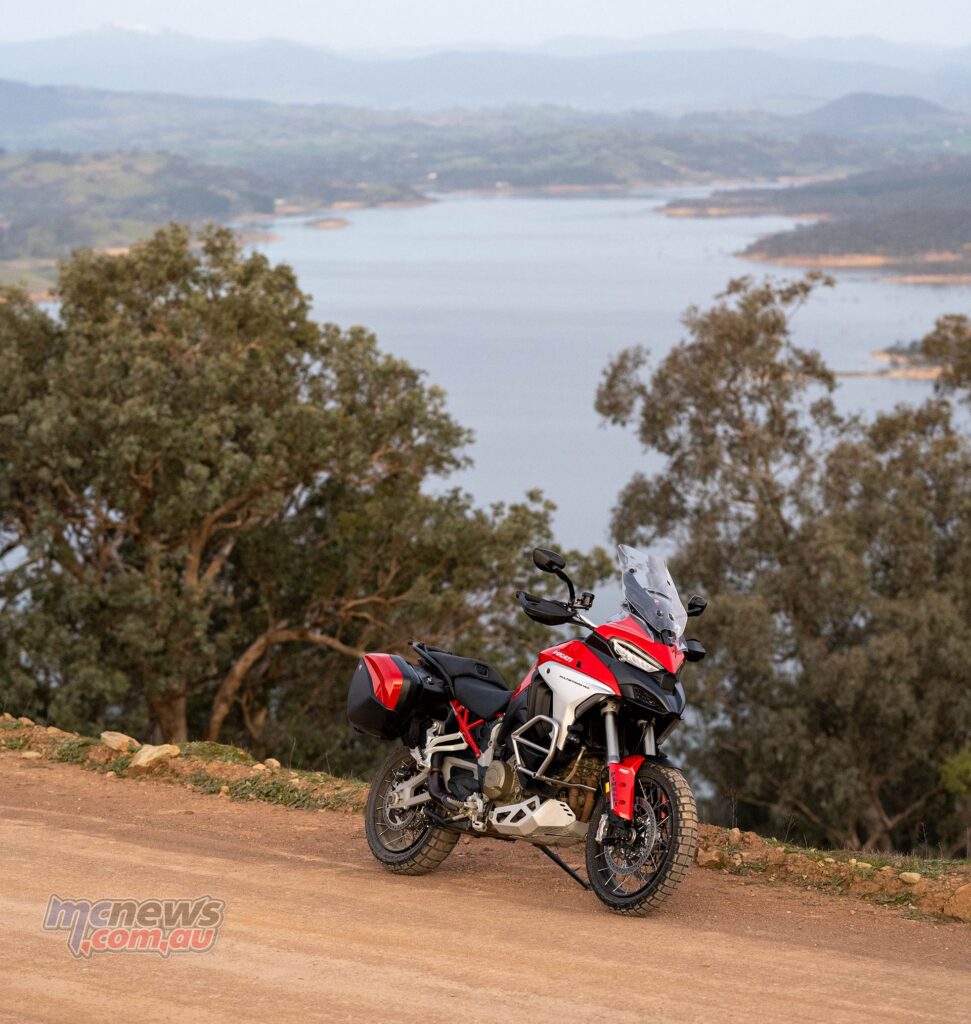
Source: MCNews.com.au

